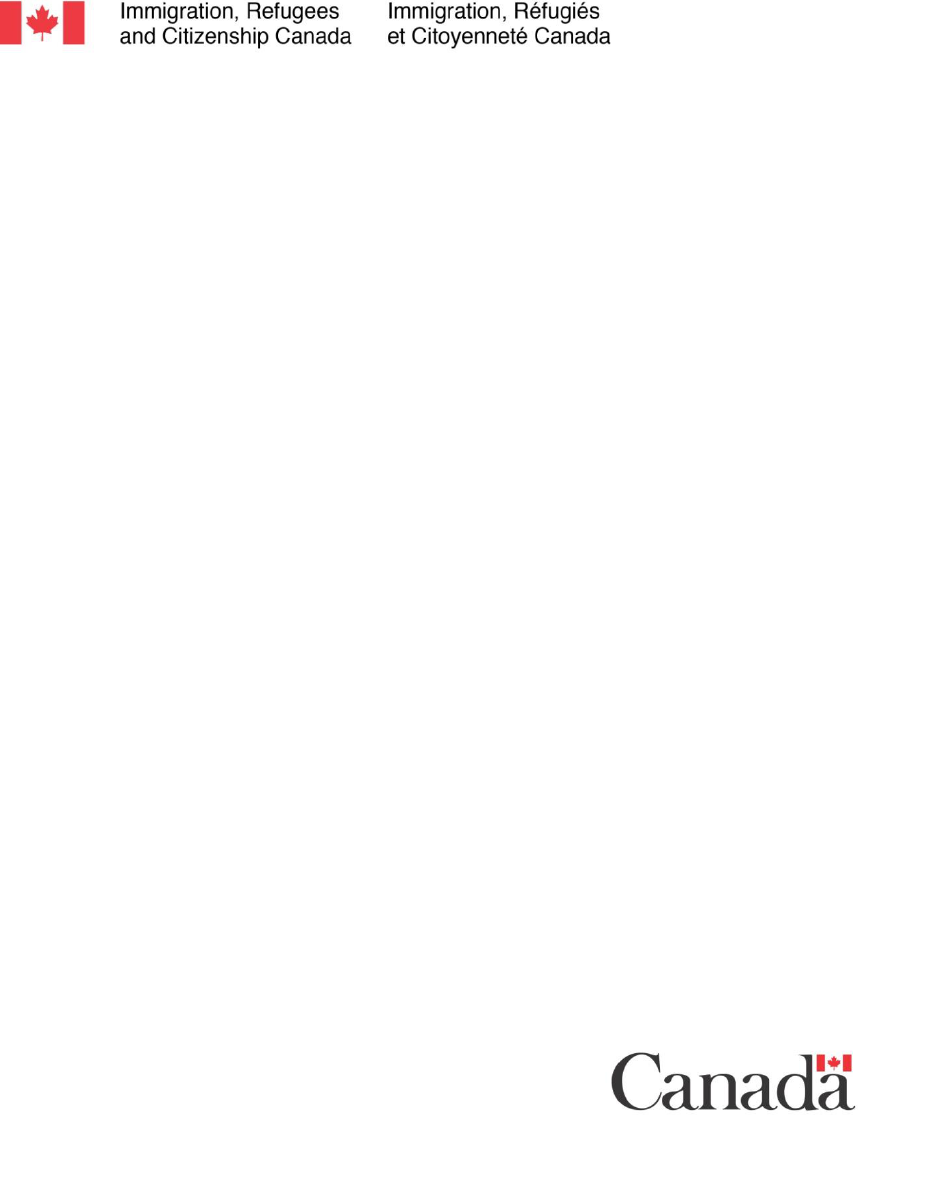
ENF 4
Port of Entry Examinations

2
Updates to the manual .............................................................................................................................. 7
Listing by date ........................................................................................................................................ 7
Acronyms used throughout this manual .................................................................................................. 11
1 What this manual is about .................................................................................................................... 14
2 Program objectives ............................................................................................................................... 14
3 The Act and its Regulations ................................................................................................................. 14
Statutory requirements relating to persons seeking entry into Canada ............................................... 14
3.1 Forms ............................................................................................................................................. 18
4 Instruments and delegations ................................................................................................................ 19
4.1 Powers and authorities of an officer .............................................................................................. 19
4.2 Designation of officers ................................................................................................................... 23
4.3 Ministerial delegations ................................................................................................................... 23
4.4 Designations of Ports of Entry (POE)s .......................................................................................... 23
5 Departmental policy .............................................................................................................................. 24
5.1 Examinations ................................................................................................................................. 24
5.2 Persons to be examined ................................................................................................................ 24
5.3 Primary and secondary examinations ........................................................................................... 24
5.4 Ministerial Instructions ................................................................................................................... 24
5.5 Duties and conduct of the Border Services Officer (BSO) ............................................................ 25
5.6 End of examination ........................................................................................................................ 25
6 Definitions ............................................................................................................................................. 26
7 Primary Inspection Line (PIL) examinations ......................................................................................... 27
7.1 Memorandum of Understanding with Immigration, Refugees and Citizenship Canada (IRCC) ... 27
7.2 Immigration secondary referral list................................................................................................. 28
7.3 Liaison with officers at the PIL ....................................................................................................... 28
7.4 Responsibilities of primary examining officers ............................................................................... 29
7.5 Primary examination questions ...................................................................................................... 29
7.6 Criminality ...................................................................................................................................... 31
7.7 Referral of FNs with medical conditions ........................................................................................ 31
7.8 CBSA referral forms ....................................................................................................................... 32
8 Secondary examinations ...................................................................................................................... 33
8.1 Immigration Secondary examinations ........................................................................................... 33
8.2 Responsibilities of examining BSOs at Immigration Secondary .................................................... 34
8.3 Right to counsel at POE examinations .......................................................................................... 34
8.4 Use of interpreters ......................................................................................................................... 35
8.5 Confidentiality ................................................................................................................................ 37
3
8.6 Pre-questioning procedures ........................................................................................................... 38
8.7 Global Case Management System (GCMS) checks ..................................................................... 38
8.8 Basic questioning ........................................................................................................................... 38
8.9 Verifying electronic/digital devices ................................................................................................. 40
8.10 Travel Documents Issued by Canada for Non-Citizens .............................................................. 41
9 Examining Canadian citizens at POEs ................................................................................................. 41
9.1 The right to enter Canada .............................................................................................................. 41
9.2 Examination of Canadian citizens ................................................................................................. 41
9.3 Determining Canadian citizenship ................................................................................................. 41
9.4 Establishing citizenship without documents .................................................................................. 42
9.5 Citizenship record searches .......................................................................................................... 43
9.6 Canadian Travel Documents ......................................................................................................... 43
10 Examining people who are registered under the Indian Act at POEs ................................................ 44
10.1 Determining status of registration under the Indian Act .............................................................. 44
10.2 Establishing status of registration under the Indian Act without documents ............................... 45
10.3 American Indians who are not registered in Canada .................................................................. 45
10.4 Haudenosaunee passport ............................................................................................................ 46
11 Examining Permanent Residents (PRs) at POEs .............................................................................. 46
11.1 Rights of PRs ............................................................................................................................... 46
11.2 Verifying PR status ...................................................................................................................... 47
11.3 Establishing PR status without documents .................................................................................. 47
11.4 Investigating PRs for inadmissibility ............................................................................................ 47
11.5 Permanent Resident Card ........................................................................................................... 49
11.6 Prescribed document ................................................................................................................... 49
11.7 Permanent resident cards with one-year validity date ................................................................. 50
11.8 Travel document .......................................................................................................................... 50
11.9 Coding on the travel document .................................................................................................... 51
11.10 Persons appealing the loss of PR status ................................................................................... 51
11.11 PRs holding other travel documents .......................................................................................... 52
11.12 Residency obligation for PRs..................................................................................................... 52
11.13 Issuing removal orders for failure to comply with PR obligations .............................................. 52
11.14 Other inadmissibility allegations ................................................................................................ 53
11.15 Arrest and detention of PRs ....................................................................................................... 53
11.16 Seizing PR visas and permanent resident cards ....................................................................... 53
12 Examining FNs seeking to become PRs at POEs ............................................................................. 54
12.1 Permanent resident visas and Confirmation of Permanent Residence (CoPR) documents ....... 54
12.2 Examination of FNs with PR visas/CoPR .................................................................................... 54
12.3 GCMS check ................................................................................................................................ 55
12.4 Documents required by FNs seeking PR status .......................................................................... 56
12.5 Confirmation of Permanent Residence document [IMM 5688] .................................................... 56
12.6 Changes in marital and family status ........................................................................................... 59
12.7 Common-law partners ................................................................................................................. 59
12.8 Dependent children with common-law partners .......................................................................... 60
12.9 Procedure for dealing with children whose marital or family status has changed ....................... 60
12.10 Medical surveillance .................................................................................................................. 61
12.11 Family members arriving before the principal applicant ............................................................ 61
4
12.12 Arrival of the principal applicant prior to family members .......................................................... 62
12.13 Expired or cancelled PR visa / CoPR ........................................................................................ 62
12.14 Counselling new PRs ................................................................................................................. 62
13 Examination of FNs at POEs .............................................................................................................. 62
13.1 Visa requirements for temporary residents .................................................................................. 63
13.2 Exemptions from a visa requirement ........................................................................................... 63
13.3 Re-entry into Canada without a visa ............................................................................................ 64
13.4 Examples of situations applying R190(3)(f) ................................................................................. 65
13.5 Foreign representatives posted to Canada ................................................................................. 65
13.6 Affirmations for visas ................................................................................................................... 66
13.7 U.S. government officials ............................................................................................................. 66
13.8 Courtesy visas ............................................................................................................................. 66
13.9 Parents and Grandparents Extended Stay Temporary Resident Visa (Super Visa) ................... 67
13.10 Expired temporary resident visas .............................................................................................. 67
13.11 Notification to visa office if a visa holder is refused entry .......................................................... 67
13.12 Electronic Travel Authorization (eTA) and eTA Expansion (eTA-X).......................................... 68
13.13 eTA exemptions ......................................................................................................................... 69
13.14 eTA validity and cancellation ..................................................................................................... 69
13.15 Document requirements for FNs ............................................................................................... 70
13.16 Passport and travel document exceptions ................................................................................. 70
13.17 Examining passports ................................................................................................................. 71
13.18 Valid visas in expired passports ................................................................................................ 71
13.19 Evidence of U.S. citizenship ...................................................................................................... 71
13.20 Conditions imposed on temporary residents ............................................................................. 72
13.21 Duration of temporary resident status ....................................................................................... 72
13.22 Six-month entry .......................................................................................................................... 73
13.23 Entry for more or less than six months ...................................................................................... 73
13.24 When to document a temporary resident on a Visitor Record (VR) .......................................... 73
13.25 Issuing VRs ................................................................................................................................ 74
13.26 Imposing, varying or cancelling conditions on temporary residents .......................................... 74
13.27 Situations where specific conditions may be considered .......................................................... 75
13.28 Deposits and Guarantees .......................................................................................................... 76
13.29 Counselling temporary residents ............................................................................................... 76
13.30 Recovering missing, abducted and exploited children .............................................................. 76
13.31 Examining foreign students ....................................................................................................... 76
13.32 Maritime procedures .................................................................................................................. 77
13.33 Examining foreign workers ........................................................................................................ 77
13.34 Refugee claimants ..................................................................................................................... 79
13.35 Vulnerable persons .................................................................................................................... 79
13.36 Biometrically enrolled FNs and PRs .......................................................................................... 81
13.37 Collection of Biometrics at POEs ............................................................................................... 81
14 Dual intent .......................................................................................................................................... 82
15 Temporary Resident Permits (TRPs) ................................................................................................. 83
15.1 Process at the POE for persons approved for a TRP by a visa office......................................... 83
15.2 Issuing a TRP approved by a visa office ..................................................................................... 83
15.3 Process for initiating a TRP at the POE ...................................................................................... 84
15.4 Assessment of need and risk when issuing a TRP ..................................................................... 84
15.5 GCMS remarks ............................................................................................................................ 86
15.6 Public policy: Fee exemption for certain TRPs ............................................................................ 87
5
15.7 TRPs issued in high-profile, complex, sensitive or contentious cases ........................................ 88
15.8 National Interest TRPs ................................................................................................................. 88
15.9 Designated authority to issue a TRP ........................................................................................... 89
15.10 TRP file folder retention and storage ......................................................................................... 89
15.11 Validity of TRPs ......................................................................................................................... 89
15.12 TRPs valid for re-entry to Canada ............................................................................................. 90
16 Persons allowed into Canada by law ................................................................................................. 90
16.1 Persons under removal order who are refused entry to another country .................................... 90
16.2 Persons with certificates of departure who are refused entry to another country ....................... 91
16.3 Mutual Legal Assistance in Criminal Matters Act (MLACMA) ..................................................... 91
16.4 Court transfer orders .................................................................................................................... 93
16.5 Persons extradited to Canada from countries other than the U.S. .............................................. 94
17 Examining persons who may be medically inadmissible ................................................................... 94
17.1 FNs seeking entry for medical treatment ..................................................................................... 94
17.2 FNs living with HIV/AIDS and the excessive demands criteria ................................................... 96
18 Options for dealing with inadmissibility and incomplete examinations ............................................... 96
18.1 Further examination ..................................................................................................................... 96
18.2 Direction to leave Canada ........................................................................................................... 97
18.3 Direct back ................................................................................................................................... 98
18.4 Direct back and refugee claimants arriving at the land POEs from the U.S. ............................... 98
18.5 Detention for examination .......................................................................................................... 100
18.6 Allowing the withdrawal of an application to enter Canada ....................................................... 100
19 Examinations that may lead to prosecution ..................................................................................... 101
19.1 Procedures................................................................................................................................. 101
19.2 Criminal Code offence discovered by a designated officer ....................................................... 102
19.3 Arrest and caution ...................................................................................................................... 103
19.4 Canadian citizens ...................................................................................................................... 103
19.5 Note-taking................................................................................................................................. 103
19.6 Completing suspended examinations of FNs (refer to section 19.2) ......................................... 103
20 Unauthorized border crossings ........................................................................................................ 104
21 Media Cases ..................................................................................................................................... 104
22 Disembarkation and Roving Teams (DART) .................................................................................... 105
22.1 DART overview .......................................................................................................................... 105
22.2 DART mandate and objectives .................................................................................................. 106
22.3 DART activities .......................................................................................................................... 106
22.4 Intelligence-based targeting of airline flights ............................................................................. 107
22.5 DART procedures ...................................................................................................................... 109
22.6 Communication and cooperation with partners ......................................................................... 114
22.7 Suspected human smugglers .................................................................................................... 115
22.8 Potential prosecutions ............................................................................................................... 116
6
22.9 Interviewing Canadian citizens, PRs and persons registered under the Indian Act .................. 116
22.10 Training .................................................................................................................................... 117
22.11 Uniforms and appropriate protective and defensive equipment .............................................. 117
22.12 Statistical and intelligence reports ........................................................................................... 118
23 Alternate means of examination (AME) ............................................................................................ 118
23.1 Trusted Traveller Programs (TTPs) ........................................................................................... 118
24 Advance passenger information (API) and passenger name record (PNR) .................................... 118
24.1 API information .......................................................................................................................... 118
24.2 PNR information ........................................................................................................................ 119
24.3 Disembarkation and Roving Team (DART) ............................................................................... 120
25 Entering data on previously deported persons (PDP) into the Canadian Police Information
Centre (CPIC) ........................................................................................................................................ 120
25.1 POE procedures for completing the Authorization to Return to Canada (ARC) application ..... 120
25.2 Completing an ARC application in GCMS ................................................................................. 121
25.3 Amending an ARC decision in GCMS ....................................................................................... 121
25.4 Effect of ARC decisions on the PDP database .......................................................................... 122
25.5 Remedial action at POEs ........................................................................................................... 122
26 Foreign Missions and International Organizations Act (FMIOA) ...................................................... 123
27 FOSS/GCMS enforcement flag amendments .................................................................................. 123
27.1 Background ................................................................................................................................ 123
27.2 Considerations ........................................................................................................................... 124
27.3 Procedures for amending an enforcement flag ......................................................................... 124
27.4 Enforcement flags on Canadian citizens and persons registered under the Indian Act ............ 124
Appendix A Memorandum of Understanding between IRCC and the CBSA ........................................ 125
Appendix B Quarantine Operations Centres ......................................................................................... 125
Public Health Agency of Canada (PHAC) ......................................................................................... 125
Appendix C Record of Direct Backs for Refugee Claimants at the Land Border .................................. 125
Appendix D Temporary resident permit (TRP) annual compliance review and checklist ..................... 127

7
Updates to the manual
Listing by date
2024-02-28
4 Instruments and delegations – included wording about training.
Appendix D Temporary resident permit (TRP) annual compliance review and checklist
– included annual TRP compliance review.
2023-07-05
Section 15.5 – made the items mandatory to be included in GCMS remarks.
Section 15.5 – inserted plain language descriptions of mandatory elements.
Section 15.5 – added guidance on equating foreign criminal charges.
Section 15.5 – added the requirement for the name of any approving authority or
the name of any officer entering remarks on behalf of another officer to be
documented in the remarks.
Section 15.5 – TRP narrative example added
2022-05-18
Entire document reviewed to: fix grammatical errors, fix broken links, add acronyms
and links, update form numbers and replace some terminology.
Updated all sections according to the more recent policies and guidelines such as
PDI, OB and SBB.
Section 5 - added information on the PIK.
Section 7 - merged sections 7.9 & 7.10 and sections 7.2 & 7.7
Section 8 – removed former 8.2 and created section 8.9 on electronic devices and
8.10 travel documents issued to non-citizens.
Section 9 - removed previous section 9.6.
Section 12 - removed previous section 12.5, 12.11 et 12.12, and added section
12.10 on medical surveillance.
Section 13 - added information on NDC and Edison, section 13.9 on PG visa, 13.37
on collection of biometrics, removed previous sections 13.28 to 13.32 and updated
13.12 to include eTA-X.
Section 17 – 17.2 was removed and added to 7.8.
Section 21 - created a new section on Media cases.
Section 25 - removed previous sections 25.1 to 25.3.
Section 27 - remove previous sections 27.4 and 27.5.
2020-09-23
Section 3 – Clarified wording around obligations
Section 3 – Added Section R41(d)
Section 3 – Updated Section R183 to include R183(1)(d)
Section 3.1 – Changed IMM1262 to BSF821

8
Section 4.1 – Clarified Section A55(3) to include inadmissibilities under sections A34,
35, 36, and 37
Section 8.7 – Added Certificate of Indian Status and Secure Certificate of Indian
Status as examples of identity documents
Section 10 – Clarified wording around “right to enter and remain in Canada”
Section 10.1 – Added wording around the Temporary Confirmation of Registration
Document, and updated address
Section 11.10 – Clarified wording around GCMS
Section 13 – Clarified wording around foreign nationals
Section 13.14 – Clarified wording around BSO MD
Section 13.20 – Added new COVID-19 conditions under R183(1)(d)
Section 13.24 – Added use of Visitor Records in cases of work permit exemption for
clergy under R186(l)
Section 13.25 – Clarified BSO cancellation authorities concerning temporary
residents
Section 13.27 – Clarified to whom people should be addressing their cheques when
paying deposits or posting guarantees
Section 15.3 – Clarified wording and added missing links
Section 15.4 – Added Indigenous cultural considerations as factor to consider
Section 15.6 – Emphasized wording for clarity
Section 15.9 – Designated authority to issue a TRP expanded for clarification
Section 16.2- Updated the text to refer to the right manual
Section 22.10 – Added further example of training for DART officers
Section 25.1- Updated the text to refer to the right manual
Section 25.2- Updated the text to refer to the right manual
Appendix D: Updated the TRP checklist
Entire document reviewed to replace “registered Indian” with “people registered
under the Indian Act”
Entire document reviewed to fix grammatical errors
Entire document reviewed to fix broken links
2019-08-15
Section 8.8 – Additional information has been added on how to conduct GCMS checks
2019-02-01
Section 10 – Updates to port of entry processing of people who are registered under
the Indian Act
Section 10.1 – Change made to federal contact information from INAC to Indigenous
Services Canada (ISC); clarification of determination of registered Indian status
Section 10.2 – Clarification of the procedure for establishing registered Indian status
without documents
Section 10.3 – Clarification of port of entry processing of American Indians
2016-12-23
Section 4 on Instruments of Delegation expanded for clarification
Section 4.2 on Delegation of Officers amended persons to officers
Section 10.1 on Determining Registered Indian status updated for clarification
Section 11.4 on investigating permanent residents for inadmissibility amended

9
Section 12.1 on Permanent resident visas wording updated for clarification
Section 12.6 on Confirmation of Permanent Residence form [IMM 5292B]updates and
procedures Section of completing the Confirmation of Permanent Residence
document
Section 13.14 on eTA validity and cancellation amended
Sections 13.3 and 13.4 on re-entry into Canada on original visa amended
Section 28 on Open Skies Treaty deleted
Entire document updated CIC to IRCC
Entire document updated to reflect changes for FOSS to GCMS where appropriate
A number of l links updated to become functional throughout document
Request to make hyperlinks in the table of contents visible (blue)
2016-03-18
Sections 12.12 and 12.13 on entrepreneurs have been deleted, as conditions are no
longer imposed at ports of entry.
2016-02-10
Sections 3 and 4.1 – added subsections 16(1.1) and 16(2.1) of IRPA on the
requirement of the person concerned to appear before an officer for an examination
and for an interview, respectively.
Section 9.3 – updated to include document validity dates.
Section 9.7 – formerly Emergency passports, updated for clarity.
Section 12.3 – updated to include new information on merging client identification
numbers.
Section 13.2 – updated to include Puerto Rico as part of the United States and a link
to the TWOV/CTP Standard Operating Procedures found on Atlas.
Section 13.3 – updated to include Puerto Rico as part of the United States.
Section 13.11 – updated to include TRPs.
Section 13.18 – updated for clarity.
Section 13.19 – updated to include the U.S. SENTRI card.
Section 13.24 – updated for clarity.
Section 13.32 – updated for clarity.
Section 13.37 – updated for clarity.
Section 15.3 – new procedures.
Section 15.7 – new procedures.
Section 25.4 – information on recovering removal costs.
Appendix B – updated addresses.
Appendix D – deleted and replaced with link to TWOV/CTP Standard Operating
Procedures in section 13.2.
Appendix E – renamed Appendix D and updated with new procedures for reporting
and consulting.
2015-08-01
Section 7.5 – addition of Electronic Travel Authorization (eTA) to part of the basic
questioning during primary examination.
Section 8.9 – addition of eTA to part of the basic questioning during secondary
examination.

10
Section 11.5 – update concerning the documents with which Canadian permanent
residents must travel in order to return to Canada by air mode.
Section 13.12, section 13.13 and section 13.14 – added to reference the eTA
regulations, exemptions, and validity.
Appendix D – updated to include reference to the eTA requirement.
Updates to the manual prior to 2015

11
Acronyms used throughout this manual
Acronyms
Definitions
AME
Alternate means of examination
API
Advanced Passenger Information
ARC
Authorization to Return to Canada
BOC
Border Operations Centre
BSO
Border Services Officer
BSOMD
BSO Minister’s Delegate
CAQ
Québec Acceptance Certificate
CBSA
Canada Border Services Agency
CCA
Customs Controlled Areas
CDRP
Commercial Drivers Registration Program
CDT
Control and Defensive Tactics
CIC
Citizenship and Immigration Canada
CID
Criminal Investigations Division
CIS
Certificate of Indian Status
CoPR
Confirmation of Permanent Residence
CPC-S
Citizenship Case Processing Centre in Sydney
CPIC
Canadian Police Information Centre
CPR
Cardiopulmonary resuscitation
CSIS
Canadian Security Intelligence Service
CSQ
Québec Selection Certificate
CTP
China Transit Program
D&D
Designation and Delegation
DART
Disembarkation and Roving Team
DHS
Department of Homeland Security
DLI
Designated Learning Institution
DOB
Date of birth
DOS
U.S. State Department
EDISON TD
Electronic Documentation and Information System on Investigation
Networks with information on Travel Documents
EDL
Enhanced Driver’s License
EIC
Enhanced Identification Card
EMT
Emergency Medical Technician
ESDC
Employment and Social Development Canada
ESS
Employee Self-Service
eTA
Electronic Travel Authorization
eTA-X
Electronic Travel Authorization Expansion
ETC
Enhanced Tribal Card
FAST
Free and Secure Trade
FMIOA
Foreign Missions and International Organizations Act
FN
Foreign National
FOSS
Field Operations Support System
FRT
Flexible Response Team
GAC
Global Affairs Canada
GBV
Gender-Based Violence
GCMS
Global Case Management System
IAD
Immigration Appeal Division
IATA
International Air Transport Association

12
ICAO
International Civil Aviation Organization
ICES
Integrated Customs Enforcement System
ICET
Immigration and Customs Enforcement Team
ICS
Integrated Customs System
ID
Immigration Division or Identifier
IDA
Improperly Documented Arrival
IFHP
Interim Federal Health Program
IME
Immigration Medical Examination
INAC
Indigenous and Northern Affairs Canada
IPIL
Integrated Primary Inspection Line
IRB
Immigration and Refugee Board
IRCA
Initial Refugee Claimant Assessment
IRCC
Immigration, Refugee and Citizenship Canada
IRPA
Immigration and Refugee Protection Act
IRPR
Immigration and Refugee Protection Regulations
ISC
Indigenous Services Canada
LMIA
Labor Market Impact Assessment
LO
Liaison Officer
MD
Minister’s Delegate
MHB
Migration Health Branch
MLACMA
Mutual Legal Assistance in Criminal Matters Act
MOU
Memorandum of Understanding
MRZ
Machine Readable Zone
NCB
Non-Computer Based Entry
NCIC
National Crime Information Centre
NDC
National Document Centre
NGO
Non-governmental organization
NHQ
National Headquarters
NI-TRP
National Interest TRP
NIV
Non-immigrant visa
OB
Operational Bulletin
OIC
Order in Council
OSC
Operations Support Centre
PAXIS
Passenger Information System
PDI
Program Delivery Instructions
PDP
Previously Deported Person
PHAC
Public Health Agency of Canada
PHLU
Public Health Liaison Unit
PIK
Primary Inspection Kiosk
PIL
Primary Inspection Line
PNR
Passenger Name Record
POB
Place of birth
POE
Port of Entry
PP
Protected Person
PR
Permanent Resident
RCMP
Royal Canadian Mounted Police
RPD
Refugee Protection Division
SARS
Severe Acute Respiratory Syndrome
SAWP
Seasonal Agricultural Worker Program
SBB
Shift Briefing Bulletin
SCIS
Secure Certificate of Indian Status

13
SENTRI
Secure Electronic Network for Travellers Rapid Inspection
SFV
Systematic Fingerprint Verification
SIN
Social Insurance Number
SMU
Statement of Mutual Understanding
SP
Study Permit
SRT
Single Reporting Tool
SSI
Support System for Intelligence
TCRD
Temporary Confirmation of Registration Document
TELO
Time, Employment, Lookout, Other
TEPS
Travellers Entry Processing System
TRP
Temporary Resident Permit
TRV
Temporary Resident Visa
TT
Targeting Travellers
TTP
Trusted Traveller Program
TWOV
Transit Without Visa Program
U.S.
United States
UCI
Unique Client Identifier
UNHCR
United Nations High Commissioner for Refugees
USINS
United States Immigration and Naturalization Service
USLPR
United States Lawful Permanent Resident
VR
Visitor record
VTIP
Victims of Trafficking in Persons
WP
Work Permit
WRC
Warrant Response Centre
XDC
Office of Protocol

14
1 What this manual is about
This manual describes how a Border Services Officer (BSO) conducts primary and secondary
immigration examinations of:
Canadian citizens;
persons registered under the Indian Act;
permanent residents (PR);
foreign nationals (FNs) (including permanent residence applicants, temporary
resident permit (TRP) holders and protected persons).
2 Program objectives
The objectives of the Act for conducting primary and secondary immigration examinations
are the following:
facilitate the entry of persons who have the right to enter Canada;
facilitate the entry of FNs into Canada for purposes such as trade and commerce,
tourism, international understanding, and cultural, educational, and scientific
activities;
protect the health and safety of Canadians and maintain the security of Canadian
society;
promote international justice and security by denying access to Canadian territory to
those who are criminals or security risks; and
offer safe haven to persons with a well-founded fear of persecution based on race,
religion, nationality, political opinion, or membership in a particular social group, as
well as those at risk of torture or cruel and unusual punishment.
3 The Act and its Regulations
The authority for a BSO to conduct an examination comes from a variety of sources,
including the Immigration and Refugee Protection Act (IRPA), the Immigration and Refugee
Protection Regulations (IRPR) and the Designation of Officers and Delegation of Authority
documents.
Statutory requirements relating to persons seeking entry into Canada
The IRPA and IRPR provide for a number of different provisions that impose certain
obligations on prescribed classes of persons seeking entry and provide BSOs with a number
of different authorities and options when conducting examinations.
Relevant
provisions
Requirement
Explanation
A10.01
Provide
biometrics
A person who makes a claim, application or request
must follow the procedures set out in the regulations
for the collection and verification of biometric
information

15
A11(1)
Apply for visa
A foreign national (FN) must, before entering
Canada, apply to an officer for a visa or for any other
document required by the Regulations.
A11(1.01)
Apply for eTA
A FN must, before entering Canada, apply by means
of an electronic system for an electronic travel
authorization.
A15(1)
Submit to an
examination
An officer is authorized to proceed with an
examination if a person makes an application to enter
Canada.
A16(1)
Tell the truth and
produce required
documentation
A person who makes an application to enter Canada
must answer truthfully all questions put to them for
the purpose of the examination and must produce a
visa and all relevant evidence and documents
reasonably required by an officer.
A16(1.1)
Appear for an
examination
A person who makes an application must, on request
of an officer, appear for an examination.
A16(2)
Fingerprints,
photographs and
a medical
examination
A FN must produce photographic and fingerprint
evidence if required to establish identity or
compliance with the Act and, on request, must
submit to a medical examination.
A16(2.1)
Appear for an
interview
conducted by the
Canadian
Security
Intelligence
Service (CSIS)
and answer all
questions
truthfully
A FN who makes an application must, on request by
an officer, appear for an interview for the purpose of
an investigation conducted by CSIS under section 15
of the Canadian Security Intelligence Service Act for
the purpose of providing advice or information to the
Minister under section 14 of that Act. They must
answer truthfully all questions put to them during the
interview.
A16(3)
Evidence relating
to identity
An officer may require or obtain from a PR or a FN
who is arrested, detained, subject to an examination
or subject to a removal order, any evidence —
photographic, fingerprint or otherwise — that may be
used to establish their identity or compliance with
this Act.
A18(1)
Appear for an
examination
A person who seeks to enter Canada must appear for
an examination to determine whether they have a
right to enter Canada or may be authorized to enter
and remain in Canada.
A18(2)
Transit
passengers
A person who seeks to leave an area at an airport
that is reserved for passengers who are in transit or
who are waiting to depart Canada must appear for an
examination. Other examples could include when a
flight is cancelled due to the weather or persons
denied at US pre-clearance.
A20(1)(a)
To become a
permanent
resident
A FN who seeks to become a PR must establish that
they hold the visa or other document required under
the Regulations and have come to Canada to
establish permanent residence.

16
A20(1)(b)
Entry of
temporary
residents
A FN who seeks to become a temporary resident
must establish that they hold the visa or other
document required under the Regulations and will
leave Canada by the end of the period authorized for
their stay.
A20(2)
Provincial
selection criteria
A FN who seeks to become a PR and intends to reside
in a province that has sole responsibility for the
selection of FNs under a federal-provincial agreement
pursuant to A9(1) must also establish that they hold
a document issued by the province, indicating that
the competent authority of the province is of the
opinion that the FN complies with the province’s
selection criteria.
A28(1)
Residency
obligation
A PR must comply with the residency obligation in
A28 with respect to every five-year period.
A29(2)
Obligations of
temporary
residents
A temporary resident must comply with any
conditions imposed under the Regulations and with
any requirements under the Act and must leave
Canada by the end of the period authorized for their
stay.
A30(1)
Work and study
A FN may not work or study in Canada unless
authorized to do so under the Act.
R6, R7, R8
and R9
Permanent and
temporary
resident visas,
work and study
permits
A FN must obtain these documents prior to entering
Canada.
R12.001
Request or
application at
port of entry
A person may only make a request or application at a
port of entry that provides collection services for
biometric information.
R12.1
Collection of
biometric
information
Claims, applications and requests requiring the
collection of biometric information.
R12.5
Verification of
biometric
information
When seeking to enter Canada and when directed,
the person shall provide their biometric information
for verification.
R27(1) and
R27(2)
Appear for
examination
A FN must appear without delay before an officer at a
POE for an examination or, if entering at a place
other than a POE, must appear without delay for
examination at the nearest POE.
R28
Making an
application
A person who seeks to enter Canada is deemed to be
making an application pursuant to A15(1) and must
therefore submit to an examination.
R30
Submit to
medical
examination
A FN who seeks to enter Canada for more than six
months and who has resided or stayed in certain
countries in excess of six months is required to
submit to a medical examination and must hold a
medical certificate stating that they are not
inadmissible on health grounds.
R37
End of
examination
See section 5.6 of this manual for details.

17
R40
Direction to
leave
Except in the case of protected persons within the
meaning of A95(2) and in the case of refugee
protection claimants, an officer who is unable to
examine a person who is seeking to enter Canada at
a POE will, in writing, direct the person to leave
Canada.
R41
Direct back
An officer may temporarily direct back a FN who is
seeking to enter Canada from the United States if:
the examination cannot be completed;
the Minister’s delegate (MD) is not available to
review the report;
the admissibility hearing cannot be held by the
Immigration Division (ID);
the FN is prohibited from entering Canada by
an order or regulation made by the Governor
in Council under the Emergencies Act or the
Quarantine Act.
R42
Withdrawing an
application
An officer who examines a FN who is seeking to enter
Canada and who has indicated that they want to
withdraw their application to enter Canada will allow
the FN to withdraw their application and leave
Canada, unless a report is being or has been
prepared under 44(1) of the Act.
R43
Mandatory
conditions in
cases requiring
further
examination
A FN who has been authorized to enter Canada under
A23 must comply with the following conditions:
report in person for the completion of the
examination or the admissibility hearing;
not engage in any work in Canada;
not study in Canada; and
report in person at a POE if they withdraw
their application to enter Canada.
comply with all requirements imposed on
them by an order or regulation made under
the Emergencies Act or the Quarantine Act.
R45
Deposits or
guarantees
An officer can require of a person or a group of
persons seeking to enter Canada the payment of a
deposit or the posting of guarantee, or both, to
guarantee compliance with any conditions imposed.
R50
Documents:
applicants for
permanent
residence
A FN seeking to become a PR requires a PR visa as
well as a passport, travel document or other
document prescribed by the Regulations. For detailed
requirements, see R50(1), (2) and (3).
R51
Obligations of
applicants for
permanent
residence
A FN in possession of a PR visa who seeks at a POE to
become a PR must inform the officer if:
they have become or ceased to be a spouse,
common-law partner or conjugal partner after
the visa was issued; or
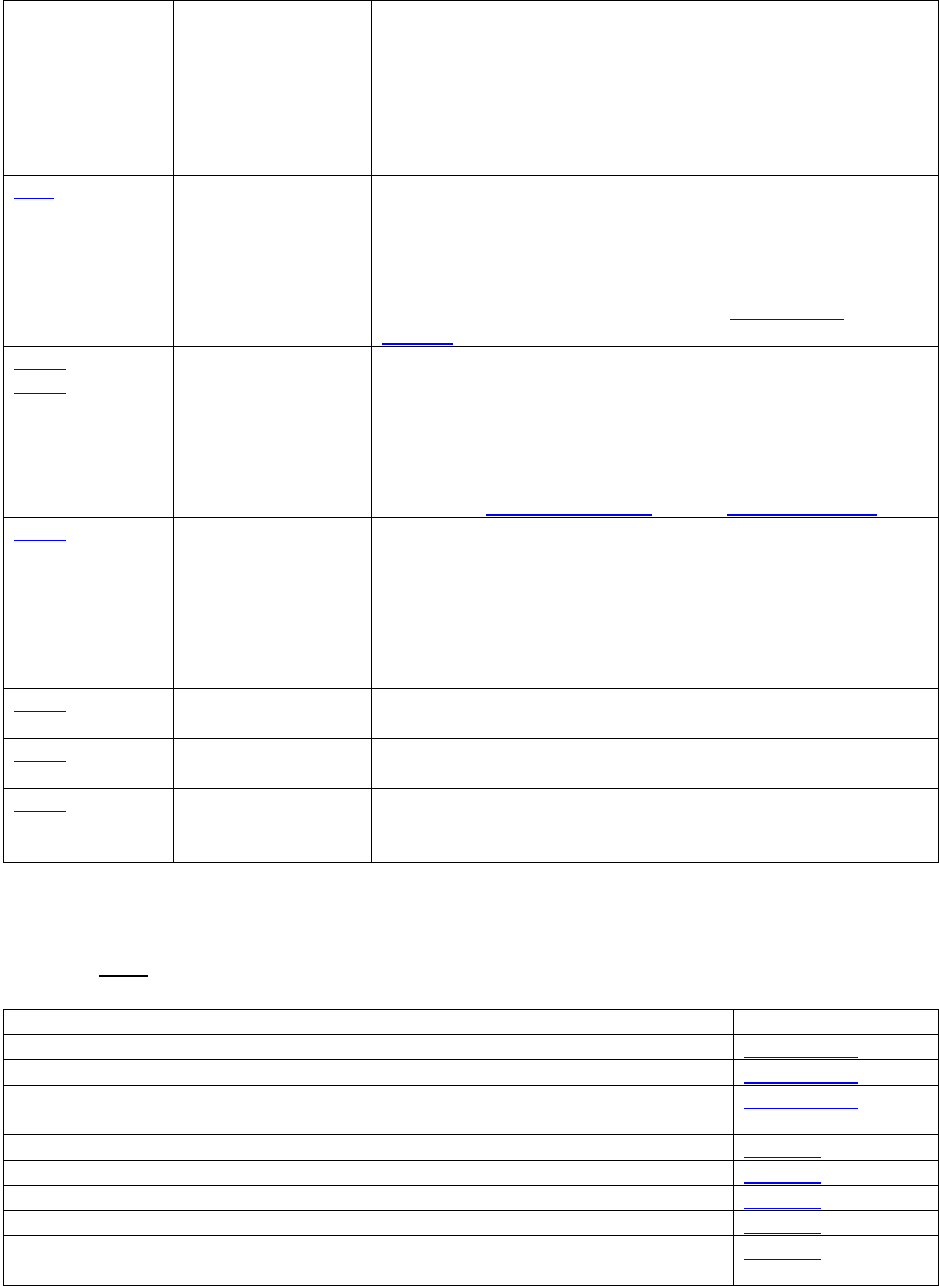
18
material facts relevant to the issuance of the
visa have changed or were not divulged when
the visa was issued.
The FN must also establish that they and their family
members, whether accompanying or not, meet the
requirements of the Act and Regulations.
R52
Documents:
temporary
residents
A FN who seeks to become a temporary resident
must hold one of the following documents, which
must be valid for the period authorized for their stay:
a passport, a travel document or another document
prescribed by the Regulations. For detailed
requirements and exceptions, see R52(1) and
R52(2).
R183 and
R185
General and
specific
conditions on
temporary
residents
A temporary resident must comply with conditions of
their entry, including the requirement to leave by the
end of the period authorized for their stay and not to
work or study unless authorized by the Act or
Regulations and comply with all requirements
imposed on them by an order or regulation made
under the Emergencies Act or the Quarantine Act.
R184
Conditions on
crew members
A FN who enters Canada as a crew member or in
order to become a crew member is required to join
the means of transportation within the period
imposed or, if no period is imposed, within 48 hours
after they enter Canada. A crew member must leave
Canada within 72 hours after ceasing to be a crew
member.
R196
Authorization to
work
A FN must not work in Canada unless authorized by a
work permit (WP) or the Regulations.
R212
Authorization to
study
A FN may not study in Canada unless authorized by a
study permit (SP) or the Regulations.
R243
Requirement to
pay removal
costs
A FN is not allowed to return to Canada if they were
removed from Canada at the expense of Her Majesty
and the debt incurred from removal is outstanding.
3.1 Forms
These are some of the forms used during a POE examination
Form title
Form number
Medical Surveillance Undertaking
IMM 0535B
Visitor Record
IMM 1097B
Authorization to Return to Canada Pursuant to Section 52(1) of the
Immigration and Refugee Protection Act
IMM 1203B
Direction to Leave Canada
BSF503
Direction to Return to the United States
BSF505
Notice of Seizure of Travel and/or Identity Document(s)
BSF698
Notice to appear for a proceeding under subsection 44(2)
BSF504
Referral Under Subsection 44(2) of the Immigration and Refugee
Protection Act for an Admissibility Hearing
BSF506
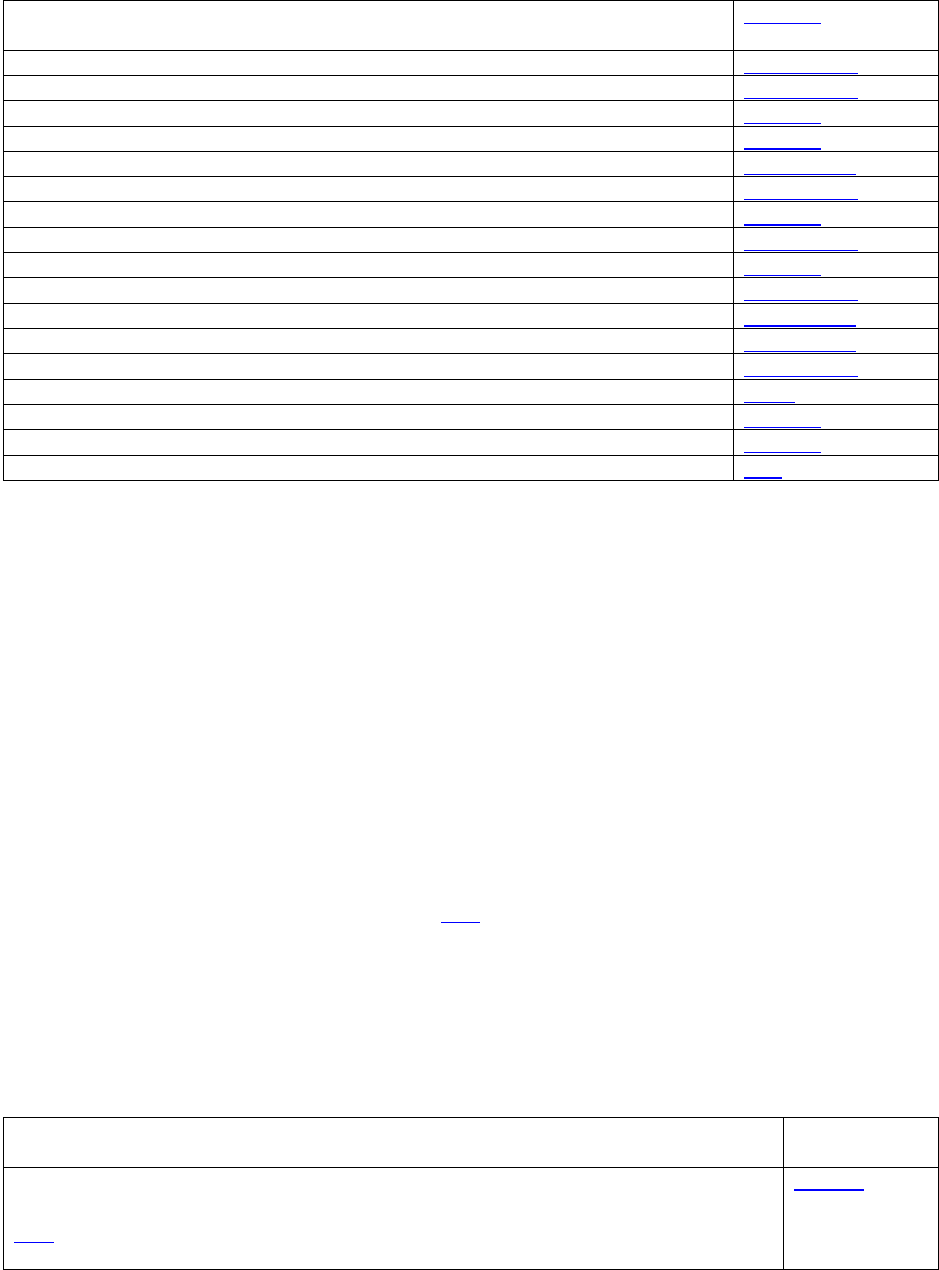
19
Acknowledgement of Conditions – The Immigration and Refugee
Protection Act
BSF821
Allowed to Leave Canada
IMM 1282B
Declaration
IMM 1392B
Confirmation by Transporter Regarding Passenger(s) Carried
BSF453
Notice to Transporter
BSF502
Voluntary Departure - Confirmation
IMM 5021E
Temporary Resident Permit
IMM 1263B
Subsection A44(1) Highlights Port of Entry Cases
BSF516
Port of Entry (POE)/Secondary Examination Record
IMM 5059B
Entry For Further Examination or Admissibility Hearing
BSF536
Supplementary Identification Form
IMM 5455B
Authority to Release Personal Information to a Designated Individual
IMM 5475E
Use of a Representative
IMM 5476E
Record of Direct Backs for Refugee Claimants at the Land Border
Appendix C
Customs Referral Form (Airport)
E311
In-Person Processing – Air Mode
BSF423
Secondary Referral - Border
BSF235
Report to Warehouse (Border: Commercial Drivers)
Y28
4 Instruments and delegations
The instruments explain who has been designated to act as an officer and who has been
delegated the authority to do anything that may be done by the Minister, under the Act or
Regulations, depending on their position/level. There are two IRPA Designation and
Delegation Instruments. One is made by Immigration, Refugees and Citizenship Canada
(IRCC) and the other by the Canada Border Services Agency (CBSA). In each instrument,
IRCC and the CBSA designate and delegate authorities to their own officers, as well as to
officers in other departments. Therefore, it is important to read both documents to know all
authorities linked to a position under IRPA.
Any person in a prescribed position and making decisions under a designated or delegated
authority must successfully complete all official prerequisite CBSA training required for
those positions before exercising their designated or delegated authority.
These instruments can be found in manual IL 3, Designation of Officers and Delegation of
Authority.
4.1 Powers and authorities of an officer
The following sections provide authority for an officer relating to the examination of persons
seeking to enter Canada:
Powers of an officer under IRPA and IRPR
Relevant
provisions
Authority to conduct an examination where a person makes an application.
R28 specifies that every person who seeks to enter Canada is making an
application and is, therefore, subject to an examination.
A15(1)
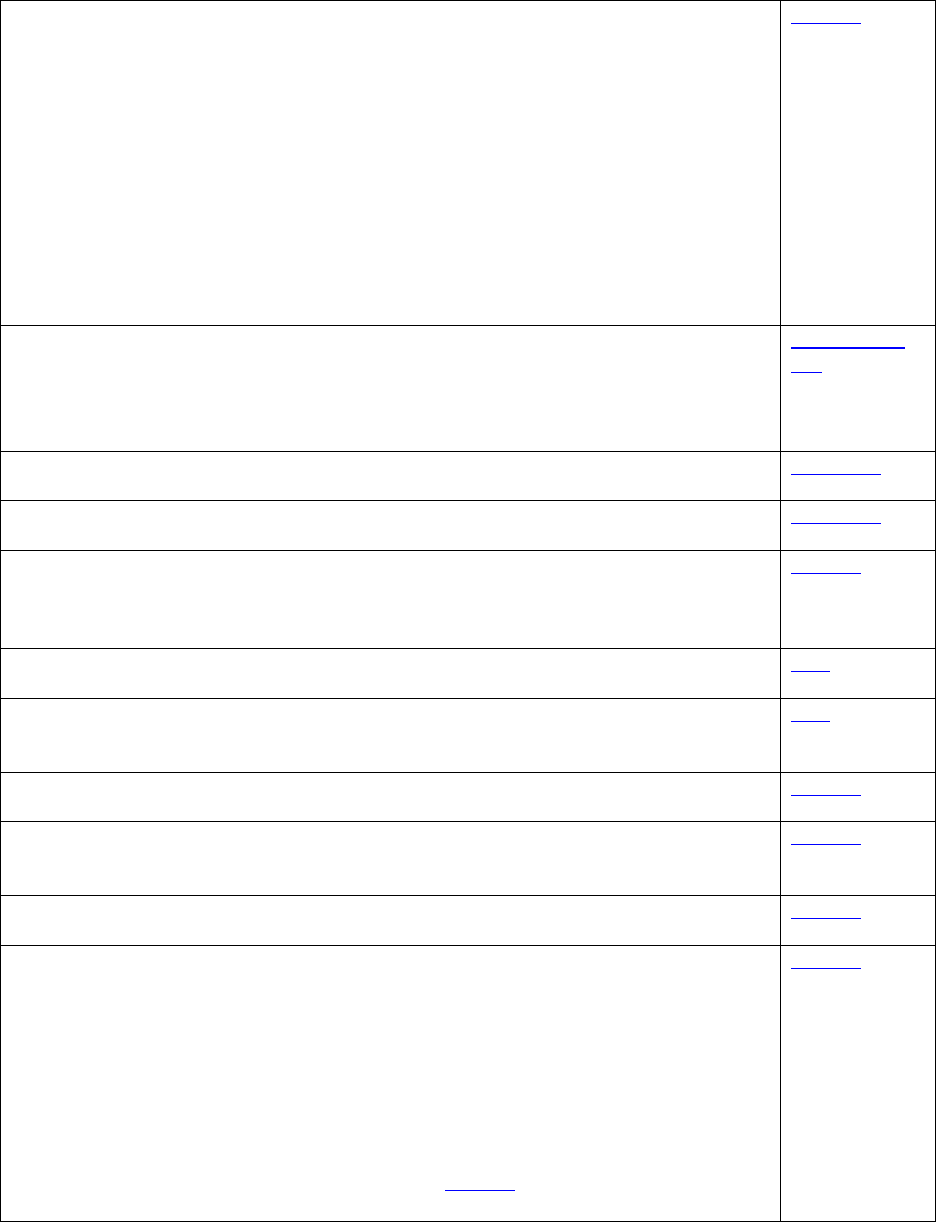
20
Authority to:
board and inspect any means of transportation bringing persons to
Canada;
examine any person carried by that means of transportation and
any record or document respecting that person;
seize and remove any record or document to obtain copies or
extracts; and
hold the means of transportation until the inspection and
examination are completed.
This section provides authority for officers to commence an examination
prior to the passenger’s arrival at the Primary Inspection Line (PIL).
A15(3)
Authority to require a person being examined to produce a visa and all
relevant evidence that the officer reasonably requires, including, in the
case of FNs, photographic and fingerprint evidence.
Authority to request that the FN undergo a medical examination.
A16(1) and
(2)
Authority to require that a person who makes an application appear for an
examination.
A16(1.1)
Authority to require that a FN who makes an application appear for an
interview conducted by CSIS.
A16(2.1)
Authority to require or obtain from a PR or FN who is arrested, detained,
subject to an examination or subject to a removal order, any evidence —
photographic, fingerprint or otherwise — that may be used to establish
their identity or compliance with this Act.
A16(3)
Authority to authorize a person to enter Canada for the purpose of further
examination or an admissibility hearing at a later time or date.
A23
Authority to issue a TRP, if justified by the circumstances, to a foreign
national who is inadmissible or who does not meet the requirements of the
Act, and to cancel the TRP at any time.
A24
Authority to prepare a report on PRs and FNs who are believed to be
inadmissible.
A44(1)
Authority to impose conditions, including the payment of a deposit or the
posting of a guarantee for compliance with any conditions considered
necessary, on a PR or FN who is the subject of a report.
A44(3)
Authority to authorize a FN against whom a removal order has been
enforced to return to Canada.
A52(1)
Authority to issue a warrant for the arrest and detention of a PR or FN who
the officer has reasonable grounds to believe is inadmissible and:
is a danger to the public or
is unlikely to appear for
examination,
an admissibility hearing or
removal from Canada or
a proceeding that could lead to the making of a removal
order by the Minister under A44(2)
A55(1)
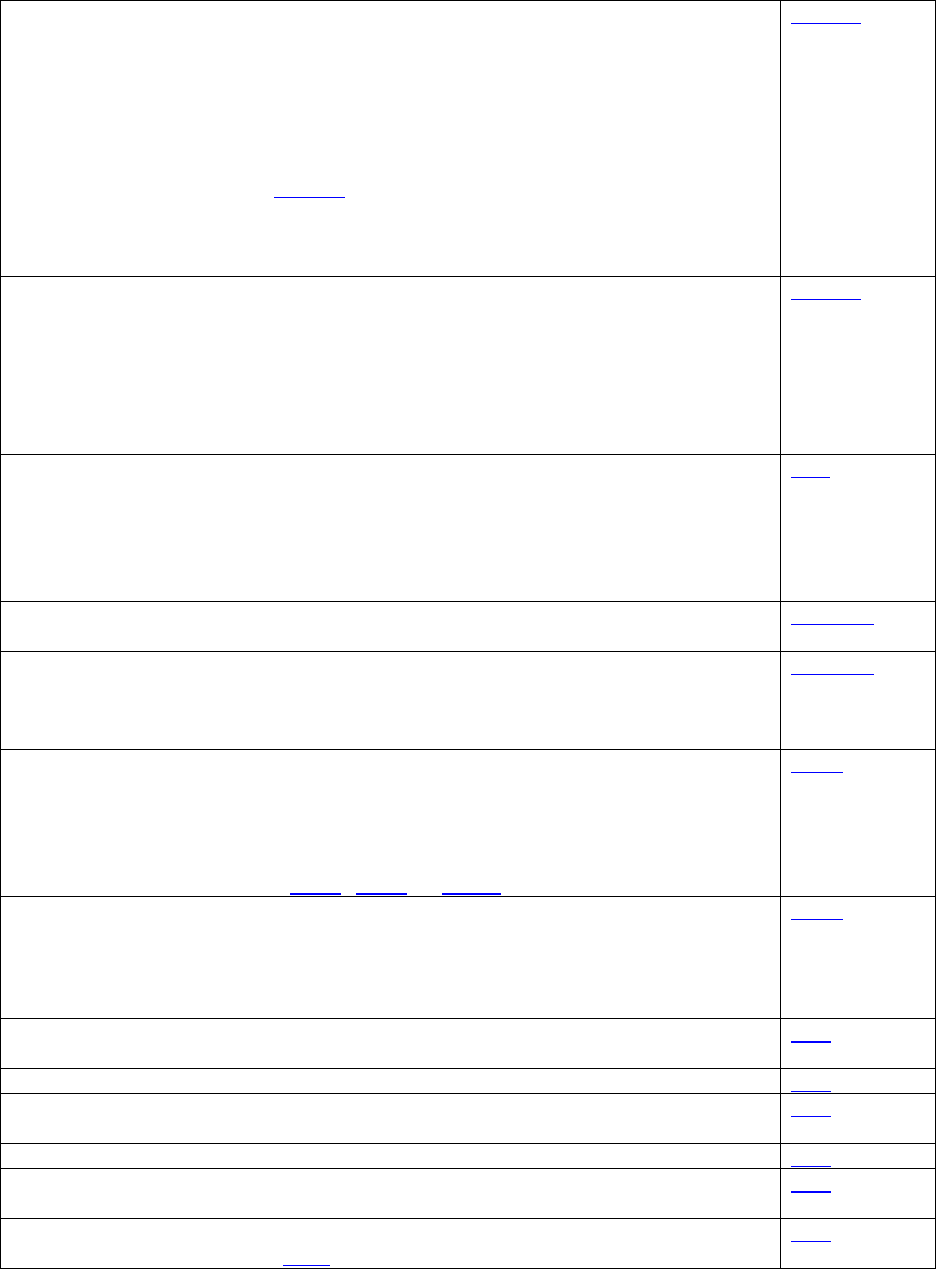
21
Authority to arrest and detain, without a warrant, a foreign national, other
than a protected person:
who the officer has reasonable grounds to believe is inadmissible
and is a danger to the public or is unlikely to appear for
examination, an admissibility hearing, removal from Canada, or at
a proceeding that could lead to the making of a removal order by
the Minister under A44(2); or
if the officer is not satisfied with the identity of the FN in the course
of any procedure under the Act.
A55(2)
Authority to detain a PR or FN on entry to Canada if the officer considers it
necessary to do so in order to:
complete an examination or
has reasonable grounds to suspect that the person is inadmissible
under A34, 35, 36, or 37.
A55(3)
Authority to order the release from detention of a PR or a FN before the
first detention review by the ID if the officer is of the opinion that the
reasons for the detention no longer exist. This section also allows the
officer to impose any conditions, including the payment of a deposit or the
posting of a guarantee for compliance with the conditions, that the officer
considers necessary.
A56
Authority to conduct eligibility determinations for refugee claimants and to
refer eligible claims to the Refugee Protection Division (RPD).
A100(1)
Authority of officers to have the authority and powers of peace officers for
the purpose of enforcing the provisions of the Act, including provisions
with respect to the arrest, detention and removal of a person from
Canada.
A138(1)
Authority to search any person seeking to come into Canada, including
their luggage, personal effects, and means of transportation, if the officer
believes on reasonable grounds that the person has not revealed their
identity or has hidden documents relevant to their admissibility or has
committed, or possesses documents that may be used in the commission
of an offence referred to in A117, A118 or A122.
A139
Authority to seize and hold any means of transportation, document, or
other thing that the officer believes on reasonable grounds was
fraudulently or improperly obtained or used or that the seizure is
necessary to prevent its fraudulent or improper use or to carry out the
purposes of the Act.
A140
Authority to impose, vary or cancel conditions on any person who is
obliged to submit to a medical examination.
R32
Authority to conduct alternate means of examination.
R38
Authority to direct a person who cannot be examined to leave Canada, in
writing, unless this person is a protected person or a refugee claimant.
R40
Authority to direct a FN to return to the United States temporarily.
R41
Authority to allow or to refuse to allow a FN to withdraw their application
to enter Canada and leave Canada.
R42
Authority to impose conditions on persons authorized to enter Canada for
further examination under A23.
R43

22
Authority to require the payment of a deposit or the posting of a
guarantee.
R45
Authority to impose conditions, including the period of time that a
temporary resident may remain in Canada.
R183
Authority to impose, vary or cancel specific conditions on a temporary
resident.
R185
Authority to issue a work permit if eligibility is met.
R200
Authority to issue a work permit on the basis of Canadian interests.
R205
Authority to issue a work permit on the basis the FN can not support
themselves without working.
R206
Authority to issue a study permit if eligibility is met.
R216
Authority to require a transporter to provide a written report with respect
to a stowaway.
R262
Authority to require a transporter to provide copies of a passenger’s ticket,
itinerary and information about travel and identity documents.
R264
Authority to require a transporter to assemble all members of the crew
aboard a vessel.
R266
Authority to require a transporter to provide a written report respecting a
FN who has ceased to be a member of the crew.
R268
Powers of officer under the Criminal Code
Relevant
provisions
Authority within the meaning of the Customs Act, the Excise Act or
the Excise Act, 2001 or a person having the powers of such an
officer to perform any duty in the administration of any of those
Acts.
Section CC2
Authority and powers of a peace officer, including those set out in
sections 487 to 492.2 of the Criminal Code to enforce IRPA.
Section CC2
Justification, when acting on reasonable grounds, in doing what is
authorized or required in the administration or enforcement of
Program Legislation, and in using as much force as necessary for
that purpose.
Section CC25
Justification to use as much force as is reasonably necessary to
prevent the commission of an offence (or to prevent anything
being done that on reasonable grounds to believe were it done
would be an offence) for which, if it were committed, the person
who committed it might be arrested without warrant, and would
be likely to cause immediate and serious injury to the person or
property of anyone.
Section CC27
Authority to arrest without warrant a person who has committed,
is committing or is about to commit a criminal offence.
Subsection CC495(1)
Limitations on when an officer will arrest a person without warrant
who has committed, is committing or is about to commit a criminal
offence.
Subsection CC495(2)
Authority to issue an appearance notice in lieu of arrest if the
offence is listed in section CC553.
Section CC497
Authority to release from custody a person arrested, without
warrant, for an offence other than one described in section CC496.
Subsection CC498(1)

23
Powers of officer under the Customs Act
Relevant provisions
In conjunction with section 2 of the Criminal Code, where the
definition of “peace officer” includes the term officer described at
CA2. The term “Officer” is defined for the purposes of the
Customs Act as a person employed in the administration or
enforcement of this Act, the Customs Tariff or the Special Import
Measures Act and includes any member of the Royal Canadian
Mounted Police (RCMP).
Section CA2
Lists the particular sections of the Customs Act that, if violated,
are punishable by either indictment or summary conviction;
officers, therefore, may arrest for contraventions of those
sections listed.
Section CA160
Authorizes designated officers, when at a customs office and
performing their normal duties, to make an arrest for a criminal
offence under any other Act of Parliament.
Subsection CA163.5(1)
4.2 Designation of officers
A6(1) authorizes the Minister of Immigration, Refugees and Citizenship Canada (IRCC) and
the Minister of Public Safety and Emergency Preparedness to designate officers or classes of
officers to carry out any purpose or provision of the Act. A designation is made, in most
cases, where the word “officer” is referred to in the Act or Regulations with respect to a
power, duty, requirement, or authority.
4.3 Ministerial delegations
A6(2) authorizes the Minister of IRCC and the Minister of Public Safety and Emergency
Preparedness to delegate powers to other persons. A delegation is made, in most cases,
where the word “minister” is referred to in the Act or Regulations with respect to a power,
duty, requirement, or authority. Certain ministerial powers, referred to in A6(3), may not be
delegated.
4.4 Designations of Ports of Entry (POE)s
The Minister has authority under R26 to designate a place as a POE. The purpose in
designating a POE is to ensure that persons seeking to enter Canada are aware of where
they are required to report for examination.
See a list of POEs with detailed information, including the types of services and hours of
operation.

24
5 Departmental policy
5.1 Examinations
A15(1) authorizes an officer to examine any person making an application in accordance
with the Act. This manual deals only with the examination of persons seeking to enter
Canada.
R28 stipulates that a person makes an application by:
submitting an application in writing;
seeking to enter Canada;
seeking to transit through Canada in airports as provided for by R35; or
making a claim for refugee protection.
5.2 Persons to be examined
A18(1) provides that every person who seeks to enter Canada, whether they intend to or
not, must appear for an examination.
A18(2) provides that this also applies to persons who, without leaving Canada, seek to
leave an area at an airport that is reserved for passengers who are in transit or who are
waiting to depart Canada.
5.3 Primary and secondary examinations
Every person seeking to enter Canada must appear for an examination to determine
whether they have a right to enter Canada or may become authorized to enter and remain
in Canada. The examination process at a POE may include a primary and a secondary
examination. Primary examinations are completed by a BSO at the PIL. In some airports,
travellers will use a Primary Inspection Kiosk (PIK) to verify their travel documents, confirm
their identity and complete an on-screen declaration. In some remote ports, an RCMP officer
may complete the primary examination. Immigration Secondary examinations are
conducted by a BSO at Immigration Secondary following a referral from a BSO at the PIL or
from the PIK. This manual refers to both primary and secondary examinations at a POE.
5.4 Ministerial Instructions
A15(4) provides that an officer will conduct an examination in accordance with any
instructions that the Minister of IRCC or the Minister of Public Safety and Emergency
Preparedness may give. The authority for the Ministers to give instructions to officers can be
used to ensure consistency in the application of the Act with respect to examinations.
Ministerial instructions are not regulations (see A93) but are nevertheless binding on
officers.

25
5.5 Duties and conduct of the Border Services Officer (BSO)
A BSO must deal with each person being examined in a courteous, professional and efficient
manner. If it is determined that the person has a right of entry under A19, the BSO must
not delay their entry into Canada.
A FN who is determined:
to be admissible, should be authorized into Canada as a temporary resident
with minimal delay; and
to be inadmissible, should be counselled accordingly and the BSO should
consider all options afforded by the IRPA and IRPR prior to making a decision.
A BSO should carefully examine all the facts before making a decision and, where
appropriate, explain the reasons for that decision to the traveller.
5.6 End of examination
R37 provides that the examination of a person seeking to enter or transit through Canada is
not final until one of the following outcomes takes place:
Outcome
Explanation
A final determination is made that
the person has a right to enter
Canada or is authorized to enter
Canada and the person leaves the
port of entry.
The Regulations provide that an examination is not
final until the person has left the controlled area of
the POE or, if no controlled area exists, has left the
POE.
For example, an examination may be continued if,
during a Customs Secondary examination, evidence
arises that indicates the person may be
inadmissible to Canada. If the person’s passport
has been stamped or even if the person has been
granted PR status, these decisions are not final and
may be revisited as long as the person has not left
the controlled area of the POE.
A person in transit departs from
Canada.
Certain passengers in transit through Canada are
not required to appear for examination if they
remain in a controlled area pending their onward
flight out of Canada. They are, nevertheless,
subject to examination. If they seek to leave, for
any reason, the area at an airport that is reserved
for passengers who are in transit or who are
waiting to depart Canada, they must report for
examination [A18(2)].
The person is allowed to leave
Canada, and their departure is
confirmed.
A BSO may determine a person to be inadmissible
and allow them to leave Canada pursuant to R42 if
no report referred to in A44(1) is prepared or
transmitted. The examination concludes once their
departure is verified. If, for any reason, the person
does not depart, the examination resumes.

26
Entry is authorized by the Minister
and the person leaves the port of
entry.
The Minister’s delegate, in reviewing a report
pursuant to A44(1), continues the examination of
the person seeking entry. If the Minister’s delegate
determines the report is not founded, the person
will be allowed to enter Canada, and the
examination will conclude when the person leaves
the POE.
A removal order is issued by the
Minister and the person leaves the
port of entry.
The Minister’s delegate, after reviewing a report
pursuant to A44(2), may issue a removal order.
The examination ends when the person leaves the
POE.
The Minister refers the case to the
ID for an admissibility hearing and
the person leaves the port of entry.
The Minister’s delegate, after reviewing a report
pursuant to A44(2), may determine that the report
is well founded and refer it to the ID of the
Immigration and Refugee Board (IRB) for an
admissibility hearing. The examination ends when
the person leaves the POE.
For refugee claims made at a POE,
the examination ends when the
later of the following occurs:
the officer determines that
their claim is ineligible under
A101 or the Refugee
Protection Division (RPD)
accepts or rejects their claim
under A107, or
a decision in respect of the
person is made under
A44(2) and the person
leaves the POE.
The point at which examination ends is different
where the person is a refugee claimant as the
application exists up until the claim has been
decided.
R37(2) provides delegated officers the authority to
examine a refugee claimant until a decision is made
in regards to the claim.
For more details, please consult section 11.6 of ENF
5, Writing 44(1) Reports.
A23 allows an officer to authorize a person to enter Canada for the purpose of further
examination or an admissibility hearing.
For more information on pre-removal risk assessments, see IRCC’s Program Delivery
Instructions.
For more information on removals, see ENF 10, Removals.
6 Definitions
Border services officer
(BSO)
A person designated as an officer by the Minister,
employed by the CBSA [A6(1)] [R2]
Canadian citizen (CC)
A citizen referred to in subsection 3(1) of the Citizenship
Act
Common-law partner
In relation to a person, an individual who is cohabiting with
the person in a conjugal relationship, having so cohabited
for a period of at least one year [R1(1)]

27
Convention refugee
A person who, by reason of a well-founded fear of
persecution based on race, religion, nationality,
membership in a particular social group or political opinion,
(a) is outside of their country of nationality and is unable
or, by reason of that fear, unwilling to avail themselves of
the protection of that country; or
(b) does not have a country of nationality, is outside the
country of their former habitual residence and is unable or,
by reason of that fear, unwilling to return to that country
[A96]
Foreign national
A person who is not a Canadian citizen or a PR; includes a
stateless person [A2(1)]
GCMS
Global Case Management System: IRCC/CBSA client
immigration database
Officer
A person designated as an officer by the Minister under
A6(1) [R2]
Permanent resident (PR)
A person who has acquired permanent residence status and
has not subsequently lost that status under A46 [A2(1)]
Protected person (PP)
A person on whom refugee protection is conferred and
whose claim or application has not subsequently been
deemed to be rejected because of cessation or vacation
proceedings [A95(2)]
Sterile transit area
An area in an airport where in-transit passengers, in-transit
pre-clearance passengers or goods that are in transit or
pre-controlled are physically separated from other
passengers and goods [R2]
7 Primary Inspection Line (PIL) examinations
The examination process usually commences upon the arrival of a person at a POE. This
may be a land border, an airport, a marine harbour or any other place designated as a POE.
BSOs at the PIL are delegated the authority to conduct the initial immigration examination
of persons seeking entry into Canada. BSOs at the PIL administer legislation and programs
by providing a wide range of inspection, examination and enforcement activities on behalf of
many government departments and agencies.
7.1 Memorandum of Understanding with Immigration, Refugees and
Citizenship Canada (IRCC)
On December 12, 2003, the CBSA was created, and immigration enforcement and
intelligence responsibilities under IRPA were transferred to this new agency from IRCC.
The purpose of the Memorandum of Understanding (MOU) is to define, in general terms, the
basis for cooperation between IRCC and the CBSA regarding:
the delivery of the immigration program;
information sharing; and
the provision of various services.

28
For more information on the roles and responsibilities of the CBSA and IRCC, see the full
text of the MOU.
7.2 Immigration secondary referral list
Paragraph 59 of part 2, chapter 1 of The People Processing Manual provides the
Immigration Secondary Referral List which contains the categories of persons who are
mandatory referrals for an Immigration examination, such as:
inadmissible persons under sections 34 to 42 of the IRPA;
persons whose citizenship or status is doubtful;
FNs refusing to answer questions;
FNs refused entry into another country;
persons whose documents, such as passport, seems doubtful;
immigration Lookouts;
Canadian citizens in possession of an emergency passport issued abroad;
PRs of Canada who have had extended absences from Canada;
FNs intending to stay longer than six (6) months;
FNs seeking medical treatment or appear ill;
Foreign workers and students on first entry.
BSOs at the PIL may also refer anyone else who they believe should be examined in more
detail.
Examples of types of referrals that should be sent to Immigration Secondary include cases
where the BSO at the PIL:
has doubts about the person’s identity;
suspects the FN may have a criminal record;
believes the FN may require documentation such as a WP or SP;
has concerns about the length of time the FN is requesting to stay in Canada in light
of their actual travel plans.
7.3 Liaison with officers at the PIL
BSOs at the PIL are encouraged to inquire about the results of their referrals to Immigration
Secondary. BSOs at Immigration Secondary do not operate under the same time constraints
as BSOs at the PIL and have more time to conduct immigration examinations effectively.
BSOs at Immigration Secondary should, whenever possible, provide feedback on the results
of referrals. Liaising between officers is a key element in developing and maintaining an
effective and positive working relationship with officers who conduct the primary portion of
the examination process. In addition, discussing cases allows BSOs at Immigration
Secondary to give guidance to BSOs at the PIL regarding immigration requirements. This
increases the quality of referrals from the PIL. BSOs working at the PIL are encouraged to
write in referral notes in IPIL when referring someone to secondary. See OBO-2019-030 for
more details.

29
7.4 Responsibilities of primary examining officers
BSOs conducting primary examinations are responsible for:
confirming the identity of the person and verifying that the biometric photograph
matches in PIL, when applicable;
questioning persons and reviewing documentation to determine whether persons
have a right to enter Canada (Canadians, PRs and persons registered under the
Indian Act) or are FNs who may be authorized to enter Canada as temporary
residents;
determining whether or not persons seeking entry into Canada are doing so as new
or returning PRs;
authorizing persons to enter Canada and stamping passports when required. As per
the CBSA Stamp Policy, which came into effect on April 2, 2012, BSOs are not
expected to notate stamps in passports at the PIL except in the following
circumstances:
o Officers will notate the stamp at the PIL (as per the CBSA Operational Bulletin
PRG-2018-40) when authorizing entry under the
Parents and Grandparents Extended Stay Temporary Resident Visa
(Super Visa), and
Authorized Period of Extended Stay;
o Officers may place a stamp in the holder’s passport on subsequent entry of
persons with a valid and subsisting status document.
If a stamp is placed in the passport, the officer will notate the initial
expiry according to the status document.
If a stamp is not placed in the passport, the officer will remind the
person of the initial expiry date;
referring persons for a more detailed Immigration Secondary examination when
appropriate, in accordance with the Immigration Secondary referral list; and
authorizing FNs to leave Canada or directing them to return to the U.S. at ports
where there are no BSOs present at the Immigration Secondary.
7.5 Primary examination questions
Primary examination questions are designed to elicit essential information about citizenship,
residency, intention, employment, length of stay and identity as quickly as possible.
Normally, the examining BSO at the PIL begins by asking one or more of the six primary
questions below. Under most circumstances, a BSO at the PIL does not need to ask all
questions of all travellers.
Issue
Question
Rationale
Identity
What is your
name?
If the BSO has any reason to doubt the person’s
identity, they will ask for the person’s name. A
comparison can then be made with the person’s
documents to determine if the name given is the same
as the name in the document.
Citizenship
What is your
citizenship?
By asking this question, the BSO can identify a person
who may enter Canada by right. It is rare that a
person who has a right to enter Canada be referred to
Immigration Secondary.

30
If the person is not Canadian, this question enables
the BSO to determine whether a passport, a visa or an
electronic Travel Authorization (eTA) is required to
enter Canada. If the person has a machine-readable
passport, the BSO does not necessarily have to ask
about citizenship. A passport reader, however, is no
substitute for a good verbal examination.
Residency
Where do you
reside?
This question helps the BSO to determine, should the
person answer they have status in Canada, what their
obligations and conditions are. If the person is a PR,
the BSO may ask the supplementary question “How
long have you been away?” The BSO at the PIL must
refer for Immigration Secondary examination all PRs
who may not comply with the residency obligation of
A28, which requires PRs to reside in Canada for at
least 730 days out of every five-year period to
maintain their status. The possible loss of PR status
under A46 can be further explored at a secondary
examination.
Intention
What is the
purpose of your
trip to Canada?
Once the BSO determines that the traveller is a FN,
they must establish why the FN is coming to Canada.
By asking this question, they can identify the need for
a referral to Immigration Secondary for control
purposes (for example, to become a PR, to work, or to
study).
Employment
Do you intend to
take or seek
employment while
in Canada?
If the BSO has not yet determined whether the person
is coming to Canada to work, this question ensures
that employment opportunities for Canadians are
protected and that the person will comply with
relevant employment regulations.
Length of
stay
How long do you
intend to stay in
Canada?
BSOs may allow a FN to enter Canada for a stay of up
to six months and should stamp the passport of a
person who is otherwise admissible. A FN who is
intending to remain in Canada for longer than six
months should be referred for a Immigration
Secondary examination.
The BSO at the PIL may ask additional questions as warranted but usually does not conduct
in-depth examinations. This would create line-ups and delays for the travelling public. A
BSO at the PIL who doubts the bona fides of a person or believes that a detailed
examination may be in order should refer the person to an Immigration Secondary
examination.
Most travellers seeking entry at an international airport will use a Primary Inspection Kiosk
(PIK) instead of being seen by a BSO at the PIL. Travellers in possession of an ePassport
will have the photo stored in their passport’s chip compared to their photo taken at the PIK
to authenticate their identity. If the traveller does not have an ePassport or the system was
unable to validate their identity, the podium officer will verify their identity by comparing
the photograph in the passport with that of the traveller in front of them. Also, travellers
who have previously had their biometrics enrolled will be asked to verify their identity via
fingerprint verification at PIK.

31
7.6 Criminality
BSOs at the PIL shall not ask a FN about criminality during a PIL examination. Questions
about criminality are better suited for Immigration Secondary, where BSOs have more time
to conduct a full examination and to question a person in a more private setting.
Consequently, when a BSO at the PIL suspects, through questioning, lookouts and IPIL, or
other indicators, that a FN may have a criminal record, the FN should be referred to an
Immigration Secondary examination. All BSOs at Immigration Secondary should take care
to ensure privacy by not questioning a person about criminality in the presence of
accompanying family members or other travellers.
National Crime Information Center (NCIC) queries cannot be conducted as a matter of
course and should never be done as a matter of routine. However, travellers can be queried
in NCIC if officers have reasonable suspicion indicating criminal activity. If the reasonable
suspicion (or reasonable grounds to suspect) standard has been met, name-based checks in
NCIC for an investigative purpose or for criminal history are authorized on persons
originating from or associated with the United States of America or any of its territories.
BSOs must have completed the mandatory training, M1126-P in the ESS self-service portal
prior to doing any NCIC query. Refer to OBO-2020-080 on authorized usage by CBSA of the
NCIC.
BSOs may refer to the NCIC Quick Reference Guide on Atlas for instructions on how to
query NCIC.
7.7 Referral of FNs with medical conditions
A38 states that FNs are inadmissible to Canada on health grounds if a medical officer has
concluded that the applicant’s health condition:
is likely to be a danger to public health;
is likely to be a danger to public safety; or
might reasonably be expected to cause excessive demand on health or social
services.
Referral for an Immigration Secondary examination is mandatory when a foreign national:
is seeking to enter Canada in order to undergo medical treatment; or
is obviously ill.
It is not possible, given the time constraints of the primary examination process, to assess
the health status of every FN seeking authorization to enter Canada. BSOs at the PIL should
adopt a practical approach based partly on visual risk assessment and partly on common
sense and experience.
BSOs should not be consciously looking for medical problems as part of their examination
but should refer for further examination those whom a reasonable person would judge to be
ill. Examples could include FNs who:
act abnormally;

32
have incoherent speech;
are on a stretcher or are accompanied by medical personnel (e.g., nurse, personal
physician, etc.);
exhibit obvious signs of illness.
Certain viruses can lead to widespread epidemics/outbreaks in a specific country and could
even lead to a global pandemic such as COVID-19 did. In the past, Ebola, Severe Acute
Respiratory Syndrome (SARS) and H1N1 swine flu have threatened the global populations.
In response to these epidemics, CBSA and Public Health Agency of Canada (PHAC) work
together to screen travellers who might be infected. BSOs at the PIL are to notify PHAC
immediately if they believe a person is showing signs of infection. A PHAC quarantine officer
will assess the person, either over the phone or in person depending on your work location,
and render an opinion. Each POE should have protocols in place for these types of situation.
BSOs can access a health specialist through the new PHAC Notification Line:
On occasion, a FN who is critically ill or injured will be transported to a hospital in Canada
via an ambulance. Due to the seriousness of the foreign national’s condition, the BSO may
feel that conducting a full primary or secondary examination is not advisable at that time.
The BSO should not unduly delay a person who needs urgent medical treatment.
Information should be obtained from the emergency medical technician (EMT) as to which
hospital the FN is being transported to and the FN’s passport should be seized so that the
BSO can conduct an examination when the FN is release from the hospital.
For more information on medical inadmissibility, see section 17 below or visit IRCC’s PDI on
the matter.
7.8 CBSA referral forms
There are various forms that a BSO at the PIL uses to refer a person to the Customs or
Immigration Secondary examination areas.
CBSA referral forms
Form
Use
Explanation
E311
Primarily
airports
The E311 form is completed by passengers on airplanes
destined to Canada and by some bus and train passengers. A
passenger presents the E311 form to the BSO at the primary
inspection booth, and the BSO verifies the information and
codes the form. This form is being phased out and replaced
with BSF423.
BSF423
Airports
The BSF423 is completed by a BSO when a passenger is
unable to use the PIK.
PIK
receipt
Airports with
PIK
Primary Inspection Kiosks (PIK) allow travellers to verify their
travel documents, confirm their identity and complete an on-
screen declaration. Once completed, the PIK will print a receipt
for the traveller to present to a BSO.

33
BSF235
(E67)
Land border
crossings and
ferry sites
The BSF235 form is completed by a BSO at the PIL at land
borders.
Y28
Land border
crossings and
ferry sites
The Y28 form is completed by a BSO at the PIL for commercial
drivers.
These forms facilitate the control and streaming of passengers, provide data for Statistics
Canada and are used to refer passengers to Customs and/or Immigration Secondary.
Note: The PIK receipt, E311 and BSF423 forms are not only a referral form but also a
declaration card. While travellers use PIK, complete an E311 or have a BSF423 completed
by a BSO in air mode, the BSF235 (E67) at land and marine modes is only issued if the
traveller or vehicle is referred to a secondary examination.
The forms carry a code by which the BSO at the PIL gives the reason for referral to a
secondary examination.
The immigration portion of the BSF235 (E67) is coded with four letters: T, E, L, and O.
When using the BSF235 (E67), the BSO at the PIL will circle the appropriate letter to
indicate the reason for referral.
TELO coding on the BSF235 (E67)
Letter
Meaning
Explanation
T
Time
The person intends to stay in Canada for an extended or unusual
period of time.
E
Employment
The person has indicated an intention to seek employment in
Canada.
L
Lookout
The person may be the subject of a “watch for” as being of
interest to CBSA’s BSOs in Immigration Secondary.
O
Other
This includes any other reason not covered above. In this case,
the PIL officer will typically write a few words on the BSF235 (E67)
to guide the secondary examination. Officers should be cautious
when recording any information on the BSF235 (E67), as the
person who is being referred may be able to read the form.
8 Secondary examinations
8.1 Immigration Secondary examinations
An Immigration Secondary examination is usually initiated by a referral from a BSO at the
PIL. It can also result from a referral from a BSO, such as a Disembarkation and Roving
Team (DART) member who has boarded and inspected an airplane, bus, train or ship before
any of the passengers have presented themselves at the PIL. An Immigration Secondary
examination is usually conducted by a BSO in the Immigration Secondary area but may be
conducted by a BSO at Customs Secondary if no BSO at Immigration Secondary is available
at the POE. An Immigration Secondary examination may also be conducted by telephone or
other electronic means if the person is in a remote location, where no BSO is available.

34
8.2 Responsibilities of examining BSOs at Immigration Secondary
BSOs conducting Immigration Secondary examinations are responsible for facilitating the
entry of Canadians, persons registered under the Indian Act, and PRs as well as bona fide
FNs and identifying inadmissible persons.
Responsibilities of such officers include:
examining persons seeking entry to Canada to determine admissibility;
facilitating the entry of Canadians, PRs and persons registered under the Indian Act;
confirming identity and biometrics verification;
collecting biometrics when FNs makes a claim, application or request;
authorizing FNs to enter Canada as temporary or PRs and issuing documents where
appropriate;
receiving refugee claims and determining eligibility to make such claims;
reporting persons who are inadmissible;
reviewing inadmissibility reports;
issuing removal orders, where appropriate, to inadmissible persons;
referring cases to the Immigration Division, where appropriate, for an admissibility
hearing;
authorizing inadmissible persons to enter Canada on a TRP;
denying entry to inadmissible persons, arranging for their removal and confirming
their departure;
allowing persons who have indicated that they want to withdraw their application to
enter Canada to do so and leave Canada; and
arresting and/or detaining persons if applicable grounds exist.
All BSOs working at Immigration Secondary are responsible for “closing the loop” in IPIL as
per OBO-2019-029.
8.3 Right to counsel at POE examinations
For the purpose of routine information-gathering to establish admissibility during an
Immigration Secondary examination, a person is not entitled to counsel unless arrested or
detained. A person who is arrested or detained must be informed without delay of their right
to counsel and granted the opportunity to retain and instruct counsel.
The Supreme Court of Canada has held that an Immigration Secondary examination at a
POE does not constitute a detention within the meaning of paragraph 10(b) of the Canadian
Charter of Rights and Freedoms [Dehghani v. Canada (Minister of Employment and
Immigration), [1993] 1 S.C.R. 1053]. The Court determined that the principles of
fundamental justice do not include the right to counsel for routine information-gathering,
such as is gathered at POE examination interviews.
This Court decision clarifies that the Charter only gives the right to counsel to those who are
arrested or detained. Generally, CBSA’s policy is not to permit counsel at an examination if
detention has not occurred. However, if a BSO is dealing with a FN/PR who does have legal
representation with them, even though the FN/PR is not entitled to have legal
representation present, the BSO should allow the legal representative to remain present as
long as they do not interfere with the examination process. If the legal representative does

35
interfere, the BSO or Minister’s delegate (MD) can ask the legal representative to leave, as
there is no legal obligation to allow them to be present.
The right to counsel depends on what transpires after the FN/PR is first subject to
examination. For example,
if a FN/PR is being examined, and the examination does not go beyond what is
required to establish admissibility, the person is not entitled to legal counsel;
if the examination becomes very lengthy and exhaustive but not beyond what is
required to establish admissibility, the FN/PR is not entitled to legal counsel. The
BSO may, however, consider allowing the person to acquire legal counsel;
if the FN is not restrained in any way but advised to come back the next day for
further examination as outlined in A23, then they are not considered detained, and
there is no right to counsel;
if a person is being held for a lengthy period of time and is subject to questioning by
other agencies, such as the RCMP or CSIS, then this may constitute detention, and
the FN should be notified of their right to counsel;
if restraining devices are used, or the person is placed in a holding cell, even
temporarily, then an officer must inform the person of the reason for the detention
and of their right to counsel; and
if the person is arrested for a criminal offence, they must be informed of the reason
for the arrest and of their right to counsel.
At any time an officer arrests and/or detains a FN or PR they must advise them of their right
to counsel. The right to counsel is triggered with a physical restriction, such as being placed
in a restraint or a holding cell, or mentally, when informed of the arrest and or detention.
For more information on the right to counsel during POE examination, refer to ENF 6,
Review of reports under A44(2).
For more information on IRPA arrest and detention, including right to counsel, refer to
immigration manuals ENF 7, Immigration Investigations and IRPA s. 55 Arrests/Detention
and ENF 20, Detention.
8.4 Use of interpreters
BSOs regularly encounter hundreds of different languages and dialects. Often the person
seeking entry to Canada does not speak French, English or any other language familiar to
the BSO. In such cases, the BSO may be able to authorize entry on the basis of
documentation in the possession of the traveller. In appropriate circumstances, the BSO can
ask accompanying friends or family members to assist in translation. At times, a BSO may
also solicit help from staff or other persons who are familiar with the language. This is a
pragmatic practice that allows a BSO to facilitate the entry of travellers in cases where an
official interpreter is not readily available.
A BSO who is using a non-accredited interpreter to conduct a basic examination should
suspend the examination if it becomes apparent that the person may be inadmissible or
more intrusive questions need to be asked. The examination can be continued once an IRB’s
accredited and security-cleared interpreter is available. This is important for the following
reasons:

36
When making a decision on admissibility, the BSO needs a reliable and trustworthy
interpreter in order to be sure that information provided by the client is accurately
translated. Inaccurate translation could result in a decision based on misinformation,
which is detrimental to the person. This would constitute a breach of natural justice.
Information obtained at examination is often used as evidence in admissibility
hearings and, less frequently, in criminal prosecutions. If a competent interpreter is
not used, the evidence can be discredited or rendered inadmissible.
All immigration decisions relating to admissibility are subject to judicial review by the
Federal Court. The Federal Court reviews the fairness of the process leading to the
decision and will strike down any decision based on evidence obtained through an
interpreter whose competency is in doubt.
It is to the benefit of both the person and the CBSA that a competent interpreter be
used in examinations that may lead to a person being found to be inadmissible to
Canada.
Further information on the use of interpreters can be found on IRCC Connexion, Interviews
and interpreters page.
Guidelines for the use of telephone interpretation
Telephone interpretation is a viable alternative to in-person interpretation and should be
considered in order to process refugee claimants, establish identity and purpose of travel,
issue a removal order, deny entry and detain and/or arrest a FN. BSOs should allow for a
degree of discretion when deciding to provide interpretation services in other situations not
included in this list.
The following guidelines outline procedures for the use of telephone interpretation when the
service is available and appropriate. The BSO should do the following:
Determine if interpretation services are required. If the person speaks an official
language of Canada, the BSO asks them if they would be comfortable conducting the
interview in that language or if they would like an interpreter. The BSO records this
in their officer notes. The BSO reiterates throughout the interview that if the person
should require an interpreter at any point, the BSO will pursue this request.
Secure an interpreter by accessing the IRB list of accredited interpreters.
Follow port procedures in terms of completing interpreters’ contracts, worksheets
and obtaining required payment information.
Ensure that the interpreter is alone.
Ensure that the interpreter and the person concerned are not known to each other
and that there is no conflict of interest.
Whenever operationally feasible, provide refugee claimants the option of being
interviewed by an officer of the same sex or gender identity with the assistance of
interpreters of the same sex or gender identity when cultural sensitivities or signs of
gender related persecution exist.
Ask the question “Do you and the interpreter understand one another?” to begin the
dialogue and to ensure that the person and interpreter understand each other.
Use, when necessary, a series of introductory warm-up questions to observe the
person’s ability to respond quickly and easily to the questions and to satisfy the BSO
that the interpreter is fluent in both languages.
Ask the person directly whether they are able to clearly understand the interpreter
and record this question and the person’s response in their officer notes.

37
Advise the person and the interpreter to let the BSO know if, at any point in the
examination, either the person or the interpreter does not understand or is having
difficulties.
Remain vigilant throughout the examination to ascertain if the person is able to
understand the interpretation and communicate effectively.
Read back the information provided by the person through the interpreter in order to
confirm that it accurately captures the person’s responses.
When processing a refugee claimant, record the name of the telephone interpreter
on the Generic Application Form for Canada [IMM 0008E], the Schedule A –
Background/Declaration form [IMM 5669E], and the Interpreter Declaration form
[IMM 1265B] and note that the interpretation was provided over the phone along
with the start and end time of the interview as well as any breaks in interpretation
services.
Make a note if more than one interpreter was used with the corresponding names
and start and end times.
In the case of unaccompanied minors, contact the relevant child protection office and
make every attempt to obtain interpretation services in the interim.
Make attempts to find another interpreter in cases where it is evident that the person
is unable to communicate through the current interpreter.
If no interpretation services are available, note on file all attempts that were made to
secure these services. This is especially important in cases of detention.
Situations where it would be inappropriate to conduct a telephone interview include but are
not limited to:
Certain cases where travellers are physically and/or mentally challenged.
When guidelines for the interpreters are not met, such as
o when the interpreter does not have access to a landline or is unable to work
in a private space; or
o when telephone line quality or equipment quality makes hearing all parties
very difficult.
8.5 Confidentiality
Fast-flow counters where BSOs conduct Immigration Secondary examinations are designed
to deal with cases expeditiously but offer limited privacy. A BSO should take care to
consider the sensitive nature of information that may arise during an examination and,
where appropriate, should secure a private setting for the continuation of an examination.
Such cases might involve personal medical information or issues of criminality.
Information obtained in the course of a secondary examination is confidential. The Privacy
Act requires that personal information concerning clients be released only to the client or
the client’s designated representative.
Subsection 8(2) of the Privacy Act contains exceptions to this requirement. For example,
pursuant to paragraph 8(2)(f) of the Privacy Act, IRCC has entered into a Statement of
Mutual Understanding (SMU) with the United States Immigration and Naturalization
Service (USINS), now the Department of Homeland Security (DHS), and the U.S. State
Department (DOS), which permits the exchange of information on persons who are
inadmissible or whom there are reasonable grounds to believe may be inadmissible or

38
subject to removal. This agreement also allows for the sharing of information between the
CBSA and the DHS and DOS.
8.6 Pre-questioning procedures
Before questioning a traveller, a BSO at Customs or Immigration Secondary should:
review the referral information from the PIL, such as that found on the BSF235
(E67), E311 or BSF423 forms or the PIK receipt, to identify the reason for the
referral;
obtain the person’s relevant identity documents, such as a passport, travel
document, citizenship card, Certificate of Indian Status/Secure Certificate of Indian
Status card, Permanent Resident Card or birth certificate;
view the airline ticket of anyone travelling by air;
determine whether the person is in possession of any immigration documents that
may assist in quickly establishing the reason the person is seeking entry into
Canada; and
open the PIL referral and verify if the person is flagged and what for.
See section 13.36 of this manual for information on processing biometrically enrolled FNs at
Primary.
8.7 Global Case Management System (GCMS) checks
Using the information on the identity document presented by the person, a BSO at
Immigration Secondary completes an integrated search in the GCMS. It is a departmental
policy that a GCMS check be completed for every person referred for an Immigration
Secondary examination. During secondary examination, it is mandatory that the BSO
conduct system queries based on the traveller’s name and date of birth, and not on a
unique client or application/document number. This will ensure that potential derogatory
information will be identified. Officers must also remain vigilant in identifying close name
matches that may be related to the traveller.
Where small POEs do not have access to GCMS, they must call another POE in their district
to get them to run the checks.
8.8 Basic questioning
Basic questioning by BSOs at immigration secondary should cover the following areas, as
appropriate:
Issue
Question
Explanation
Identity
What is your name?
This will enable the BSO to identify the
person. The name should be verified
against the referral card, identity
documents and airline ticket.
Citizenship
What is your country of
citizenship?
The BSO should ask this of each
person being examined to ensure that
the person’s stated citizenship matches
the identity document they present.

39
This response will help the BSO
determine passport, visa or eTA
requirements. If satisfied that the
person is a Canadian citizen, the BSO
will allow the person to enter Canada
without further questioning.
Officers should show sensitivity with
this question as Indigenous Peoples,
including persons registered under the
Indian Act may not abide by colonial
views of citizenship. If the BSO is
presented with a Certificate of Indian
Status (CIS), a Secure Certificate of
Indian Status (SCIS) or an original
Temporary Confirmation of
Registration Document (TCRD) issued
by Indigenous Services Canada (ISC),
the officer shall allow the person entry
by right under A19(1).
Residency
Where do you reside?
Establishing whether a person is a PR
may enable the BSO to authorize entry
into Canada with minimal further
delay. This question will also help the
BSO to determine visa, requirements
and to verify whether the person can
return to the country of residence if it
is different from the country of
citizenship. For example, if the person
claims to be a resident of the United
States but has a passport of another
country, the BSO may want to see
their US Permanent Resident Card
before authorizing entry into Canada.
Intentions
What is the purpose of your trip?
How long do you intend to stay
in Canada? Where in Canada are
you planning to go? Do you
intend to look for work in
Canada? Do you intend to study
in Canada? Where will you be
staying while in Canada (hotel or
friend’s place)?
If the person is not someone who may
enter Canada by right, the BSO should
establish the person’s intention in
seeking entry. Questions such as these
may assist in this determination.
Funds
available
Do you have a return ticket?
Show it to me please. What
sources of funds do you have
access to while in Canada?
Questions such as these are
appropriate for determining if a FN
possesses the financial means to carry
out their intended travel plan and to
depart at the end of their authorized
time. The BSO should be satisfied that
the FN will not take unauthorized
employment or have to rely on social
assistance while in Canada. Additional

40
questioning may be required if a FN
cannot establish how they will support
themselves while in Canada. If they
indicate that a friend or relative will
support them, it may be advisable to
contact the support person to verify
this information.
Personal
history
What is your occupation? Are
you currently employed in your
country? Do you intend to visit
anyone in Canada? Do you have
any family or friends in Canada?
If the BSO is concerned that a FN may
not leave Canada at the end of the
authorized time, further questioning
may be necessary to establish ties to
the foreign national’s homeland. In
these cases, questions concerning the
foreign national’s family both abroad
and in Canada may be appropriate,
including questions concerning marital
status.
Background
Do you or have you had any
health problems? Have you ever
been arrested, charged or
convicted of a crime or an
offence? Have you ever been
refused entry to or removed
from Canada?
The person’s past may be relevant to
admissibility. Questions such as these
may be appropriate for determining
whether the person is inadmissible due
to ill health, criminality or previous
non-compliance with immigration
requirements.
See manual ENF 2, Evaluating Inadmissibility, for more information on determining
admissibility.
8.9 Verifying electronic/digital devices
As per the policy guidance, BSOs are responsible for:
completing the Examination of Digital Device online training course (S7188-P) in
order to conduct digital device examinations;
obtaining approval from their Superintendent/Chief prior to conducting a digital
examination;
taking steps to disable network connectivity;
remaining sensitive to the potential private nature of data stored on digital devices;
and
making timely and comprehensive notes explaining their rationale whenever a
traveller's digital device is examined, including what indicators are present and what
contravention those indicators are pointing towards.
For more information on CBSA’s Policy on Port Of Entry Examinations Of Travellers’ Digital
Devices, consult CBSA’s Enforcement Manual, part 4, chapter 16. Also, OBO-2021-037,
OBO-2021-023, OBO-2019-055 and 2020-HQ-AC-10-30 are good references.

41
8.10 Travel Documents Issued by Canada for Non-Citizens
There are two types of travel documents issued by the government of Canada to protected
persons and PRs of Canada. These are:
Canada Travel Document (pale blue passport type) – issued to refugees to whom
Canada has conferred protected person status. Can be used to travel internationality
except to the country against which they claimed protection from.
Certificate of Identity (grey passport type)– issued to PRs of Canada who are not yet
Canadian citizens and are either stateless or can’t get a travel document for an
unknown reason.
To see examples of these documents, refer to Part 10 of the Guide for Transporters on the
CBSA’s website.
9 Examining Canadian citizens at POEs
9.1 The right to enter Canada
A Canadian citizen within the meaning of the Citizenship Act has a right to enter and remain
in Canada pursuant to A19(1).
9.2 Examination of Canadian citizens
A15(1) provides for an officer to proceed with an examination if a person makes an
application to the officer in accordance with the Act.
R28(b) provides that a person seeking to enter Canada is making an application.
Additionally, A18(1) requires every person seeking to enter Canada to appear for an
examination to determine whether they have the right to enter Canada or may be
authorized to enter and remain in Canada. This includes Canadian citizens.
A BSO at Immigration Secondary will normally examine a Canadian citizen only when the
BSO at the PIL doubts the person’s citizenship. A BSO at Immigration Secondary should
examine Canadian citizens as expeditiously as possible. Once the officer establishes that a
person is a Canadian citizen, the examination should end, and the person should be allowed
to enter Canada without further delay. It is not appropriate for BSOs at Immigration
Secondary to elicit further personal information from a Canadian citizen.
However, Canadian citizens may be asked to willingly provide additional information if it will
assist a BSO in determining the admissibility of an accompanying foreign national.
9.3 Determining Canadian citizenship
BSOs at POEs have the discretion to authorize the entry of Canadian citizens, even in the
absence of documentation. For more details, see section 9.4 of this manual.

42
The following documents are acceptable proof of Canadian citizenship:
Canadian passport (regular, diplomatic, special or temporary);
Emergency Travel Document for a Single Journey Only document (a BSO at the PIL
will automatically refer for an Immigration secondary examination a person in
possession of a this document. Once the person’s identity has been verified, the BSO
at Immigration Secondary retains the document and forwards it to:
Passport Program Integrity Branch
Attention: Intelligence Division, Immigration, Refugees and Citizenship
Canada
70 Crémazie, 3
rd
floor
Gatineau, Quebec, J8Y 3P2
Enhanced Driver’s License (EDL) and/or the Enhanced Identification Card (EIC).
The following documents are good indicators of Canadian citizenship however must be
supported by other Canadian government issued photo-identification.
Certificate of Canadian Citizenship (Issued on or after February 1, 2012: 8.5 x 11
paper format or the wallet-sized card issued before February 1, 2012);
A Canadian provincial/territorial birth certificate;
Certificate of Naturalization issued before January 1, 1947;
Certificate of Registration of Birth Abroad issued between January 1, 1947, and
February 14, 1977, inclusively; and
Certificate of Retention of Canadian Citizenship issued between January 1, 1947 and
February 14, 1977, inclusively.
See if you may be a citizen is a useful link in determining if someone may be a Canadian
citizen.
To see examples of these documents, refer to Part 10 of the Guide for Transporters on the
CBSA’s website and the Government of Canada’s public website concerning travel
documents.
More information on documents can be found in ENF 32, Passports and Travel Documents.
9.4 Establishing citizenship without documents
Canadian citizens returning to Canada by air usually have to provide proof of identity and
citizenship to get on the flight. Canadian citizens arriving at land borders, however, will
frequently be without satisfactory documentary proof of Canadian citizenship. In these
cases, the BSO should question the person until the BSO is satisfied with the person’s claim
of Canadian citizenship. Once the BSO is satisfied that the person is a Canadian citizen, the
person must be allowed to enter Canada without further delay.

43
9.5 Citizenship record searches
BSOs at Immigration Secondary may request a search of citizenship records by emailing the
Citizenship Case Processing Centre in Sydney (CPC-S), Nova Scotia, at CPC-SYDNEY-
SEARCHENQ@cic.gc.ca.
The official response will be provided via email. Where a record letter is required, BSOs at
Immigration Secondary must follow up the email request by submitting a completed
Application for a Search of Citizenship Records form [CIT 0058E]. A written response will be
forwarded by facsimile as well as by regular mail.
Note: Citizenship searches will only reveal if a person has obtained Canadian citizenship
through naturalization. The Sydney CPC does not keep records of persons who are Canadian
citizens by birth. Proof of citizenship by birth can be established by a search of provincial
birth certificates or baptismal records.
After a person has received Canadian citizenship, the information is entered into GCMS.
9.6 Canadian Travel Documents
The Canadian passport comes in four categories: regular, special, diplomatic and temporary.
For Canadian citizens who are abroad and in need of a Canadian travel document to return
to Canada, Consular Services can issue another type of travel document in urgent cases.
This is:
The Emergency Travel Document for a Single Journey Only - may be issued at a
Canadian visa office abroad to facilitate the return of a Canadian citizen. It may also
be issued as a one-trip document for travel from a Canadian visa office abroad
without passport services to another office with full passport services in another
country.
The Emergency Travel Document for a Single Journey Only is a single page document
printed on 8.5 x 11 security paper serially numbered.
BSOs at the PIL are required to refer holders of this document for an Immigration
Secondary examination. The Passport Office requires the surrender of an emergency
passport immediately on the holder’s arrival in Canada or at the destination for which the
passport was issued. BSOs at Immigration Secondary recover the emergency passport and
promptly forward it to:
Passport Program Integrity Branch
Attn: Intelligence Division
Immigration, Refugees and Citizenship Canada
70 Crémazie, 3rd Floor
Gatineau, Quebec J8Y 3P2
A space is provided on the back of the document for a signature indicating that the
document has been received.

44
In circumstances where the traveller has not reached their final destination upon arrival at a
POE and will be boarding a domestic flight, the BSO may use discretion to provide the
traveller with a photocopy of the emergency travel document to present to the airline for
identification validation when boarding. The BSO may also issue their contact information
(e.g., a business card) for the traveller to provide to the airline should verification be
required.
To see examples of these documents, refer to Part 10 of the Guide for Transporters on the
CBSA’s website.
10 Examining people who are registered under the Indian Act at
POEs
A19(1) provides that every person registered under the Indian Act (Canadian legislation),
whether or not that person is a Canadian citizen, has the right to enter and remain in
Canada.
Section 6 of the Indian Act specifies (subject to provisions in section 7) persons entitled to
be registered under the Indian Act. Under the terms of the Indian Act, Indian status in
Canada—and inclusion in the Indian register maintained by Indigenous Services
Canada (ISC)—is not determined on the basis of Canadian citizenship but rather on the
degree of descent from ancestors who were registered or entitled to be registered as
Indians. As a result, it is possible for a FN to be recognized as registered under the Indian
Act and have the right to enter and remain in Canada under A19(1).
A15(1) provides the authority for an officer to proceed with an examination where a person
makes an application to the officer. R28(b) provides that a person seeking to enter Canada
is making an application. Additionally, A18(1) requires every person seeking to enter
Canada to appear for an examination to determine if they have the right to enter Canada or
is or may become authorized to enter and remain in Canada. This includes people who are
registered under the Indian Act. If a BSO at PIL is not satisfied that the person is registered,
the officer can make a referral to Immigration Secondary. Once the officer establishes that a
person is registered under the Indian Act, the immigration examination should end, and the
person must be allowed to enter Canada without further delay.
If a FN is a person registered under the Indian Act, they are authorized to work and study in
Canada without a permit, per R186(x) and R188(d). See PRG-2018-72 for details.
Note: When examining people who are registered under the Indian Act, officers should be
aware of People Processing Manual, part 1, chapter 4, paragraphs 21 to 28, Articles of
Religious, Spiritual and Cultural Significance.
10.1 Determining status of registration under the Indian Act
BSOs at POEs have the discretion to authorize the entry of persons registered under the
Indian Act, even in the absence of documentation. Acceptable documents establishing one’s
status as registered under the terms of the Indian Act include the Certificate of Indian
Status (CIS) and the Secure Certificate of Indian Status cards (SCIS). Both are commonly
referred to as the status card and are produced by ISC. The paper-laminate CIS card is
issued in partnership with First Nations in 500 communities across Canada through ISC’s

45
Indian Registration Administrator Program. An original Temporary Confirmation of
Registration Document (TCRD) issued by ISC may also be used as proof of Indian
status.The SCIS is an identity card with enhanced security features. Some but not all SCIS
feature a machine readable zone (MRZ).
Subject to an application process, the CIS and SCIS cards are issued to adults, children and
dependent adults listed in the Indian Register. The Indian Register, which is maintained by
ISC, is the official record identifying people who are registered under the Indian Act. Bands
also have the option of determining their own membership.
If BSOs require verification of a person being registered under the Indian Act, or if officers
have reason to doubt the authenticity of a card being presented, they may contact the
supervisor of Registration Services at:
Secure Certificate of Indian Status Application Centre
M006-15 Eddy Street
Gatineau, QC K1A 0H4
Fax: 1-819-994-2622
Hours of operation: 8 a.m. to 4 p.m. (Eastern Time)
Toll-free telephone: 1-800-567-9604
Email: InfoPubs@aadnc-aandc.gc.ca
10.2 Establishing status of registration under the Indian Act without
documents
People who are registered under the Indian Act and who are seeking entry to Canada may
not be in possession of documentary proof of their status. In such cases, the BSO should
question the person until they are satisfied with the person’s status. The officer’s decision
on ascertaining identity and status is based on all the evidence presented at that time,
including verbal statements and documentation. Once the BSO is satisfied that the person is
registered under the Indian Act, the person must be allowed into Canada without further
delay. Border processing of people who are not registered under the Indian Act is discussed
in the following paragraph.
10.3 American Indians
1
who are not registered in Canada
The authorization of entry to Canada is governed solely by IRPA and IRPR. Travellers who
do not meet criteria for a right of entry under A19 are treated as FNs and must meet
admissibility and documentary requirements, such as visas and eTAs, to be allowed to enter
Canada.
For example, Native Americans (also could be identified by the U.S. legal term “American
Indians”) who may have cultural or family connections to First Nations in Canada, but who
1
American Indian is the legal term; Native American is the preferred term in the U.S.

46
are not Canadian citizens, PRs of Canada or registered under the Indian Act, do not have
right of entry under A19.
Many First Nations people from Canada and the U.S. assert a right to mobility across the
Canada–U.S. border, which in their view, is recognized in Article III of the Jay Treaty of
1794, an international agreement between the U.S. and Great Britain. The courts in Canada,
however, have found that the Jay Treaty was abrogated by the War of 1812, and it is not a
treaty conferring rights to Indigenous peoples under Canada’s laws.
As a result, Native Americans coming to work or study in Canada who are not registered
under the Indian Act require a WP or SP. Some travellers in these circumstances may object
to being processed as FNs to enter Canada. BSOs should deal tactfully with cases of this
nature while still upholding the requirements of the IRPA.
Canada’s immigration laws regarding the entry of North American Indigenous peoples differ
from those of the U.S. Under the U.S. Immigration and Nationality Act, a right of entry to
the U.S. for the purposes of employment and residence is recognized for “American Indians
born in Canada”. This right is conditional, however, on a person being able to demonstrate
that, under the terms of the law, they “possess at least 50 per centum of blood of the
American Indian race”.
In the case of First Nations people from Canada, the U.S. provides an indication that it
accepts the CIS and SCIS card, issued to people who are registered under the Indian Act by
ISC, as evidence of meeting the prescribed “blood quantum” criteria. In some cases,
however, more evidence is required.
Indications from concerned U.S. government departments are that the proof of meeting the
blood quantum requirement is sufficient to establish both a right of entry and a right to
work and reside permanently in the U.S. without obtaining PR status, more commonly
known in the U.S. as a “green card.”
10.4 Haudenosaunee passport
For information on travellers seeking to enter Canada with the Haudenosaunee passport,
please consult operational bulletin OPS-2011-03.
11 Examining Permanent Residents (PRs) at POEs
A2(1) defines a permanent resident as a person who:
has acquired PR status; and
has not subsequently lost that status under A46.
11.1 Rights of PRs
A27(1) provides that a permanent resident has the right to enter and remain in Canada
subject to the provisions of the Act.

47
A19(2) requires a BSO to allow a permanent resident to enter Canada if satisfied following
an examination on their entry that they have that status.
PRs who are under enforcement proceedings keep their PR status and retain the right to
enter Canada until a final determination of their loss of status has been made.
11.2 Verifying PR status
The Permanent Resident Card is the best evidence of PR status in Canada.
The following documents may be satisfactory indicators of permanent residence:
the original Record of Landing (such as IMM 1000);
a certified true copy of a Record of Landing document issued by IRCC National
Headquarters (NHQ);
a letter issued by IRCC NHQ verifying permanent residence;
a passport duly stamped showing the date on which permanent residence was
granted if the person was granted PR status before 1973;
a Confirmation of Permanent Residence form [IMM 5292B or IMM 5688]; and
a permanent resident travel document (visa counterfoil).
CBSA’s website lists acceptable travel and identity documents.
11.3 Establishing PR status without documents
BSOs at POEs have the discretion to authorize the entry of PRs, even in the absence of
documentation. If documentary evidence is not available, the BSO at Immigration
Secondary must establish the person’s PR status by questioning the person and checking
the person’s status in GCMS. The status of persons who became PRs before 1973 has to be
verified by contacting the Operations Support Centre at IRCC’s National Headquarters at
OSC-CSO@cic.gc.ca. However, the burden of proof lies on the person who is claiming to be
a PR at a POE. An adjournment for further examination can be done under A23 to allow the
person to get their documents and return to the POE to show the BSO.
11.4 Investigating PRs for inadmissibility
When a PR appears at a POE for examination, the BSO must determine whether the person
is a PR. The person is considered a FN until the BSO is satisfied that the person is a PR. The
burden of proof lies on the person at a POE examination.
BSOs must remain cognizant of the fact that A19(2) gives permanent residents of Canada the
right to enter Canada at a POE once it is established that a person is a PR, regardless of non-
compliance with the residency obligation in A28 or the presence of other inadmissibility grounds.
Meaning, should a BSO write up an A44(1) report for non-compliance and the superintendent
issue a departure order that is not in force, the person still has the right to enter Canada until a
final determination has been made regarding their loss of PR status and the removal order
becomes in force.

48
BSOs can not refuse entry to a PR. However, once a person has lost their PR status under A46,
they are considered a FN and may be inadmissible if they do not meet the requirements of the
Act. For example, when a final determination has been made outside of Canada that the PR has
failed to comply with the residency obligations, or when a removal order comes into force and all
their rights to appeal have passed.
However, as per A27(1), this right to enter and remain in Canada is subject to the provisions of
the Act, and does not preclude the CBSA from ensuring that PRs are in compliance with IRPA and
thus admissible to Canada. During the process of determining that a person is a PR, BSOs will
sometimes become aware of evidence of inadmissibility. The BSO should explain to the person
that while it has been established that they have a right to enter Canada, there is some reason
to believe they could be the subject of a report under IRPA which could lead to the issuance of a
removal order.
Officers should always remain aware of the principles of procedural fairness in these proceedings.
The PR must be given a fair opportunity to know the case to be met; to provide evidence in order
to correct or contradict any concerns related to admissibility; and to have the evidence fully and
fairly considered by the decision-maker.
In cases where:
PR status is established; and
the BSO believes on a balance of probabilities that the person is in non-compliance with
IRPA for failure to comply with residency obligation (A41(b), A28) or for
misrepresentation (A40); or
the BSO has reasonable ground to believe that the person is inadmissible to Canada for
any other reasons outlined at A34, A35, A36(1) or A37,
the BSO at Immigration Secondary may report the person (pursuant to A44(1)) if there is
sufficient evidence to support an inadmissibility allegation. In the absence of sufficient evidence
to support the writing of an inadmissibility report, the BSO may enter any available information
into an Info Alert in GCMS without delay (date of entry, last country of embarkation, current
address in Canada, etc.) and forward notification of the same to a CBSA inland office in Canada
to determine whether an investigation is warranted.
For more information on assessing inadmissibility, refer to ENF 1, Inadmissibility and ENF 2,
Evaluating inadmissibility.
For more information on procedures for dealing with clients who fail to meet the residency
obligation, refer to ENF 23, Loss of Permanent Resident Status.
Questioning Permanent Residents Regarding Cessation (A108) and Vacation (A109):
In cases where the PR was granted Convention Refugee or Protected Person status prior to
becoming a PR, and the BSO has suspicions that the individual has:
voluntarily reavailed themself of the protection of their country of nationality;
voluntarily reacquired their nationality;

49
acquired a new nationality and enjoys the protection of the country of that new
nationality;
has voluntarily become re-established in the country that they left or remained
outside of and in respect of which they claimed refugee protection in Canada; or
has obtained protected status directly or indirectly via misrepresentation or
withholding of material facts relating to a relevant matter;
the BSO may ask questions of a PR where the officer suspects, on a balance of probabilities, the
existence of a potential inadmissibility under A40(1)(c) or A40.1(1) or A40.1(2) in relation to the
cessation (A108) and/or vacation (A109) of refugee protection.
The BSO, for example, may ask questions about:
whether the person has travelled to the country of persecution;
why they returned;
for what length of time they were there.
The BSO may also make photocopies of documentation presented at the time of examination.
The BSO must have reasonable grounds to believe that the documents that are photocopied are
relevant to a potential inadmissibility under A40(1)(c) or A40.1(1) or A40.1(2) and that the
photocopies would be reasonably required should the CBSA file an application under A108 or
A109 with the IRB.
Any information gathered should be forwarded to the appropriate Hearings Office via the
BSF729E form. For more information, see IRCC’s Program Delivery Instructions (PDI) on the
subject.
11.5 Permanent Resident Card
The PR card is the status document referred to in A31(1) that indicates that the holder is a
PR of Canada. A person who holds a PR card is presumed to have PR status unless a BSO at
Immigration Secondary determines otherwise. The PR card, or, alternatively, the A31(3)
travel document issued by one of Canada’s visa offices, is the prescribed document for PRs
when boarding a commercial transporter bound for Canada.
Canadian PRs need to show their card when travelling to Canada in order to prove their PR
status. PRs who do not have a PR card or who are not carrying their PR card when travelling
outside the country will need to obtain a PR travel document (counterfoil) before returning
to Canada by air mode in order to comply with eTA requirements.
For more information on the PR card, refer to ENF 27, Permanent Resident Card.
11.6 Prescribed document
A148(1)(a) prohibits commercial transporters from carrying to Canada a person who does
not hold a prescribed document. R259 makes the PR card a prescribed document for the
purpose of A148. Valid PR cards and A31(3) travel documents are prescribed documents for
establishing PR status. Consequently, the PR card or the A31(3) travel document is the
prescribed document for PRs for the purposes of boarding a commercial transporter (e.g.,
aircraft, train or ship) bound for Canada.

50
11.7 Permanent resident cards with one-year validity date
R54(2) provides that a PR card will be issued with a validity of one year instead of five years
as per R54(1) if the PR:
is subject to a process set out in A46(1)(b) until there has been a final
determination;
is the subject of a report prepared under A44(1) that is being considered by the
Minister;
is the subject of a removal order made by the Minister pursuant to A44(2) and the
period for filing an appeal from the decision has not expired or, if an appeal is filed,
there has been no final determination of the appeal; or
is the subject of a report under A44(1) that has been referred by the Minister to the
Immigration Division (ID) under A44(2) and the period for filing an appeal from the
decision of the ID has not expired or, if an appeal is filed, there has been no final
determination of the appeal.
11.8 Travel document
A31(3) states the following:
A PR outside Canada who is not in possession of a status document indicating PR status
shall, following an examination, be issued a travel document if a visa officer at a visa office
is satisfied that:
(a) they comply with the residency obligation under A28;
(b) an officer has made the determination referred to in A28(2)(c); or
(c) they were physically present in Canada at least once within the 365 days before
the examination and they have made an appeal under A63(4) that has not been
finally determined or the period of making such an appeal has not yet expired.
The purpose of the travel document is to facilitate the return of all PRs to Canada. This
includes those who may have lost their PR card while outside of Canada as well as those
who are appealing a decision made outside Canada that they failed to meet the residency
obligation under A28.
The travel document will take the same form as a temporary resident visa counterfoil that is
placed in a passport or travel document. It is usually valid for one entry to Canada simply to
facilitate the PR’s return, but it may be issued for multiple entries.
If the travel document was issued for a single entry, the BSO is to strikethrough the
counterfoil upon entry to Canada by drawing a line from the top left of the counterfoil to the
bottom right. The BSO at Immigration Secondary would counsel the PR that they may apply
for a PR card from within Canada. If the travel document was issued for multiple entries, it
should be treated like a multiple-entry temporary resident visa.

51
11.9 Coding on the travel document
PRs who have demonstrated that they have complied with the residency obligation listed in
A28 will be issued counterfoils bearing the coding “R”.
In cases where PRs have not met the residency requirement, but humanitarian and
compassionate considerations grounds exist to support the retention of their status
pursuant to A28(2)(c), a counterfoil bearing the coding “RC” will be issued.
In cases where the document has been issued pursuant to A31(3)(c) where an
appeal of a loss of status determination is filed or the time period for filing an appeal
has not expired, and the person has been physically present in Canada at least once
in the past 365 days, the counterfoil will bear the coding “RX”.
In cases where the PR does not meet the residency obligation and no humanitarian
and compassionate grounds exist, but the Immigration Appeal Division has ordered
the PR to appear in person at the hearing, a counterfoil bearing the coding “RA” will
be issued.
Counterfoils bearing the “RX” code or the “RA” code will be mandatory referrals to
Immigration Secondary for BSOs at the PIL.
If a person with a counterfoil bearing the “RX” or “RA” coding is returning to Canada to
attend an appeal of a decision made outside of Canada regarding loss of status or an appeal
has yet to be filed and the period for filing has not expired, the BSO at Immigration
Secondary should authorize entry without delay if satisfied that no final determination has
been made with respect to the person’s loss of PR status. The BSO at Immigration
Secondary should update GCMS with the person’s date of entry into Canada and current
address.
The principal difference between a travel document and a one-year PR card is the period of
validity. The travel document is used to return to Canada, while the PR card remains valid
until the outcome of an appeal is decided or until the period for making an appeal expires.
Since the PR is already pending a determination by the Immigration Appeal Division, the
BSO should not prepare an A44(1) report for the same inadmissible grounds at the POE.
11.10 Persons appealing the loss of PR status
BSOs at Immigration Secondary who encounter a person in possession of a PR card issued
with a one-year validity should check GCMS to determine whether there is a final
determination that the person has lost their status under A46. If the person is returning to
Canada to attend the appeal of a decision made outside Canada regarding the loss of status
or an appeal has yet to be filed, and if the period for filing has not expired and that person
is in possession of a travel document, the BSO must acknowledge their right of entry
without delay if satisfied that no final determination has been made with respect to the
person’s loss of status.
The BSO should update GCMS with the person’s date of entry into Canada, current address
in Canada and contact information.
Upon a final determination of loss of PR status, a person becomes a foreign national. Should
they return to Canada, they must be assessed to determine if they meet the requirements

52
of the Act and Regulations for entry as a temporary resident, even if they still possess a PR
card . For more information, refer to ENF 23, Loss of Permanent Resident Status.
11.11 PRs holding other travel documents
PRs may also travel to Canada with a Canadian Travel Document (pale blue passport-type),
a Canadian Certificate of Identity or a Single Journey Travel Document. Where a PR travels
on one of these documents in air mode, the PR must be in possession of a PR card or PR
travel document (counterfoil).
11.12 Residency obligation for PRs
A28(1) states that a PR must comply with the residency obligation with respect to every
five-year period. A28(2) stipulates that a PR complies with this obligation if, on each of a
total of at least 730 days in that five-year period, they are:
physically present in Canada;
outside Canada accompanying a Canadian citizen spouse or common-law partner or,
in the case of a child, their parent;
outside Canada employed on a full-time basis by a Canadian business or by the
public service of Canada or of a province;
outside Canada accompanying a PR spouse or common-law partner or, in the case of
a child, their parent, who is employed on a full-time basis by a Canadian business or
by the public service of Canada or of a province; or
able to meet other conditions for compliance that are set out in the Regulations.
When BSOs are assessing the residency obligation, the period considered is limited to the
five years immediately preceding the examination. If a person has been a PR for less than
five years, they must be able to comply with the residency obligation for the five-year
period immediately after becoming a PR.
For more specifications on how to apply A28(2), refer to R61.
For more information on loss of PR status, see ENF 23, Loss of Permanent Resident Status.
Since November 2014, regulatory amendments came into force giving the decision to
voluntarily renounce PR status the force of law. For more information, refer to IRCC’s
Program Delivery Instructions and Operational Bulletin PRG-2014-066.
11.13 Issuing removal orders for failure to comply with PR obligations
The decision that a PR has lost their status may be made outside Canada by a visa officer,
whereas, at a POE, if following an examination of a PR, an officer concludes that a PR has
failed to comply with the residency obligation under A28, the officer may prepare a report
for inadmissibility under A41(b), taking into account prescribed considerations set in the
IRPA. A28(2)(c) specifically requires officers and the MD to take into account humanitarian
and compassionate considerations, including the best interests of a child directly affected by
the determination, when assessing whether such considerations overcome any breach of the
residency obligation prior to the determination. Officers must articulate consideration of
these prescribed factors in the decision to write a report under A44(1) and/or their

53
recommendation to the MD. These considerations must be written in the Examination’s
Notes tab without delay by both the BSO and the MD. If the report is well founded, and
insufficient humanitarian grounds exist, the MD will issue a departure order pursuant to
R228(2).
The PR has the right to appeal the decision made outside Canada or at the POE to the
Immigration Appeal Division, pursuant to A63. PRs who have been issued a removal order
maintain their right of entry until the appeal period has elapsed; therefore, BSOs should
allow entry into Canada until a final determination of status is made.
For more information, see the following manuals:
ENF 2, Evaluating Inadmissibility
ENF 5, Writing 44(1) Reports
ENF 23, Loss of permanent resident status
ENF 6, Review of reports under A44(1)
ENF 19, Appeals before the Immigration Appeal Division (IAD) of the Immigration
and Refugee Board (IRB)
11.14 Other inadmissibility allegations
If a BSO believes a PR is inadmissible for reasons other than failure to comply with the
residency obligation (A28), they are still required to allow the person to come into Canada.
If the PR does not wish to answer any further questions, the BSO at Immigration Secondary
should attempt to obtain sufficient information (including current address, phone number,
and employment location) to enable follow-up action from an inland office.
See ENF 2, Evaluating Inadmissibility, for more information on determining inadmissibility.
11.15 Arrest and detention of PRs
If an immigration arrest warrant was issued against a PR pursuant to A55(1), the BSO must
execute the warrant and arrest the PR. The BSO may then release the PR from detention if
reasons for detention no longer exist as per A56.
In certain circumstances, PRs may also be detained under A55(3), if a BSO believes it
necessary to complete the examination or they have reasonable grounds to suspect is
inadmissible on grounds of security (A34), violating human or international rights (A35),
serious criminality (A36(1)), criminality (A36(2)) or organized criminality (A37).
For more information on arrest and detention procedures, refer to ENF 7, Immigration
Investigations and IRPA s. 55 Arrest/Detention and ENF 20, Detention.
11.16 Seizing PR visas and permanent resident cards
A140(1) authorizes an officer to seize and hold a document or other thing if the officer
believes on reasonable grounds that:
it was fraudulently or improperly obtained or used;

54
the seizure is necessary to prevent its fraudulent use or improper use; or
the seizure is necessary to carry out the purposes of the Act.
Even if the BSO prepares an A44(1) report against the PR, unless provisions of A140(1) are
met, the PR card should be kept by the holder, who will retain their PR status until a final
decision is made respecting their loss of status. Pending this decision, A31 requires that a
PR be provided with a status document. R53(1) provides that the status document is the PR
card.
BSOs may seize these documents if they have reason to believe that the documents were
fraudulently issued or obtained or if they are trying to prevent improper or fraudulent use of
these documents. For example, if there is a final determination that the person has lost
their PR status or renounced their status, the BSO may seize and retain the documents in
order to prevent their improper use, such as using it to travel to Canada instead of
obtaining a TRV or eTA.
12 Examining FNs seeking to become PRs at POEs
12.1 Permanent resident visas and Confirmation of Permanent
Residence (CoPR) documents
Under R70(1), permanent residence applicants are issued a PR visa when a visa officer was
satisfied that, at the time of issuance, the FN named in the document was not inadmissible
and met the selection criteria and requirements of the Act and Regulations. This visa and
CoPR document [IMM 5688] are to be presented at the POE for processing in order to
become a PR.
In December 2011, the use of a counterfoil was eliminated for countries that are visa-
exempt. The CoPR is now evidence that a visa officer was satisfied.
12.2 Examination of FNs with PR visas/CoPR
When an applicant in possession of a CoPR/PR visa applies to become a PR at a POE, the
role of the BSO at Immigration Secondary is to:
verify the applicant’s identity;
confirm that the information on the CoPR/PR visa is correct;
establish that the applicant complies with all requirements of the Act and Regulations
and is not inadmissible;
confirm that the applicant’s marital, common-law, or family status has not changed
since the issuance of the CoPR/PR visa;
confirm that the applicant and their family members (whether accompanying or not)
still meet the requirements of the class of PRs under which the CoPR/PR visa was
issued;
impose and explain any appropriate conditions; and
welcome the new PR to Canada and provide information about programs and
services available to facilitate integration into Canadian society.

55
The Regulations require that a FN in possession of a CoPR/PR visa and who is seeking to
become a PR:
Inform the officer at examination if their marital status has changed since the
CoPR/PR visa was issued, as required by R51(a)(i); and
of any other facts relevant to the issuance of the CoPR/PR visa that have changed
since the visa was issued, or that the FN failed to disclose at the time the CoPR/PR
visa was issued, as required by R51(a)(ii).
Establish that they and their family members, accompanying or not, meet the
requirements of the Act and Regulations, as required at R51(b).
The applicant must be able to show upon landing that their dependents meet the medical
and criminal criteria. The BSO should check GCMS for any notes added by the visa office to
ensure they were not aware of any changes in the application. Applicants are asked to
inform the visa office immediately of any change in the composition of their family. If they
have not done so, prior to their CoPR/PR visa issuance, a new application will be required
for all family members.
If the BSO at Immigration Secondary establishes that the FN failed to notify of the changes
to their marital status or did not declare a dependent before or after the issuance of the
CoPR/PR visa, the BSO may prepare a report under A44(1) with the specific regulation
stated above that they did non comply with. The MD, if they find the report well founded,
will defer the case for inquiry at the ID under R229(1)(n).
For more information on report writing, refer to ENF 5, Writing 44(1) Reports.
12.3 GCMS check
BSOs at Immigration Secondary conduct an integrated name search in GCMS for every FN
in possession of a CoPR who is seeking to establish permanent residence in Canada. A name
search may reveal that the person has multiple FOSS client identification numbers (IDs) or
GCMS Unique Client Identifiers (UCIs), in which case the BSO should create a household to
associate the UCIs/IDs together by following the step-by-step on Wiki.
FOSS ID or GCMS UCI numbers under which warrants were issued or sponsorship files must
be maintained as the primary identification.
BSOs ensure that there is no information recorded in GCMS that would alter the decision to
grant permanent residence.
For example, there may be an outstanding warrant for the applicant’s arrest, or the
applicant may have been previously deported from Canada. BSOs at Immigration Secondary
should carefully review any adverse information to determine whether the applicant satisfies
all the requirements of the Act and Regulations. In some cases, it may be useful for the
examining BSO to contact the officer who issued the CoPR/PR visa to confirm whether this
information would have altered the favorable decision. In some cases, the BSO may need to
defer the examination, pursuant to A23, in order to obtain more information before deciding
whether to grant PR status.

56
12.4 Documents required by FNs seeking PR status
R50(1) specifies the type of passport, travel or identity document that an applicant
must have in their possession to be given PR status. This document is necessary to
verify the identity of the person seeking permanent residence.
R50(2) provides that a protected person who has been issued a PR visa may become
a PR when it is not possible for them to obtain a passport, identity document, or
travel document.
R6 specifies that applicants who are citizens of certain countries must have a PR visa
(coded IM).
Confirmation of Permanent Residence document (IMM 5688);
Proof of settlement funds for those in the Federal Skilled Worker Program and the
Federal Skilled Trades Program; and
A Certificat de Sélection du Québec/ Quebec Selection Certificate (CSQ) for those
wanting to reside in the province of Québec.
12.5 Confirmation of Permanent Residence document [IMM 5688]
Successful permanent residence applicants are issued the Confirmation of Permanent
Residence document [IMM 5688] from a Canadian consulate or visa office. The Confirmation
of Permanent Residence (CoPR) is evidence that an officer was satisfied at the time of
issuance, that the FN named in the document was not inadmissible and otherwise met the
requirements of the Act and its associated regulations.
The CoPR is printed in two copies on regular 8 1/2 x 14 white paper and one copy contains
a photo of the holder.
The CoPR by itself is not a prescribed document as per R259 to board a means of
transportation to Canada. CoPR holders will be issued a visa counterfoil [IMM 1346] bearing
the coding “IM” in order to facilitate their boarding for those needing a TRV to travel to
Canada. For visa-exempt FNs, an IMM 5785 e-Foil (electronic facilitation counterfoil) coded
IM will be issued.
When a FN arrives at a POE to become a PR and is in possession of a CoPR, the BSO at
Immigration Secondary should adhere to the following procedures :
examine the passport and any other identity documents provided;
use the applicant’s passport and other identity documents to confirm that each name
is correctly spelled and that the family and first names are clearly identified;
verify the date of birth with the identity documents provided by the applicant (the
day and month are sometimes transposed due to different international systems for
displaying the date);
for CoPRs where a clerical error has been identified, BSOs must correct the
IMM 5688E form to ensure it is consistent with the biographical data in the passport
or travel document. The corrections must be made on both copies of the CoPR by
placing an asterisk beside the data error and noting the correction in the remarks
section of the form. Any corrections made must also be reflected in GCMS.

57
check the information on sex and marital status, particularly when dealing with
common-law relationships and accompanying family members;
verify their biometrics for those not verified at PIK;
confirm that the applicant intends to establish permanent residence in Canada;
confirm that the applicant is not inadmissible under A39;
o Persons who do not need to provide proof of funds are those who:
have been sponsored;
have been issued visas as government-assisted refugees;
applied under the Canadian Experience Class; or
are authorized to work in Canada and have a valid job offer, even if
they applied under the Federal Skilled Worker Program or the Federal
Skilled Trades Program.
o Those who need to provide proof of funds to meet the minimum requirements
are those who:
applied under the Federal Skilled Worker Program and
applied under the Federal Skilled Trades Program
o For those immigrating to the province of Quebec, the capacity for financial
self-sufficiency is lower.
assess that the applicant and family members are not inadmissible for any other
IRPA inadmissibility; and
collect biometrics only from select resettled refugees when BIO-CDA is printed in
the remarks section
o Refer to Shift briefing bulletins 2019-HQ-AC-06-04 and 2021-HQ-AC-03-31
for more information.
The examining BSO should then:
Complete the following fields on both copies of the CoPR using a black pen:
o Became PR at: The officer must write the location of where PR status is granted
(either a POE or an inland IRCC office).
o Became PR on: The officer must write the date that PR status is granted.
o Flight no.: BSO must write which flight the client arrived on or if it was at a land
border.
o Conditions: Have the client write their initials beside any imposed conditions.
o Have you ever been charged/convicted of a crime or offence; refused
admission to Canada or required to leave Canada?: The client must write
“yes” or “no” as well as their initials. If the client is a minor, the answer should
be “N/A”.
o Dependent(s) information: The client must write “yes” or “no” as well as their
initials. If the answer is yes, the dependent’s information must be added only if
they have been included in the application and they have been examined.
o Signature: Have the client sign and date.
o Officer signature: BSO must sign with a complete signature, not just initials or
badge number. Add the date.
Complete and confirm the CoPR in GCMS following one of the instructions on the
CBSA Wiki:
o Become PR with Conditions
o Become PR without Conditions
Update the client’s complete address in Canada in GCMS, including the postal code.

58
If an address is already indicated on the CoPR, the officer must check with the client
to ensure that it is still accurate and that the client will be able to receive
correspondence at that address.
If they have no address, advise the client that they have 180 days to provide IRCC
with their address as per R58(1). BSOs should provide them the IMM 5456B Address
Notification – Permanent Resident Card form and inform the client to send it to IRCC
via one of the methods mentioned on the form or the client may update their
address in Canada by accessing the online Change my Address tool.
Stamp the travel or identity document as per the stamping policy.
Counsel the client that they will receive their PR card in approximately two – three
months and that if they have not received it within four months they should contact
the IRCC Call Centre at 1-888-242-2100.
Give the new PR the second copy and keep the copy with the photograph.
Once the CoPR has been completed and confirmed in GCMS, the BSO will counsel the
PR as to their rights and obligations under IRPA and IRPR. See section 12.14 of this
manual for more information.
Persons who wish to have their PR card issued in a name that is different from what appears
on the CoPR or passport must submit a formal request to the OSC, using the Guide for this
purpose [IMM 5218E] and the IMM 1436 form Request to Amend Valid Temporary Resident
Documents or Information Contained in the Confirmation of Permanent Residence.
Applicants should not apply for an amendment to reflect the new name of an adopted child.
When an application for Canadian citizenship is submitted, IRCC will be able to issue the
citizenship certificate with the new name, provided they have appropriate supporting
documents.
Photographs
There are specific requirements for the PR photograph:
The background must be white (use screens provided with camera to take
photographs).
There must not be any objects in the background.
The photograph should show the full front view of the person with the head and
shoulders centred in the photograph.
There must be no staples, stamps, pen marks, holes or tape on the photograph.
Eyeglasses in photos are acceptable if they are a normal feature of a person’s
appearance, as long as the glasses do not hide the eyes.
Head coverings on photographs, other than those worn for religious reasons, are not
acceptable.
Torn photos are not acceptable.
Signatures
Children 14 years of age and over must sign their own form.
A parent or legal guardian must sign for children under the age of 14, using their
own name and not the child’s name.
The signature must match the name on the form except in the case of a child under
the age of 14 whose parent or legal guardian has signed on their behalf.

59
If the person is illiterate or cannot make a mark (e.g. an X) for a physical reason, a
thumbprint should be placed on the form.
For further details on how to properly process a CoPR, see IRCC’s Operational Bulletin 545.
12.6 Changes in marital and family status
R51 requires a FN who has been issued a PR visa/CoPR to advise an officer if their marital
status has changed since the visa/CoPR was issued.
A report under A44(1) for A41(a) for R51 is not necessary, if the non-declaration of a
marriage or common-law relationship to the visa officer does not affect the grant of
permanent residence to the person in the following cases:
In the case of refugees and protected persons, a BSO should grant PR status to
these classes of persons and provide counselling regarding the sponsorship of a
spouse or common-law partner.
A FN who marries their sponsor after the visa/CoPR is issued but before the grant of
permanent residence. This change in circumstance is not material to admissibility.
The BSO should assume the truthfulness of voluntary statements relating to marital status
and proceed as though the person seeking to become a PR were married, whether or not
there is documentary proof of the marital status. The BSO should usually defer the
examination pursuant to A23 in order to consult the visa office and obtain more information
and evidence about the person’s marital status. In some cases, the BSO may ask the visa
officer to interview a non-accompanying spouse or common-law partner outside Canada to
determine if they meet the requirements of the Act and Regulations and can be issued a PR
visa/CoPR.
The procedure for authorizing PR status to the person seeking to become a PR and the
spouse will vary from case to case, depending on the applicant’s and the spouse’s particular
circumstances. The BSO should provide a full case summary to accompany the file, so that
the receiving inland IRCC office can follow up appropriately.
The BSO should bear in mind that the applicants’ and their family members’ medical
examination, security check and travel document may need to be updated while the spouse
or common-law partner is being examined and before permanent residence can be granted.
If, after the investigation, there is sufficient evidence to proceed with enforcement action, a
BSO may write the appropriate A44(1) report against the person seeking to become a PR as
well as an accompanying spouse or common-law partner.
12.7 Common-law partners
R1(1) states the following:
common-law partner means, in relation to a person, an individual who is
cohabiting with the person in a conjugal relationship, having so cohabited for a
period of at least one year.

60
R1(2) states the following:
“…, an individual who has been in a conjugal relationship with a person for at least
one year but is unable to cohabit with the person, due to persecution or any form of
penal control, shall be considered a common-law partner of the person.”
Tact and diplomacy should be exercised when conducting an interview about personal
relationships as questions could be embarrassing to both BSO and client.
Every person seeking to become a PR should be asked if their marital or common-law status
has changed to include either a spouse or common-law partner.
12.8 Dependent children with common-law partners
When verifying the marital status or common-law partnership status of dependent children
during an examination, the situation may arise whereby a dependent child is unmarried, but
may have a common-law partner. If so, as in the case of a married dependent child, the
child is no longer a dependent according to the established definition (R2). Children under
22 years of age in married and common-law relationships are no longer dependent children.
A dependent who is single, divorced or widowed, whose marriage has been annulled or who
is no longer in a common-law relationship at the time of the initial receipt of the application
is considered to meet the definition of a dependent child and must continue to meet the
definition of a dependent child for the duration of processing.
12.9 Procedure for dealing with children whose marital or family status
has changed
A BSO at Immigration Secondary who determines that the marital status of a dependent
child has changed should do the following:
Determine whether, despite the change in marital or common-law status, the person
is still considered a dependant:
o 22 years of age or older;
o have depended substantially on the financial support of the parent since
before the age of 22; and
o be unable to support themselves financially due to a physical or mental
condition. It is the financial dependency that must have been ongoing since
before the age of 22. It is not necessary for the physical or mental condition
to have existed before the age of 22.
If so, the BSO should grant PR status.
If not, and the consequence of a change in marital status or common-law
partnership status cannot be readily determined, the BSO should defer the
examination pursuant to A23.
Create an Examination in GCMS and add corresponding details in it’s Notes tab
without delay and update the person’s complete address and telephone number on
their GCMS Client record.
Send an email to the visa office that issued the PR visa/CoPR explaining the case
details, including the visa office B file number, GCMS identification number and case
information.

61
12.10 Medical surveillance
Inactive pulmonary tuberculosis is the only medical condition for which medical surveillance
is currently required. Code S2.02 refers to inactive pulmonary tuberculosis and code S2.02U
refers to complex inactive pulmonary tuberculosis and/or other complex, non-infectious
tuberculosis.
Applicants who have been issued a Confirmation of Permanent Residence (CoPR)
[IMM 5688] have already had their immigration medical examination (IME) abroad. If
follow-up medical surveillance is required, this condition will appear on the CoPR and is
imposed by the visa officer who completes a Medical Surveillance Undertaking form
[IMM 0535B] in GCMS.
It is no longer required for the BSO to complete and fax this form to the Public Health
Liaison Unit at IRCC. Once the BSO changes the CoPR status in GCMS to “confirmed”, the
information is automatically sent to the Public Health Liaison Unit. It is important that the
PR’s Canadian residential address and phone number or at minimum, their email address,
be in GCMS so that Public Health can contact them. The officer shall counsel the applicant
concerning the conditions imposed and the need to contact the Public Health Liaison Unit by
email (IRCC.MHBSurveillance-Surveil[email protected].ca) with an address as soon
as one has been established, if applicable. It is no longer necessary for the applicant to
contact Public Health as indicated on older versions of the IMM 0535B. If the applicant has
any questions, they can contact IRCC’s Public Health Liaison Unit directly at the
aforementioned email address. Also, there is a new public webpage on medical surveillance
for applicants which they can go to.
For more information on medical surveillance see OP 15 Medical Surveillance and
Notifications, the Wiki for GCMS step-by-step or contact the Public Health Liaison Unit
directly.
12.11 Family members arriving before the principal applicant
Occasionally, a BSO at Immigration Secondary will encounter a family member (coded DEP
on the CoPR) that arrives to be granted PR status before the principal applicant (coded PA
on the CoPR). R51(b) requires a PR visa/CoPR holder to establish that they and their family
members, whether accompanying or not, meet the requirements of the Act and Regulations.
For a family member to meet these requirements, it is usually incumbent on the principal
applicant being admissible at the POE.
A BSO encountering this situation should obtain the following information from the
dependent:
why the dependent is preceding the principal applicant (e.g., to seek accommodation
or employment, lack of a seat on the aircraft carrying the principal applicant);
when the principal applicant is due to arrive; and
the person’s means of support.
The BSO should complete the verification process but should not grant PR status to the
dependent. If the person has a valid PR visa/CoPR and the BSO is satisfied that the principal

62
applicant intends to come to Canada, the BSO may wish to defer the examination pursuant
to A23 in order to wait until the principal applicant arrives so they may be examined.
The BSO should enter the information into the Notes tab of the application in GCMS without
delay, which indicates that the granting of permanent residence has been deferred pending
the arrival of the principal applicant.
12.12 Arrival of the principal applicant prior to family members
A principal applicant may have decided to proceed to Canada in order to commence
employment or to confirm that adequate settlement arrangements, such as accommodation
and educational facilities exist prior to the arrival of their dependents. A BSO at Immigration
Secondary must confirm that the dependents meet the requirements of the Act and its
Regulations before granting PR status to the principal applicant. In most instances, the BSO
can assume that persons listed as dependents on the principal applicant’s CoPR meet the
requirements of the Act and Regulations and can grant PR status to the principal applicant.
12.13 Expired or cancelled PR visa / CoPR
A person who presents an expired or cancelled PR visa and/or CoPR cannot be authorized to
enter Canada as a PR. The person may be reportable under A41 and R6 for non-compliance
with the Regulations because a FN may not enter Canada to remain on a permanent basis
without first obtaining a PR visa/CoPR.
If the examination of a holder of a valid PR visa/CoPR is deferred pursuant to A23, the
person may be granted permanent residence at a later date after the expiration of their
visa/CoPR provided they initially appeared for examination and presented their PR
visa/CoPR within its period of validity.
12.14 Counselling new PRs
The BSO at Immigration Secondary should counsel each new PR on the following matters:
the conditions of PR status that have been imposed and how to comply with the
conditions;
the residency obligation;
the procedure for obtaining a PR card;
the procedure for obtaining a social insurance number via Service Canada; and
the procedure for applying for provincial health coverage.
13 Examination of FNs at POEs
FNs may be authorized to enter Canada. A22(1) provides that:
A FN becomes a temporary resident if an officer is satisfied that the FN has applied
for that status, has met the obligations set out in A20(1)(b), is not inadmissible and
is not the subject of a declaration made under 22.1(1).

63
Temporary residents include: visitors, students, workers, and temporary resident permit
holders.
13.1 Visa requirements for temporary residents
A Temporary Resident Visa (TRV) is a counterfoil document issued by a visa officer that is
placed in a person’s passport. Every citizen from a TRV required country who is approved
for travel to Canada will be issued a TRV (IMM1346B). See section 13.2 below for
exemptions to this requirement.
A TRV indicates that the FN has been pre-screened by a visa officer and that this officer was
satisfied that the visa holder met the requirements for entry into Canada at the time of the
issuance of the visa. Holding a TRV does not guarantee that the FN will be authorized entry
into Canada.
A11(1) requires FNs to apply for a visa before entering Canada. R7 also provides that a FN
may not enter Canada to remain on a temporary basis without first obtaining a TRV.
13.2 Exemptions from a visa requirement
R7(2) exempts certain FNs from the requirement to obtain a visa. These include:
FNs who hold a TRP issued under A24(1);
FNs who are authorized under the Act or its Regulations to re-enter Canada to
remain in Canada;
a citizen of Romania who is seeking to enter Canada by air and who obtained an eTA
before December 1, 2017; and
FNs exempt under R190.
See R190 for a complete list of temporary resident visa exemptions for FNs. This section
includes:
visa-exemptions by nationality [R190(1)];
other document holders who are exempt from the temporary resident visa
requirement [R190(2)];
special categories of persons who are temporary resident visa exempt [R190(3)];
persons entering Canada who are or to become crew members of a means of
transportation other than a vessel [R190(3)(a)(i)];
FNs in transit for refuelling destined to or originating from the US [R190(3)(b)];
FN on a flight that makes an unscheduled stop in Canada due to an emergency or
other unforeseen circumstances [R190(3)(b.1)];
members of the Transit Without Visa Program (TWOV) and the China Transit
Program (CTP) [R190(3)(c)] (for more information, refer to the Transit Without
Visa/China Transit Program Standard Operating Procedures on Atlas);
members of armed forces coming to carry out official duties under of the Visiting
Forces Act [R190(3)(d)] and in possession of travel or military orders;
persons seeking re-entry into Canada, after visiting only the U.S. or St. Pierre and
Miquelon, within the authorized period of stay granted upon initial entry into Canada
or extension to this period [R190(3)(f)] (see section 13.3 below);
temporary residents seeking re-entry to Canada from the U.S. or St. Pierre and
Miquelon, after applying to renew their status, remain under their original status

64
until a decision is made and they are notified [R183(5)]. These people are
considered to have maintained status;
persons conducting inspections on flight operation procedures or cabin safety on
commercial air carriers [R190(3)(g)]. Note : This visa exemption does not apply to
In Flight Security Officers (IFSO), also known as air marshals. They are not to be
considered as members of a crew; or
Persons participating as an accredited representative or adviser to an aviation
accident or incident investigation conducted under the Canadian Transportation
Accident Investigation and Safety Board Act, and have valid documentation to that
effect [R190(3)(h)].
Note: Under the Regulations, the definition of the United States includes Puerto Rico.
13.3 Re-entry into Canada without a visa
FNs who require a temporary resident visa and who seek to re-enter Canada must be in
possession of a multiple-entry TRV unless:
since leaving Canada after being authorized to enter as a temporary resident, they
have only visited the U.S. or St. Pierre and Miquelon, and are returning to Canada
before the end of the period initially authorized by a BSO for their stay or any
extension to it.[R190(3)(f)];
they have only visited the U.S. or St. Pierre and Miquelon and they are in possession
of a valid visitor record (VR), WP, SP, or a TRP (authorizing re-entry) and are
returning within the initial period authorized by a BSO, [R190(3)(f)];
they are seeking entry on maintained status. A temporary resident with maintained
status that leaves Canada is exempt from obtaining a temporary resident visa
pursuant to R190(3)(f) if they are returning from a visit solely to the United States
or St. Pierre and Miquelon. Their status as a temporary resident is extended until a
decision is made and they are notified in accordance with R183(5). They are not
authorized to work or study in Canada as they did not remain in Canada as per
R186(u) and R189 until their application for a renewal on their WP or SP has been
approved. To emphasize these conditions, BSOs may consider documenting these
FNs on a VR. For guidelines on when to issue a VR see section 13.24 below.
Note: Under the Regulations, the definition of the United States includes Puerto Rico.
These FNs must comply with all other entry requirements. If they visit any country other
than those stated above, they are not visa-exempt under R190(3)(f).
Furthermore, visa-required FNs may attempt to use the provision in 190(3)(f) to bypass the
appropriate procedures for extending their TR status in Canada (e.g. to avoid obtaining a
new visa). Officers are reminded that if they do not place a new stamp with a specified
validity date the FN automatically receives a 6 months authorized period of stay as per
R183(2) on every entry. Therefore, officers should consider limiting the authorization to the
initial entry validity date by writing that date under a new stamp. However, an officer can
authorize the FN into Canada for a 6 month period if they believe the FN is admissible and
will comply with the conditions of their entry.
Regarding work, study, visitor and TRP applications, it should be noted that the CBSA does
not have the authority to renew or extend these permits at the POE, but will assess such

65
requests as a completely new application, as well as the individual’s admissibility to
Canada. Individuals seeking entry to Canada at a POE who currently have a valid TR status
may be admitted to Canada on the basis of their existing permit and instructed to apply to
IRCC in Canada for an extension or renewal.
13.4 Examples of situations applying R190(3)(f)
A FN in possession of a TRV valid for one year, who is subsequently issued a four-
year SP at a POE, may leave and return to Canada after the expiry of the visa as
long as they have only visited the U.S. or St. Pierre and Miquelon and the SP is still
valid.
A FN in possession of a single-entry TRV may leave and return to Canada without the
issuance of a new or multiple-entry visa as long as they return to Canada within the
initial period (or any extensions) authorized and have only visited the U.S. or St.
Pierre and Miquelon.
Pursuant to R190(3)(f) a FN who is from a Temporary Resident Visa (TRV) required
country, who has been admitted to Canada as a temporary resident and is re-
entering Canada from the U.S. or St. Pierre and Miquelon, before the expiry of the
period initially authorized for their stay, is exempt from the requirement to obtain a
TRV. R198(1) allows a person who is exempt from the requirement to obtain a TRV
to apply for a WP at the POE. Taken together R190(3)(f) and R198(1) allow for a FN
to apply for the first or subsequent WP at a POE as long as the FN has been initially
authorized to enter Canada as a temporary resident and returns to Canada from the
U.S. or St. Pierre and Miquelon by the end of the period initially authorized for their
stay and any extension to it.
13.5 Foreign representatives posted to Canada
Whether from a visa-exempt country or visa-required one, foreign representatives and their
family members seeking entry into Canada to be accredited (i.e., to take up posting) are
required to apply for a TRV based on instructions devised by IRCC in consultation with
Global Affairs Canada’s Office of Protocol (XDC); related applications are processed based
on operational guidance, in consultation with XDC.
Foreign representatives and their family members who subsequently enter Canada and
receive/maintain a valid diplomatic acceptance, a consular acceptance, or an official
acceptance issued by the Chief of Protocol of Canada are regarded as properly accredited
and exempt from obtaining a TRV or an eTA as per R190(2)(a) and R7.1(3)(c).
If a BSO has concerns regarding incoming and properly accredited foreign representatives
and family members they should contact IRCC’s Case Management Branch at:
IRCC.CMBImmigrationCaseAdvice-ConseilCasImmigrationDGRC.IRCC@cic.gc.ca and in cc
add xdc-ircc@international.gc.ca.
For urgent cases, the BSO may contact the IRCC Liaison Unit at the Office of Protocol at
613-992-0889. The IRCC Liaison Unit is available for urgent cases during regular business
hours, Monday to Friday. For after-hours service, contact the Operations Officer at 613-944-
1294.On the first arrival in Canada of a foreign representative or family member whose
passport bears a D-1 or O-1 visa counterfoil or a single entry counterfoil-less visa, the BSO
at the PIL should stamp the passport giving them status in Canada for six months. During
the six-month period, the official’s embassy or consulate will forward their passport to the

66
Diplomatic Corps Services Division, Office of Protocol, Global Affairs Canada. The Office of
Protocol will issue a diplomatic (D), consular (C), official (J) or international (I) acceptance,
which indicates that the person is accredited to Canada and entitled to remain in Canada for
the duration of their official status.
Dependent children of diplomats, consular officers, representatives or officials who are
under 19 years of age and considered to be “members of the family forming part of the
household” will be issued acceptances. Children over 19 years of age will be issued
acceptances only if they are registered as full-time students at a Canadian Designated
Learning Institution (DLI). After 25 years of age, family members are no longer eligible to
receive official acceptances, and must change their official status under Foreign Missions
and International Organizations Act (FMIOA) to a non-official temporary resident status
under IRPA.
For more information, see procedures related to diplomatic and official visas.
13.6 Affirmations for visas
An Affirmation for Visa form [IMM 1281B] is to be used as a document in lieu of a passport
involving nationals of countries not recognized by Canada. When a person presents an
IMM 1281B form, a BSO at Immigration Secondary must apply the port stamp in the lower
right corner of the visa (partly on the visa, partly on the page).
13.7 U.S. government officials
The following official U.S. government personnel assigned to temporary postings in Canada
are not issued diplomatic or official acceptances in Canada:
Department of Homeland Security officers;
U.S. Customs officers;
International Joint Commission employees; and
Inspectors with the Federal Grain Inspection Service of the United States
Department of Agriculture and other U.S. government officials in possession of
official U.S. government passports and assigned to temporary postings in Canada.
U.S. government personnel arriving in Canada for the first time will be issued a fee exempt
WP, on presentation of a “letter of introduction” from the appropriate agency, identifying the
assignment, its location and the number of years the employee will be assigned in Canada.
For more information on the documentation of U.S. government employees, refer to United
States government personnel on IRCC’s Connexion page, which deals with temporary
foreign workers applications at POEs.
13.8 Courtesy visas
Visa officers may issue courtesy visas to persons who, although not entitled to diplomatic
privileges and immunities, warrant a visa to facilitate their entry because of their position or
because their reason for coming to Canada is considered sufficiently important.

67
Courtesy visas may be issued to:
persons of diplomatic rank coming to Canada for tourism purposes;
members of the International Air Transport Association (IATA);
members of a trade mission visiting Canada; and
well-known visiting professors coming to Canada to attend conferences.
Courtesy visas may be issued in any type of passport to FNs who require visas or who are
normally visa-exempt. The visa should draw a BSO’s attention to the fact that the individual
is considered by the IRCC visa office to warrant particularly expeditious and courteous
treatment at the POE. Such FNs are subject to normal documentation requirements and are
not exempt from regular examination procedures.
13.9 Parents and Grandparents Extended Stay Temporary Resident
Visa (Super Visa)
Eligible parents and grandparents of Canadian citizens and PRs may be issued a multiple-
entry TRV coded PG-1 for up to 10 years or for visa-exempt FNs, a letter of introduction will
be issued for five (5) years or until passport expiry. The status period of such eligible
persons will be for two (2) years on each entry to Canada. These travellers can be admitted
at the PIL however, should they be referred to Immigration Secondary, BSOs should verify
that the super visa holder or the holder of a super visa letter of introduction has valid
medical insurance, continues to meet the requirements of the super visa and is not
inadmissible.
The BSO will then stamp the super visa holder’s passport, but no handwritten date is
required. Should the BSO authorize a period of stay of less than 2 years, a VR should be
issued to the client with clear notes indicating the reason why the period of stay was
shortened.
Some travellers with a PG-1 TRV may also be subject to medical surveillance.
BSOs should follow the same procedure for TRs as for PRs. Refer to section 12.10 of this
manual for detailed procedures.
13.10 Expired temporary resident visas
A person seeking to enter Canada with an expired temporary resident visa is inadmissible
and should be reported pursuant to A41(a) for A20(1)(b).
13.11 Notification to visa office if a visa holder is refused entry
A BSO at Immigration Secondary who is of the opinion a FN who holds a TRV or a TRP is
inadmissible should send full details of the refusal by email to the issuing visa office. This
allows the visa office to review the decision to issue the visa and to deal with future
representations that the person may make to the visa office.

68
The BSO must put the phrase: “As requested: ENF 4” in the subject line and include the
following information in the following order:
(a) the name and nationality of the subject of the A44(1) report; or a person allowed
to withdraw their application;
(b) the person’s date and place of birth;
(c) the visa or permit number, date and office of issue;
(d) the date and POE where the person sought to enter Canada;
(e) the reason for refusal, using the code letter for the reason for refusal:
A: seeking permanent residence,
B: claims Convention refugee status,
C: intends to seek or take employment,
D: intends to follow a course of study,
E: has insufficient funds to maintain themselves and their family members,
F: medical inadmissibility,
G: criminal inadmissibility,
H: expired temporary resident’s visa, or
I: other;
(f) the name and file number of the office responsible for follow-up enforcement
action, if the office differs from the POE; and
(g) the visa office file number (some visa offices include the number on the visa).
The BSO should not provide any other details in the email report. This procedure allows the
BSO to transmit the report as an unclassified message.
If the reason for refusal was code “I” (other), the officer should send a report by mail to the
issuing visa office giving further details of the reason for the refusal.
This reporting system gives IRCC visa offices immediate feedback on their decisions for
issuing temporary resident visas (TRVs) and assists in monitoring the effectiveness of the
TRV program.
13.12 Electronic Travel Authorization (eTA) and eTA Expansion (eTA-X)
An eTA is an entry requirement for visa-exempt FNs travelling to or transiting through
Canada by air. U.S citizens and U.S. lawful permanent residents (USLPR) are some of the
exempted populations from this requirement. An eTA is a paperless document electronically
linked to a traveller’s passport that must be obtained prior to travelling to or through
Canada by air.
R7.1(1) requires all FNs from visa-exempt countries to obtain an eTA before entering
Canada.

69
R7.01 defines which citizens, from visa-required countries, are eligible for an eTA when
travelling to Canada by air under the eTA-X program. The eligibility criteria are:
Have held a Canadian TRV in the preceding 10 years; or
Currently hold a valid U.S. non-immigrant visa (NIV).
An eTA issued pursuant to the eTA expansion provisions of the IRPR has the same legal
authority, except that the eligibility criteria differs.
BSOs should be aware that the TRV exemption for "contiguous territory", R190(3)(f) may
apply to eTA–X clients who were authorized entry at an air POE and subsequently departed
Canada for a visit solely to the US or St-Pierre and Miquelon and then returned to Canada
via any mode within the period initially authorized for their visit.
13.13 eTA exemptions
R7.1(3) states that select individuals are exempt from the eTA requirement, including:
Queen Elizabeth II and members of the Royal Family;
holders of valid TRVs;
citizens of the United States or a person who has been lawfully admitted to the US
for permanent residence (USLPR);
accredited diplomats, consular and officials in Canada;
select civil aviation personnel (flight crew, flight safety advisors, accident
investigators);
French citizens who are residents of St. Pierre and Miquelon arriving from St. Pierre
and Miquelon;
foreign military personnel carrying out duties under the Visiting Forces Act;
FNs seeking re-entry directly from the US or Saint-Pierre-et-Miquelon with prior
status in Canada;
FNs holding a valid U.S. document travelling to and from the U.S. who are
passengers on a flight stopping in Canada for the sole purpose of refuelling;
FNs transiting Canada under the TWOV or the CTP;
FNs onboard flights diverted to Canada for medical, mechanical, or other emergency
reasons.
13.14 eTA validity and cancellation
An eTA will be valid for up to five years or until the passport expires, whichever comes first.
A visitor may travel to Canada repeatedly without having to apply for another eTA, so long
as their original eTA remains valid.
Unlike a TRV, BSOs at the POE may cancel an eTA and eTA-X when the holder may become
ineligible to possess one. The CBSA’s OB PRG-2017-41 describes when a BSO may cancel
an eTA and eTA-X if at least one of the following conditions are met:
they are the subject of a declaration made under A22.1(1);
they were issued a TRP under A24(1);
they are the subject of a report prepared under A44(1);
they are the subject of a removal order made under A44(2) or A45(d);

70
they withdrew their application to enter Canada under R42(1);
they were refused a temporary resident visa because they did not meet the
requirement set out in R179(b);
they were refused a WP because they did not meet the requirement set out in
R200(1)(b);
they were refused a SP because they did not meet the requirement set out in
R216(1)(b); or
in the case of a FN referred to in R7.01(1), it is established that, on the day on which
they made their application for an eTA-X, they did not meet either of the conditions
set out in R7.01(2)(a) and (b).
Please refer to the Wiki page for step-by-step instructions on how to cancel an eTA in GCMS
as well as the comments to be inserted in the eTA cancellation Correspondence tab.
13.15 Document requirements for FNs
R52(1) provides that a FN seeking to become a temporary resident of Canada must possess
a valid passport, identity or travel document. The purpose of this requirement is to ensure
adequate identification of the FN and to guarantee that person’s re-entry either into the
country that issued the passport, identity or travel document or into another country.
R52(1) provides a list of acceptable passports or travel documents for FNs seeking to enter
Canada as temporary residents.
Visa officers should ensure that a travel document is acceptable for travel to Canada before
issuing a visa. A CBSA officer can normally assume that a document containing an authentic
visa is acceptable for travel to Canada, unless there is some reason to question its
acceptability.
13.16 Passport and travel document exceptions
R52(2) provides a list of persons who are exempt from the requirement to have a passport
or travel document to enter Canada as temporary residents:
U.S. citizens;
Permanent residents of the U.S. seeking to enter Canada from the United States or
St. Pierre and Miquelon. Note that U.S. Permanent Resident Cards are only
acceptable upon presentation on contiguous territory and not valid for international
flights from outside Canada unless accompanied by a valid and subsisting passport
or travel document;
Residents of Greenland seeking to enter Canada from Greenland;
Citizens of France residing in St. Pierre and Miquelon seeking to enter Canada from
St. Pierre and Miquelon;
Military personnel seeking to enter Canada under the Visiting Forces Act;
Persons seeking to enter as or in order to become air crew members and who hold
an airline flight crew licence or crew member certificate issued in accordance with
International Civil Aviation Organization (ICAO) specifications; and
Persons seeking to enter Canada as crew members who hold a seafarer’s identity
document and are crew members of the vessel that carries them to Canada.

71
13.17 Examining passports
The purpose of examining a passport is to verify information that has been provided by the
holder or that appears on any immigration document issued to the person. A BSO should
examine each passport to confirm the following:
the name of the holder;
the date of birth of the holder;
other data such as the person’s physical description, place of birth, marital status
and profession;
the country of citizenship;
the photograph of the holder;
the date of expiry; and
visa pages (to determine previous trips to Canada or other recent trips or visa
refusal stamps, typically found on the last page that may be relevant to the overall
examination of the person).
CBSA’s National Document Centre (NDC) contributes to helping prevent the movement of
unlawful people across the border through the detection and analysis of document and
identity fraud at POEs through collaboration with national and international partners on the
integrity of their travel and identity documents and issuance processes. The NDC acts as a
center of expertise for the CBSA and IRCC in the analysis of travel and identity document
fraud. On their page on Atlas, you can find Document alerts, Document bulletins and
Document communiqués.
BSOs also have access to EDISON TD, a database which allows users to compare doubtful
or unknown travel documents with high definition images of authentic ones. Most often, the
documents shown are specimens, that is, documents provided by the issuing authority for
comparative analysis purposes.
For more information, please consult section 13 of ENF 32, Passports and Travel
Documents.
13.18 Valid visas in expired passports
Visa officers will not put a visa in an expired document and will not issue a visa for a period
surpassing the expiry date of the passport or travel document. Occasionally, documents
containing valid visas are cancelled or replaced. If a valid visa inside an expired document is
presented at the POE along with a valid passport or travel document, the visa is considered
valid.
13.19 Evidence of U.S. citizenship
The following documents may be satisfactory evidence of U.S. citizenship:
U.S. passports, U.S. passport cards, and Certificates of Citizenship and Naturalization
are considered prima facie evidence and are acceptable proof of U.S. citizenship.
A U.S. birth certificate, when accompanied by another document bearing a picture of
the holder, is considered an indicator and may be an acceptable proof of U.S.
citizenship.

72
A U.S. military identification card, although a good supporting document, is not prima facie
evidence of U.S. citizenship. The U.S. military accepts recruits who are not U.S. citizens.
Sometimes, a verbal declaration may be sufficient to satisfy a BSO that a person is a U.S.
citizen. For example, driver’s licenses, health cards, U.S. Voter’s Registration card, school
records, credit cards are not prima facie evidence of citizenship, but they are often used
along with a verbal declaration to satisfy the BSO of U.S. citizenship. In other
circumstances, the BSO may require better documentary evidence for persons claiming to
be U.S. citizens. BSOs should also familiarize themselves with the Enhanced Drivers
Licence/Enhanced Identification Cards as well as the trusted traveller cards, such as FAST,
NEXUS, CANPASS and the U.S. SENTRI card.
Indigenous identity documents which are recognized by the Government of the United
States may assist the examining officer in reaching a determination of the person’s US
citizenship and country of residence. These documents are the US Enhanced Tribal Card
(ETC) and I-872 American Indian Card.
To assist the travel industry, airlines and travel agents have been supplied with the
following information:
a U.S. passport constitutes the best form of identification for U.S. citizens travelling
to Canada; and
U.S. citizens may travel to Canada without passports if they have other means of
establishing their citizenship, such as a U.S. birth certificate or naturalization papers.
13.20 Conditions imposed on temporary residents
R183(1) provides for the following general conditions that are automatically imposed on all
temporary residents:
to leave Canada by the end of their authorized period of stay;
to not work, unless they have been issued a WP or are exempt from the requirement
to obtain a WP pursuant to R186 and/or R187;
to not study, unless they have been issued a SP or are exempt from the requirement
to obtain a SP pursuant to R188 and/or R189; and
to comply with all requirements imposed by an order or regulation made under the
Emergencies Act or the Quarantine Act.
A BSO does not need to document these conditions for every person authorized to enter
Canada as a temporary resident as they are automatically imposed. However, if the BSO
believes that a document is necessary as a control measure or as an aid in counselling the
person regarding the conditions of their entry, they may generate a VR and explain in the
Notes tab, without delay, why a VR was issued.
13.21 Duration of temporary resident status
R183(2) states that the period authorized for the stay of a temporary resident is six months
or any other period that an officer imposes based on the following criteria:
the temporary resident’s means of support in Canada;

73
the period for which the temporary resident applies to stay; and
the expiry of the temporary resident’s passport or other travel document.
13.22 Six-month entry
In most cases, a BSO should routinely authorize entry for a period of six months to a FN
requesting entry as a temporary resident, even when the person requests entry for a very
brief period. Six months is adequate for most purposes of travel and preclude the need for
the person to request an extension.
The BSO should also stamp the foreign national’s passport or travel document, inscribe a
date of expiry based on a calculation of six months from the date of entry and initial the
notation. Please refer to the CBSA Stamp Policy for more information on annotating a travel
document. The BSO should counsel the FN on the need to comply with general obligations
for the visit and of any extension, should one become necessary.
In instances where the principal applicant of the family is traveling with their family
members, BSOs should generally authorize entry to all members of the family for the same
length of time as indicated on the WP or SP of the principal applicant.
13.23 Entry for more or less than six months
Based on the information presented during an examination, a BSO at Immigration
Secondary may decide to limit a temporary resident’s stay to less than six months despite
the length of time requested by the foreign national. If requested by the applicant and the
BSO is satisfied that the FN is a temporary resident, is able to support themselves and
accompanying family members financially, and is not inadmissible for reasons of health or
security, the granting of entry for more than six months may be considered.
In no case should the BSO impose a period of time for a temporary resident’s stay greater
than the validity of the foreign national’s passport or travel document. This will not be
applicable to U.S. citizens and other FNs exempted under R52(2) from the requirement to
be in possession of a passport or travel document.
13.24 When to document a temporary resident on a Visitor Record (VR)
A BSO at Immigration Secondary who limits a temporary resident’s stay to a period of less
than six months has in essence decided that there is a need to exercise an element of
control over the foreign national’s length of stay; therefore, a VR form IMM 1097B (for
manual completion if GCMS is down) or IMM 1442 (in GCMS) is to be issued in order to
document this decision. The BSO should record the reasons why a period of less than six
months is being imposed in the Notes tab of the GCMS application, without delay.
Similarly, the BSO should issue a VR when authorizing a period of stay greater than six
months and indicate in the Notes tab in the GCMS application without delay why the greater
period of time is being granted.
A BSO at Immigration Secondary should document a FN on a VR if, in the BSO’s opinion, a
FN should be documented for control purposes regardless of the length of stay. This could
include:

74
a seafarer who is signing off or seeking entry to join a crew;
a FN entering for medical treatment;
a person extradited to Canada who is being allowed forward as a temporary resident;
any temporary resident on whom other conditions pursuant to R185 are being
imposed;
foreign workers entering Canada to perform after-sales service and intending to
remain in Canada for longer than two days, except workers performing continuing
after-sales service whose entry has already been documented on a VR, the validity of
which covers the period for which the person is seeking entry; or
military personnel and their accompanying family members entering Canada under
the Visiting Forces Act; and
FNs entering as clergy under R186(l).
In certain situations, BSOs should issue a VR to the FN who is WP exempt so that they can
benefit from certain privileges, such as obtaining a Social Insurance Number. These
situations include:
Public Policy: Short-term work permit exemption for certain high-skilled work;
Public Policy: 120-day work permit exemption for researchers; or
Missionaries (e.g.: Jesus Christ of Latter Day Saints) coming to Canada for more
than a six month period. Case type 13 in the GCMS application must be used when
issuing a VR so that they may apply for and obtain provincial health coverage.
Creating or adding to an existing client record in GCMS with corresponding Notes will assist
other BSOs in the event a person applies for an extension or if enforcement action is
required.
13.25 Issuing VRs
VRs should be processed and issued in GCMS. If GCMS is not operational, a BSO at
Immigration Secondary can complete the VR form [IMM 1097B] manually and enter the
information in GCMS as soon as the system is available. For detailed information on
completing and coding the IMM 1097B form manually, see the coding manual.
There are no cost-recovery fees for documenting temporary residents on a VR.
A BSO who issues a VR, no matter the reason, should enter remarks in the Notes tab of the
application, without delay.
13.26 Imposing, varying or cancelling conditions on temporary
residents
R185 authorizes a BSO at Immigration Secondary to impose, vary or cancel the following
conditions individually concerning a temporary resident:
the period authorized for their stay;
the work in which they are permitted to engage or prohibited from engaging,
including
o the type of work;
o the employer;

75
o the location of work; and
o the times and periods of work;
in the case of a member of a crew, the period within which they must join the means
of transportation;
the studies in which they are permitted to engage or prohibited from engaging,
including
o the type of studies or course;
o the location of the studies; and
o the times and periods of the studies;
the area within which they are permitted or prohibited to travel in Canada; and
the times and places to which they must report:
o for medical examination, surveillance or treatment; or
o the presentation of evidence of compliance with applicable conditions.
All of these conditions should be imposed in writing by providing the FN with a VR, ST, WP
or TRP. When conditions of entry are imposed on a manually completed form, it is not
necessary to state on the form the conditions precisely as they are worded in the
Regulations. An attempt to reflect the substance and spirit of the conditions in the
Regulations and, whenever possible, the wording of R183 and R185 should be used. When a
BSO at Immigration Secondary completes a form in GCMS, they may select the appropriate
conditions from the list on the screen.
The BSO should not use conditions as a means of discouraging a FN from coming into
Canada. The reasons for imposing conditions on a temporary resident are to ensure that the
person complies with the period and purpose for which they sought entry into Canada and
to make the temporary resident aware of the need for formal authorization before extending
that period or varying the purposes of the visit.
13.27 Situations where specific conditions may be considered
Situations where specific conditions may be considered include the following:
For a FN seeking entry to join a crew of a vehicle already in Canada, a BSO at
Immigration Secondary should impose a condition that would require them to join
the means of transportation within a maximum period of time of 48 hours [R184].
R185(d) authorizes a BSO to impose a condition that limits the area within which a
temporary resident may travel in Canada. For example, the BSO might want to use
the condition to limit the travel of a person in transit through Canada to another
country (perhaps limiting the person to the airport and surrounding area), or the
travel of a person coming to Canada to stand trial or to be a witness in legal
proceedings.
R185(e) authorizes the BSO to impose a condition on a temporary resident who
otherwise complies with the Act and Regulations, but who has a medical condition of
public health significance in Canada. The condition should name the time and place
where the temporary resident must report for medical observation and treatment
while in Canada. For more information on medical surveillance, please refer to
section 12.10 above and manual OP15, Medical Procedures.
If the BSO imposes conditions on a temporary resident concerning attendance at a
school, work, or medical examination, surveillance or treatment, the BSO should, as
a control measure, also impose a condition requiring the person to present evidence
of compliance with the conditions imposed [as authorized by R185(e)(ii)].

76
13.28 Deposits and Guarantees
R45(1) authorizes a BSO at Immigration Secondary to require, with respect to a person or
group of persons seeking to enter Canada, the payment of a deposit or the posting of a
guarantee, or both, to the Minister to guarantee compliance with the conditions imposed on
the person or group.
The payment of a deposit or the posting of a guarantee is a control measure in cases where
the BSO believes that a temporary resident or group of temporary residents may not
comply with one or more conditions being imposed. The deposit or guarantee should specify
an amount adequate to guarantee compliance and therefore alleviate doubt regarding a
temporary resident’s intentions in Canada.
For more information on situations that may warrant a deposit or a guarantee, or how to
proceed, refer to ENF 8, Deposits and Guarantees.
13.29 Counselling temporary residents
A BSO should attempt to answer any questions a temporary resident has concerning their
status. When a BSO at Immigration Secondary counsels a temporary resident, they may
wish to cover the following points:
the expiry date of the visit;
any conditions imposed;
procedures for applying for an extension;
cost-recovery requirements should the person seek an extension to their status; and
information about the cancellation of conditions imposed and a refund if the person
has paid a deposit or posted a guarantee (see ENF 8, Deposits and Guarantees).
The sections to follow provide more detailed procedures for the examination of specific
classes of persons seeking to enter Canada.
13.30 Recovering missing, abducted and exploited children
See ENF 21, Recovering Missing, Abducted and Exploited Children, for more information on
policies and procedures relating to examining children seeking to enter Canada.
13.31 Examining foreign students
All FNs require written authorization obtained from an IRCC visa office in order to come
study in Canada. Certain exemptions apply when it comes to needing a SP. See OP 12,
Students, for specifics.
Certain FN are eligible to apply for a SP at the POE as per R214. With few exemptions, all
Quebec-bound study permit applicants must submit a Certificat d’acceptation du Québec
(CAQ) or a confirmation letter from the Ministère de l’Immigration, de la Francisation et de
l’Intégration (MIFI) when applying for a study permit. The CAQ is issued for a maximum of
49 months. Persons exempted from this requirement can be found on the MIFI’s web site.

77
Quebec’s Regulation respecting the selection of foreign nationals states at paragraph 49(g)
that those mentioned at R214 are excluded from the requirement of obtaining a CAQ for a
period of not more than six (6) weeks from their arrival to Canada. Should they not yet
have a CAQ but meet all other eligibility criteria to apply for a SP at the POE, the BSO may
issue a SP for a maximum of six (6) weeks and charge the fees. BSOs should also explain
the situation in the permit’s Notes tab without delay. When the FN mentioned at R214
receives their CAQ, they will have to apply for and pay the fees for a new SP.
For more information on this exemption, please refer to section 2.2 Programme des
étudiants étrangers of the Guide des procédures d’immigration of the MIFI (available only in
French).
13.32 Maritime procedures
See ENF 17, Maritime Procedures, for information on the examination of persons seeking
entry as crew members or wanting to become a member of a crew.
13.33 Examining foreign workers
Remarks on VRs allowing people to work in Canada
Service Canada is asking that visible remarks be entered on VRs when a VR is issued to a
person who is exempt of the need for a WP. Service Canada needs to know that the person
is allowed to work in Canada and is exempt from the need for a WP so a social insurance
number may be issued. BSOs at Immigration Secondary should clearly enter in the User
Remarks section of the VR that the temporary resident is exempt from the need to obtain a
WP under either: R186, the 120-day WP exemption for researchers in a publicly funded
Canadian degree-granting institution (or its affiliated research institution) or the 15- or 30-
day WP exemption for certain high-skilled workers.For more information on these last two,
see section 13.24 above and OB PRG-2017-26, New Work Permit Exemptions for High-
Skilled Short-term Work and for Research.
Seasonal agricultural workers
There are two streams of agricultural workers:
the Seasonal Agricultural Worker Program (SAWP) stream open to citizens of Mexico
and other participating Caribbean countries; and
the agricultural stream (non-SAWP).
Like all other temporary foreign workers, seasonal agricultural workers in both streams
require social insurance numbers (SIN) while working in Canada. As of April 1, 2003, all
social insurance cards issued to temporary residents have expiry dates on them, coinciding
with the end of the validity period of the WP.
It is important that the expiry date matches the last date of the validity of the temporary
resident’s WP.

78
Temporary residents who require a social insurance card may find the application form on
the Service Canada website.
SAWP work permits should always:
have an expiry date of December 15
th
of the current calendar year no matter the
duration of employment indicated on the Labour Market Impact Assessment (LMAI).
The only exception to limiting the WP to a date other then December 15
th
would be if
the FN’s travel document expires before December 15
th
;
98 as the Case Type in GCMS; and
have the following User Remarks already added by the issuing office: “Approved
MEX/CCSAWP employer only. Valid to work in ALL PROVINCES. Period of cumulative
work not to exceed employment duration specified in the LMIA to a maximum of 8
months – R185(b)(iv)”.
For more information on the SAWP, visit - Hire a temporary worker through the Seasonal
Agricultural Worker Program - Overview - Canada.ca
For more information on the non-SAWP stream, visit Hire a temporary foreign worker
through the Agricultural Stream: Overview – Canada.ca
Role of countries sending seasonal workers
Agencies from sending countries must make sure of the following: at least 48 hours in
advance, accurate departure lists of workers are sent directly to the CBSA airport office in
Canada to ensure that the WPs are prepared (printed) before the arrival of each flight.
Note: IRCC and Employment and Social Development Canada (ESDC) require that
BSOs cancel the pre-printed WPs if the worker did not arrive on the scheduled date
nor the following day. This ensures that employer compliance conditions are not
imposed on an employer erroneously and allows IRCC to use the Labor Market
Impact Assessment (LMIA) to issue a WP for another worker, if needed.
At the airport in Canada
Each worker is referred to Immigration Secondary by a BSO at the PIL and presents their
own:
valid passport; and
WP introduction letter, issued by a visa office.
Role of BSOs at Immigration Secondary
BSOs at Immigration Secondary must make sure of the following:
Verify the identity of the passport holder;

79
Make sure the WP information is correct and matches the passport’s biographical
data;
Stamp and properly annotate the passport with the expiry date, their initials and
document number of the WP; and
“Close the loop” in ICS.
13.34 Refugee claimants
For information on processing refugee claimants, refer to IRCC’s PDI, In-Canada claims for
refugee protection. For instructions on handling possible claims for refugee protection see
section 13 of ENF 6, Review of reports under A44(1).
For information on the United Nations High Commissioner for Refugees, visit the UNHCR
website.
13.35 Vulnerable persons
A vulnerable person is a person who has significant difficulties coping with the examination
process, due to a specific condition or circumstance.
Examples of persons who may be identified as vulnerable could be someone who is:
elderly;
pregnant;
with physical disabilities or injuries;
an unaccompanied minor children;
a victim of gender-based and/or family violence;
a victim of human trafficking;
a victim of trauma; and
children, including those who are victims of abuse.
Individuals react to violence and trauma in various ways, and not all victims of violence
and/or trauma exhibit identical or even similar symptoms. While some individuals may show
signs of distress, including anxiety, irritability, nervousness, agitation, anger and
aggressiveness, others may be easily intimidated and have difficulty communicating. The
importance of building trust with victims/survivors might be helpful. For example, officers
may need to explain how the examination process works, and their role as officers, to
establish credibility and build trust. Officers should keep in mind that establishing a rapport
and earning a victim’s trust will help victims to be more open and to feel more comfortable
about providing information. It may be helpful to separate individuals when conducting
interviews if the BSO suspects there may be violence, trafficking, etc. involved. Also ask the
victim whether they would be more comfortable in the presence of a female or male officer.
FN victims brought to Canada by human traffickers for exploitation purposes are exposed to
increased vulnerabilities because they may have little or no knowledge of Canadian
customs, laws and human rights, and this lack of knowledge may be used by the trafficker
to compel the victim to provide their labour or service. Victims may react with fear,
suspicion, skepticism, distrust, hesitation and/or hostility towards outsiders, especially law
enforcement. They may worry about their immigration status in Canada and/or fear of being
issued a removal order and deported. They may also be concerned about the continued
availability of services in Canada.

80
Trauma occurs when a victim lives through an experience so extreme that they cannot
completely comprehend or accept it. Consequently, it falls so far outside the victim’s own
system of values for human behaviour that they cannot rationalize it and may even deny
that it ever happened. Key symptoms of trauma likely to have serious implications include:
denial of being a victim of gender-based violence (GBV), even in the face of
contradictory evidence;
de-personalization of the abusive experience and coming to regard it as having
happened to another person;
fragmentation of memory, perception, feeling, consciousness and sense of time;
difficulty in providing a clear and consistent statements to investigation; and
tendency to fill in memory blanks by making up plausible elements of a traumatic
situation.
Due to these types of trauma, one of the optimal methods for working with victims is to
help them feel stable by providing security and assistance.
As a general principle, all offices must be flexible to provide priority processing to travellers
who are identified as vulnerable persons.
For additional information on identifying and processing vulnerable persons, see IRCC’s PDI,
Processing in-Canada Claims for Refugee protection of minors and vulnerable persons and
Addressing cases where a person has experienced abuse.
For Trafficking in Persons, refer to CBSA’s Enforcement Manual, part 2, chapter 15.
Victims Support
In Canada, responsibility for the protection of victims of crime is shared between the federal
and provincial/territorial governments. Numerous programs and services are available to
victims of crime, including trafficking. These range from health care to emergency housing,
and social and legal assistance. Legal-aid programs are administered separately by each
province and territory, and eligibility is based primarily on financial need. Similarly, social
services such as emergency financial assistance, including food allowances and housing, are
administered at the provincial and territorial levels and are available to those in need.
A TRP may be issued by IRCC for victims of family violence or victims of trafficking in
persons (VTIP). Should a TRP be issued by IRCC, essential medical care will be provided
through the Interim Federal Health (IFH) Program. A vulnerable person, such as a victim of
GBV, may be without documents or lack resources such as finances, shelter, or family and
friends. However, when a potential victim without legal status is identified at a POE or
Inland, and the local IRCC office is unavailable for an interview, the CBSA should ensure the
custody and safety of the individual by releasing them on conditions into the care of a NGO,
in an immigration holding center, or into the care of a family member. The CBSA must
exercise reasonable care for the victim’s protection and well-being.
All encountered victims of family violence or trafficking in persons who are FNs, should
immediately be referred to IRCC for an interview on immigration options (which could
include issuance of a TRP.
Note: The CBSA should immediately contact local Child Protection Services when
encountering a child who is believed to be a victim of abuse.

81
13.36 Biometrically enrolled FNs and PRs
Biometrically enrolled FNs and PRs arriving at a POE will have their travel documents
examined and their biometrics compared or verified to assist in making an admissibility
decision.
R12.1 lists in which situation biometrics must be collected.
R12.2(1) lists the persons exempt of having their biometrics collected.
R12.5 outlines the procedure for biometric verification upon entry to Canada.
When seeking entry to Canada and when directed by an officer or by alternative means of
examination, a biometrically enrolled person shall provide their biometrics for verification.
Biometric Verification – IPIL
If the traveller was biometrically enrolled, the biographic data and photo collected at the
time of application will be displayed on the IPIL screen under the Bio tab. The BSO will
compare the biometric enrollment photo displayed in IPIL to the traveller and will select
whether the photo matches or does not match. If the BSO has doubts as to the traveller’s
identity, the BSO will refer the traveller to Immigration Secondary for fingerprint
verification.
Biometric Verification – PIK with systematic fingerprint verification (SFV)
Biometrically enrolled travellers who complete their primary processing via PIK with SFV will
be prompted by the system to complete a fingerprint verification. A no-match result will
generate a referral to Immigration Secondary.
At POEs where PIK does not have SFV integrated, the traveller will not be referred to
Immigration Secondary but to a referral officer who will do a facial comparison. Should the
BSO have doubts on the traveller’s identity, they may refer them to Immigration Secondary
for fingerprint verification.
Should the verifications raise doubts regarding the identity of the foreign national, existing
procedures will be followed to determine admissibility.
See part 11, chapter 7 of the People Processing Manual for further information on the
processing of biometrically enrolled FNs. For guidelines, refer to the Job Aid on Systematic
Fingerprint Verification.
Also, BSOs can refer to OBO-2022-02, 2021-HQ-AC-01-19, PRG-2019-07, PRG-2018-69 and
2018-HQ-AC-OPS-12-11 for more information.
13.37 Collection of Biometrics at POEs
Biometrics screening helps to keep Canadians safe. The collection (through enrolment) and
verification of biometrics, along with criminal and immigration screening and biometric-
based information sharing, strengthen the integrity of Canada's immigration program. This

82
helps prevent identity fraud, identify those who pose a security risk and stop known
criminals from entering Canada.
As per R12.1 the collection of biometrics at the POE is mandatory for WPs, SPs, TRPs,
asylum claimants and a limited number of resettled refugees where IRCC has provided a
temporary exemption to the biometric requirement as per R12.8. The enrolment can only be
done at select Immigration Secondary where there is a LiveScan Kiosk as per R12.001.
In order for the biometrics to be automatically associated to the client, the application must
be created in GCMS prior to capturing the traveller's fingerprints for enrollment. Should the
automatic association fail, BSOs will have to manually associate the biometrics to the
application. For additional information on querying the biometrics holding tank in GCMS and
associating biometrics, please refer to Search and Associating Biometrics document and
Video: GCMS Support for Fingerprints in the Holding Tank.
For more information such as guides on enrolling biometrics, please consult the Biometrics
Toolkit on Atlas as well as the LiveScan User Guide and Quick Reference Card.
Additional guidance can also be found in OBO-2020-075.
14 Dual intent
A22(2) states that the intention of a FN to become a PR does not preclude them from
becoming a temporary resident if the BSO is satisfied that they will leave Canada by the end
of the period authorized for their stay.
A person’s desire to await the outcome of an application for permanent residence from
within Canada may be legitimate and should not automatically result in the decision to
refuse entry. A BSO at Immigration Secondary should distinguish between such a person
and an applicant who has no intention of leaving Canada if the application is refused.
In rendering a decision, the BSO should consider:
the length of time required to process the application for PR status;
the means of support;
obligations and ties in the home country;
the likelihood of the applicant leaving Canada if the application is refused; and
compliance with the requirements of the Act and Regulations while in Canada.
In some cases, the BSO may wish to issue a VR documenting the details of the trip for
control purposes and provide thorough counselling regarding the conditions of entry. The
BSO should enter remarks in the Notes tab of the application in GCMS detailing their
reasoning and counselling given, without delay. In cases where the applicant has already
received a favourable recommendation for PR status, the duration of time authorized at the
POE should match the time required to complete the processing of the application.

83
15 Temporary Resident Permits (TRPs)
A BSO at Immigration Secondary has discretion, pursuant to A24(1), to issue a TRP to an
inadmissible FN seeking entry to Canada if satisfied that entry is justified in the
circumstances. Consult IRCC’s PDI on Temporary Resident Permits for more information.
15.1 Process at the POE for persons approved for a TRP by a visa
office
Background: Visa offices that approve TRP applications will generate the TRP
electronically in GCMS for issuance at the POE. This process is similar to the present
process being used when a SP or WP is issued by a visa office.
Letter of introduction: The applicant arrives at the POE with a letter of introduction
from the visa office. The top right-hand corner of the letter has the application
number. BSOs must do an Integrated Name search and not an application number
search in GCMS. This ensures the BSO uses the appropriate application in GCMS.
Facilitation counterfoil: Visa offices issue a facilitation counterfoil [IMM 1346] to
FNs who are from a country where a visa is required and have been approved for a
TRP. This counterfoil allows the FN to board a commercial carrier bound for Canada.
There are two types of facilitation counterfoils that can be issued to TRP holders
(single entry or multiple entry):
o When a FN from a visa-required country has been approved by a visa office to
travel to Canada to receive a TRP, a counterfoil coded PA-1 will be issued by
the visa office.
o When a FN from a visa-required country has been approved by a visa office to
travel to Canada to receive a TRP that authorizes re-entry to Canada, the FN
must apply at a visa office for a facilitation counterfoil prior to returning to
Canada. This counterfoil will be provided at no cost and be coded PC-1.
Note: Officers at Immigration Secondary must counsel the FN that, should they leave, they
require a counterfoil prior to returning to Canada.
15.2 Issuing a TRP approved by a visa office
The BSO at Immigration Secondary will do the following:
Determine whether the FN is still eligible for the TRP by assessing whether there is
any material change in circumstances and ascertaining whether there are other
grounds of inadmissibility since being issued the documentation from the visa office;
Retrieve information from GCMS by doing an Integrated Name Search using the
client’s bio data;
Enter the required information, such as contact address in Canada into GCMS;
Print the TRP on an IMM 1442B form and attach the foreign national’s passport-sized
photograph. Should the FN not provide a photograph, it should be taken at the POE;
Stamp the foreign national’s passport and notate as per the CBSA stamp policy; and
Counsel FNs from visa-required countries to obtain a facilitation counterfoil by a visa
office if they wish to leave and re-enter Canada.

84
15.3 Process for initiating a TRP at the POE
Officers may issue TRPs when justifiable and with awareness that the document carries
privileges greater than those accorded to other temporary residents (visitors, students and
workers). It allows the holder to apply inland for a WP or SP and may give access to health
or other social services. It also allows certain holders who remains in Canada continuously
for a specified period of time, and who do not become inadmissible on other grounds, to be
granted PR status. Factors to consider prior to issuing a TRP are listed below in section 15.4.
For cases involving serious criminal inadmissibility, a brief email outlining the case
details (red flagged to indicate high importance) is to be sent to the CBSA’s Case
Management Branch. Referral to IRCC’s Case Management Branch is not required unless the
case is high profile or contentious, in which case officers are encouraged to consult with
IRCC’s Case Management Branch. Detailed remarks must always be included in the
appropriate systems when documents are issued.
For cases involving inadmissibility on health grounds, officers should send a short case
summary by email to IRCC’s Migration Health Branch.
Once the officer has made the decision to issue a TRP, the following procedures must be
followed to ensure that all elements of the decision-making process are documented and all
policies and procedures are adhered to, in accordance with IL 3 – Designation of Officers
and Delegation of Authority:
Create a paper TRP file for each client by printing and completing Appendix D’s
Temporary Resident Permit Checklist.
Add the foreign national’s contact address in Canada to GCMS.
Check validity dates and indicate whether the person shall be allowed to leave and
re-enter Canada.
Collect the $200 processing fee if required (see section 15.6).
Print the TRP on an IMM 1442B.
Stamp the foreign national’s passport as per the CBSA stamp policy.
Counsel FNs from visa-required countries to obtain a facilitation counterfoil by a visa
office if they wish to leave and re-enter Canada.
Counsel the FN about their inadmissibility and the ramifications of that inadmissibility
for future trips to Canada (e.g. require a TRP be issued by visa office prior to any
future trips to Canada).
Create a note in GCMS regarding your justification for issuing a TRP and the
counselling given. This is important as it can be referenced if the FN did not heed the
counselling given their last trip.
15.4 Assessment of need and risk when issuing a TRP
An inadmissible person’s need to enter or remain in Canada must be compelling and
sufficient enough to overcome the health or safety risks to Canadian society.
Officers must consider the factors that make the person’s presence in Canada necessary
(family ties, job qualifications, economic contribution, attending an event) and the intent of
the legislation (protecting public health and the healthcare system).

85
Note: only IRCC can issue a TRP to victims of human trafficking, suspected victims of
human trafficking, and victims of family violence.
Factors to consider
A TRP can be issued for up to three years. Will the TRP be valid for re-entry or for only
one trip?
Criminality
Medical
Other
What was the
seriousness of the
offence?
Did the crime
involve physical
harm or violence?
What was the
punishment
received for the
offence?
What are the
chances of
successful
settlement without
committing further
offences?
Were drugs or
alcohol involved?
Is there evidence
that the person
has been reformed
or is rehabilitated?
Is there a pattern
of criminal
behaviour?
Is the person
eligible for a
pardon or
rehabilitation?
How long has it
been since the
offence occurred?
Is the person suffering
from a communicable
or contagious disease?
How severe is the
person’s anticipated
need for health or
social services in
relation to the demand
for these services by
Canadian residents?
What is the cost of the
treatment?
How will the costs be
covered?
Will provincial public
health insurers
provide insurance
coverage?
Is this a first-time visit
and is the person
unaware of their
inadmissibility?
Is there an economic
benefit for Canadians
if the person is coming
for business reasons?
Is this an urgent
family situation such
as a funeral, wedding
or other low-risk
compassionate
reason?
Is there a pattern of
previous or multiple
violations of the Act or
Regulations?
Are there public
controversial elements
to the case that
warrant a referral to
National
Headquarters?
Is there a settlement
risk, as persons
continuously on a TRP
for a specified period
of time will be granted
permanent residence?
Are there any
Indigenous cultural
considerations?

86
15.5 GCMS remarks
When issuing a TRP, officers must enter detailed notes, a record of their decision and their
recommendation (where applicable) in the Notes tab of the application in GCMS. These notes
may be used in future applications, or in enforcement actions, therefore, the notes need to clearly
explain the reasons for the decision to issue a TRP, and reflect that the decision was made in
accordance with all existing policies and procedures. The detailed notes in GCMS must include:
1. The details and reason for seeking entry
o Examples of the above should include: the destination, travel dates and the FN’s
overall reason for the trip (e.g. work, a family matter, a political meeting, etc.)
2. The allegation of inadmissibility
o What section(s) of IRPA and IRPR apply, and describe how the FN is
inadmissible;
Note: If the allegation is based on criminality, the remarks must include:
The circumstances of each offence and the punishment that was imposed or
could be imposed if committed in Canada, including all applicable dates.
The foreign criminal/penal code conviction(s) and its equivalent(s) in the
Canadian statute in question; *
3. The officer's reasons for the decision to issue a TRP.
o This is where the officer is required to explain why the issuance of a TRP is
justified in the circumstances. Describe how the reason the FN is seeking entry,
outweighs the risk presented by the FN entering and staying in Canada (the risk is
based on the FN's inadmissibility) which is explained with examples above in 15.4.
o Consider the following reasons:
economic contribution,
national interest,
personal reasons,
political visit,
ministerial intervention;
4. How the duration of the TRP was determined, if the condition to confirm departure has
been imposed and what risks have been taken into account in either granting or refusing
re-entry.

87
5. Any available contact information for themselves and/or their Canadian reception (e.g.
phone number, email, address of accommodation)
*Officers will encounter cases where the FN has admitted to having criminal convictions, but
systems checks do not show the details, and the FN does not know exactly what they were
convicted of and/or the foreign criminal/penal code is not accessible. In these cases, officers will
have to determine through further questioning, what transpired in order for the FN to have been
arrested/charged/convicted/etc. in order to determine the elements of the offence and to best
equate the offence to the Canadian Criminal Code or other statute. (e.g. how much time
incarcerated, was a fine paid, was community service ordered, etc.)
Important
If the TRP has been approved by a designated authority, the name and position of that
designated authority must be recorded in the GCMS notes. See IL 3 – Designation of
Officers and Delegation of Authority
If notes have been entered by any officer other than the examining officer, those notes
must be prefaced by who is entering them and who they are being entered on behalf of
(e.g. The following notes have been entered into GCMS by BSO R. Smith #12345 on
behalf of Superintendent B. Hart #23456 who is the designated authority and decision
maker in the issuance of this TRP.)
15.6 Public policy: Fee exemption for certain TRPs
Certain TRPs issued to FNs who are inadmissible are fee-exempt under public policy.
As of March 1, 2012, a public policy went into effect wherein certain FNs who are
inadmissible under A36(2) are exempt (one time only) from the fee for a TRP.
The fee-exempt TRP may be considered only if all of the following conditions apply:
The person was convicted of an offence, not including child pornography or any
sexual offence, and received no term of imprisonment as part of the sentence
imposed.
There have been no other convictions or acts committed that would render the
person inadmissible.
The fee exemption is available to those who meet the criteria even if they have been issued
a TRP in the past.
Before issuing the TRP, officers must check GCMS to ensure the one-time fee-exempt TRP
has not already been granted. Officers must also counsel the FN that they are inadmissible
to Canada and that they are being facilitated with a one-time only fee-exempt TRP, that a

88
TRP is only issued in exceptional circumstances, and that they should apply for another TRP
at a visa office if they wish to return to Canada in the future, or to apply for individual
rehabilitation if they meet the requirements to do so.
On January 11, 2012, the Minister of Citizenship, Immigration and Multiculturalism
approved a public policy that allows BSOs to grant an exemption from the TRP cost recovery
fee for TWOV/CTP and emergency landing travellers from visa-required countries who find
themselves improperly documented (A41) upon arrival in Canada through no fault of their
own.
BSOs should make the validity of the TRP coincide with the FN's newly scheduled departure
time.
BSOs issuing TRPs under these circumstances should include the following note in GCMS
and on the document: “TRP fee exemption granted pursuant to Fee Exemption for
Temporary Resident Permits Issued to Foreign Nationals in the Transit Without Visa
Program, the China Transit Program and Emergency Landing Situations.”
For more information on the Cost recovery fee exemption for TRPs for A36(2), consult
operational bulletin PRG-2012-34.
For more information on the Cost recovery fee exemption under the TWOV/CTP and
emergency landing, consult operational bulletin OBO-2019-040 and IRCC’s PDI on the
subject.
15.7 TRPs issued in high-profile, complex, sensitive or contentious
cases
The designated authority must inform the CBSA’s Case Management and IRCC’s NHQ
mailbox by sending a brief email (red-flagged to indicate high importance) outlining the
case details when they issue a TRP. Detailed remarks must always be included in the
appropriate systems when TRPs are issued.
For more information on these cases, refer to IRCC’s PDI on the subject.
15.8 National Interest TRPs
In the event that persons approved for a National Interest TRP (NI-TRP) are referred to
Immigration Secondary, officers will note the special coding of the TRP (PAX-1) and the
information in GCMS and allow the person to proceed as normal. The information in GCMS
will indicate the details for the authorization of the TRP, mainly that no TRP document
will be given to the subject at the POE, and that the holder of an NI-TRP counterfoil
issued by the visa office does not require referral to Immigration Secondary at the POE for
the sole purpose of processing the TRP.

89
If the holder of an NI-TRP is referred to Immigration Secondary, an email message should
be sent to IRCC’s Case Management Branch and the issuing visa office.
For more information on NI-TRP, please refer to IRCC OB 463.
15.9 Designated authority to issue a TRP
The designated authority to issue a TRP could be found in the Instrument of Designation
and Delegation (IL 3) and is listed below:
BSO
A36(2), Criminality
A39, Financial reasons
A40, Misrepresentation
A41, Non-compliance
A42, Inadmissible family member
Superintendent
A36(1), Serious criminality
A38, Health grounds
IRCC NHQ only
A34, Security
A35, Human or international rights violations
A37, Organized criminality
Cancelling a TRP
Certain CBSA officials have now been added to the list of persons who are
designated by the Minister to cancel TRPs. Previously, only IRCC officials had this
authority. For the complete list of persons designated to cancel a TRP, refer to
item 106 of the IRCC Instruments of Designation and Delegation (D & D)
Instruments.
For more details, please refer to OBO-2019-042.
15.10 TRP file folder retention and storage
File folders should be stored in a secure cabinet for two years and then destroyed using an
approved shredder.
15.11 Validity of TRPs

90
Pursuant to R63, a TRP is valid until any one of the following events occurs:
the permit is cancelled by the delegated authority under A24(1);
the permit holder leaves Canada without obtaining prior authorization to re-enter
Canada;
the period of validity specified on the permit expires; or
a period of three years elapses from its date of validity.
15.12 TRPs valid for re-entry to Canada
BSOs should be aware that a TRP holder from a country where a visa is required with prior
authorization to re-enter Canada may seek entry to Canada without having obtained a
facilitation counterfoil [IMM 1346 counterfoil, coded PA-1 or PC-1] from a visa office. In
these cases, the TRP holder is to be granted entry to Canada following a favourable
examination for identity and admissibility. The fact that they obtained passage to Canada
without the facilitation counterfoil (PA-1 or PC-1 counterfoil) does not render the FN
inadmissible. However, a TRP holder, if not exempt under R52(2), will be inadmissible if
they fail to produce a valid passport or travel document.
Note: For more information on TRPs, see IRCC’s manual IP 1 and PDI, Temporary Resident
Permits.
16 Persons allowed into Canada by law
16.1 Persons under removal order who are refused entry to another
country
A person subject to an enforceable removal order who leaves Canada, but is refused entry
into the country they departed to and are subsequently returned to Canada, by force of
circumstances, shall be allowed to enter Canada pursuant to R39.
Although a BSO at Immigration Secondary shall allow these persons to enter Canada, they
continue to be subject to removal as the removal order remains unenforced as per
R240(1)(d). The BSO should ensure that the person is in possession of documentation
confirming that they have been refused entry to the country to which they were seeking
entry. If there has been a lengthy delay between the person’s departure and return, the
BSO should investigate to ensure that the person has not been authorized to legally enter
another country. It is reasonable to expect that the person should be returning to Canada
on the next available flight from the country they had attempted to enter.
If the BSO is satisfied that the person was not legally authorized to enter another country,
the BSO should counsel the person that they are still under a removal order and that the
payment of a deposit, the posting of a guarantee or any conditions imposed remain in
effect.
The BSO may impose new conditions or, without a warrant, arrest and detain the person,
other than a protected person under A55(2), for removal if the BSO is satisfied that the
person is a danger to the public or would be unlikely to appear for removal, especially if the
person had been in detention prior to departure.

91
For more information, see ENF 10, Removals.
16.2 Persons with certificates of departure who are refused entry to
another country
If a person has been issued a Certificate of Departure form [IMM 0056B] on departing
Canada and is not granted entry to another country, the BSO at Immigration Secondary
should cancel the Removal (Certificate of Departure) in GCMS and create a Note indicating
that that the person was refused entry to that country and was allowed back into Canada
pursuant to R39(a). The GCMS Notes should state that the person was not authorized to
legally enter another country and has not met the requirements of the removal order.
Therefore, the officer should ensure that there is an enforceable removal order in GCMS (a
new removal order may need to be generated). The order remains outstanding and the
person is still required to leave Canada. The BSO may consider whether detention is
appropriate or whether the person can and will voluntarily effect their departure. The BSO
should also notify the removal officer, if it was an Inland case, of the situation via email.
For guidelines on Certificate of Departure cases, see section 28 of ENF 10, Removals.
Seizure of documents
If the person is in possession of any travel or identity documents, the BSO should consider
whether it is appropriate to seize the documents to facilitate their future removal from
Canada. The documents would be forwarded to the office handling the removal.
See section 8 of ENF 12, Search, Seizure, Fingerprinting and Photographing, for procedures
relating to the seizure of documents.
16.3 Mutual Legal Assistance in Criminal Matters Act (MLACMA)
Under R39(b), persons returning to Canada under a transfer order made under the Mutual
Legal Assistance in Criminal Matters Act (MLACMA) shall be allowed to enter Canada. This
applies only to persons who, immediately before being transferred to a foreign state under
the transfer order, were subject to an unenforced removal order.
The MLACMA and treaties implemented under its authority are used by prosecutors, police
agencies and other government investigative agencies responsible for the investigation and
prosecution of criminal offences. Assistance provided on a reciprocal basis may include
activities such as locating and questioning witnesses, obtaining search warrants, locating
suspects and fugitives from justice, obtaining evidence, and transferring persons in custody
for the purposes of assisting in investigations or testifying in criminal proceedings.
The MLACMA, proclaimed on October 1, 1988, enables Canada to implement treaties, signed
with foreign states that oblige Canada to provide legal assistance in the investigation,
prosecution and suppression of criminal offences. The Minister of Justice is responsible for
the implementation of treaties and for the administration of the MLACMA.

92
The provisions of the MLACMA prevail over those of IRPA, except for statutes limiting or
prohibiting the disclosure of information. The effect of the MLACMA and any treaties that
flow from it on the CBSA’s operations are limited to three areas:
facilitating the transfer of persons at POEs;
taking enforcement action against persons who are allowed to enter Canada for the
purposes of mutual legal assistance and who violate any of the conditions of an
authorization to enter Canada granted by the Minister of Justice; and
exchanging information.
The MLACMA allows for testimony, in a foreign state, by officers who, during the
performance of their duties, encounter persons wanted for crimes in a foreign state or
involved in criminal activity. Requests for officers to testify in the United States are usually
made by the Office of International Affairs, which is a branch of the US Department of
Justice, to the Canadian Department of Justice. The appropriate course to follow in these
cases is set out in the MLACMA, the Canada-United States treaty implementing this Act and
the related government policies and procedures.
Officers who are called to testify should be aware of the Privacy Act, which prohibits the
disclosure of personal information unless an international agreement or arrangement exists.
There is also a Statement of Mutual Understanding on Information Sharing (SMU) between
IRCC, the U.S. Immigration and Naturalization Service (USINS), and the U.S. Department of
State (DOS), which allows participants to assist each other in the administration and
enforcement of their respective immigration laws by providing information that might
otherwise be prohibited under the Privacy Act.
Whenever possible, the Minister of Justice will provide notice to the responsible immigration
representative, of the place, date and time of arrival of a person coming to Canada for the
purposes of mutual legal assistance. The representative will in turn notify the POE
concerned to ensure that a BSO is present to facilitate that person’s movement through the
POE.
Authorizations to enter Canada
Under section 40 of the MLACMA, the Minister of Justice has the authority to authorize an
inadmissible FN to enter Canada.
A BSO at the PIL must refer for a secondary examination, any person seeking to come into
Canada under the authority of an Authorization to Enter Canada, issued by the Minister of
Justice of Canada.
Persons arriving at POE and seeking to come forward under an authorization signed by the
Minister of Justice do not come within the jurisdiction of the CBSA. Such persons are not
subject to normal passport and visa requirements, nor can a BSO examine them to
determine admissibility or detain them.
Law-enforcement officers will always escort incarcerated persons from one institution to the
other. Persons who are not incarcerated in a foreign state and who are coming to Canada in
compliance with a request made by a Canadian investigative or prosecuting authority will be
met at the POE by a police officer.

93
In both cases, the escorting officer or the police officer will present a BSO at Immigration
Secondary with a copy of the authorization issued by the Minister of Justice. The
authorization will indicate the person’s name, citizenship, the destination, the specific period
of time during which the person is authorized to remain in Canada and any additional
conditions that the Minister of Justice deems appropriate [subsection 40(1) of the MLACMA].
The conditions may include reporting to an Inland office during the person’s stay and may
be varied by the Minister of Justice, particularly with respect to the granting of any
extension of the time period for which the person is authorized to remain in Canada.
When a BSO at Immigration Secondary receives a copy of the authorization to enter Canada
granted by the Minister of Justice, the BSO must forward it directly to the regional
representative responsible for enforcement. The regional representative will ensure that the
authorization is sent on for monitoring purposes to the responsible CBSA office in whose
area the person concerned is authorized to stay.
A person who comes into Canada under an authorization of the Minister of Justice, and who
fails to comply with the conditions set out in the authorization is deemed, for the purposes
of IRPA, to be a person who entered Canada as a temporary resident and remains after the
period authorized for their stay [subsection 40(3) of the MLACMA].
Assistance and information
An inadmissible FN who is unescorted may approach a POE claiming to be coming to Canada
for mutual legal assistance purposes. If so, and if no police officer is on site to meet the
person, the BSO should immediately contact the International Assistance Group,
Department of Justice Canada, Ottawa, to request confirmation and advice before
proceeding with the case (telephone: 613-957-4758 or 613-957-4768).
Information regarding persons arriving in Canada under the MLACMA is considered
sensitive. Interception by unauthorized persons may endanger the safety of the escort
officer, inmate or other persons. It is imperative that all information regarding these cases
be transmitted through secure channels.
16.4 Court transfer orders
A Canadian court can make a transfer order at the request of a foreign state. The Minister of
Justice may approve the transfer of a sentenced inmate from a Canadian prison to a foreign
jurisdiction where the inmate is required to testify in a foreign court or to assist otherwise in
the investigation of a crime. The transfer order specifies the name and citizenship of the
detainee, the place in Canada at which the term of imprisonment is being served and the
date on or before which the detainee is expected to be returned to the original place of
confinement in Canada.
A BSO at the PIL must refer for a secondary examination any person seeking to come into
Canada on a transfer order of a Canadian court who is returned to Canada for completion of
their sentence.
Persons returning to Canada under the authority of a transfer order are subject to
examination.
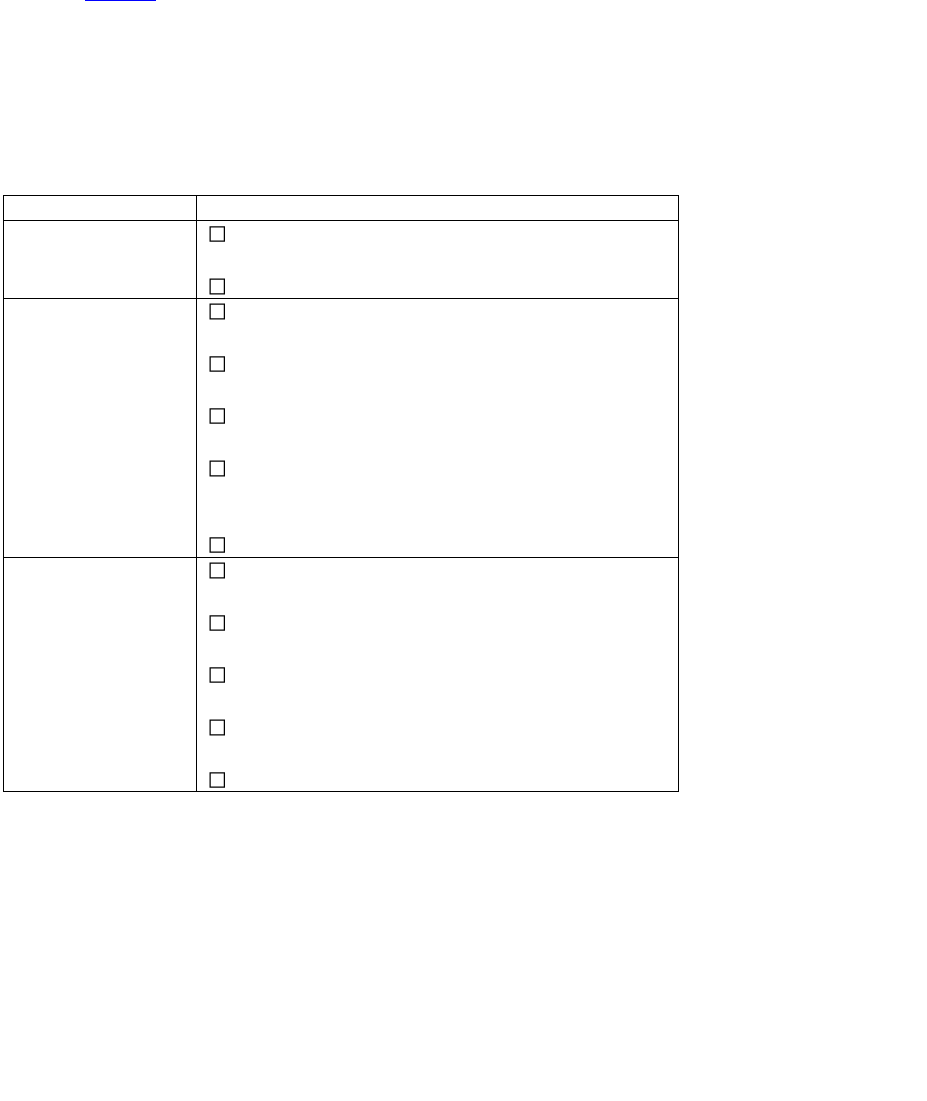
94
Officers must check GCMS and assess whether the person is already subject to IRPA
enforcement and should provide all relevant information to the CBSA Inland Enforcement
officer managing the case. If the person is not subject to IRPA enforcement, but may be
inadmissible, officers should gather relevant evidence and forward it to an CBSA Inland
Enforcement Office closest to the correctional facility.
For further details on managing persons serving a sentence and IRPA enforcement options,
refer to ENF 22, Persons Serving a Sentence.
16.5 Persons extradited to Canada from countries other than the U.S.
When examining a person who is coming to Canada under extradition proceedings from a
country other than the U.S., a BSO should obtain (at a minimum) the following information
for control purposes, either from the person being extradited or from the person’s escort:
Status
Required Information
Canadian citizen
person’s name
proof of citizenship
Permanent
resident
person’s name
date of birth
country of citizenship
date permanent resident status in Canada
was obtained
place where the trial is to be held
Foreign national
person’s name
date of birth
country of citizenship
place of permanent residence
place where the trial is to be held
If the extradited person is not a Canadian citizen, a BSO should forward a memorandum
containing all information relevant to the person’s entry requirements (including a copy of a
TRP, if applicable) to the CBSA inland enforcement office nearest the place where the trial is
to be held, with a copy to the Director of Enforcement in that region.
17 Examining persons who may be medically inadmissible
17.1 FNs seeking entry for medical treatment

95
When evaluating temporary resident applications for medical treatment in Canada, BSOs
need to assess both the health and good faith of the applicant.
If a FN has a medical condition that could pose a danger to the public health or safety of
Canadian residents, the BSO will determine if the FN should submit to an Immigration
Medical Examination (IME) to ensure their health condition does not render them
inadmissible to Canada under A38(1)(a) or A38(1)(b). Once the medical exam is performed,
the results are sent to IRCC Migration Health Branch (MHB) who will issue an opinion
regarding potential inadmissibility under A38(1).
When requesting a medical admissibility opinion, CBSA officers will refer the request to
IRCC.MHBIMPN-RITDMDGMS.IRCC@cic.gc.ca. The request must include the following
information:
Request is for an IRCC MHB opinion of medical admissibility under IRPA.
Client details such as full name, DOB, POB, UCI, etc.
A narrative articulating the nature of the request.
Signed Medical Consent and Authorization form from the client to allow sharing of
medical information with IRCC.
MHB will offer a medical admissibility opinion based on the information provided, normally
within three business days. The medical admissibility opinion may be used as evidence to
support an A44(1) report and subsequently a finding of inadmissibility under A38(1) at an
admissibility hearing at the ID.
If an applicant is seeking medical treatment that would cause displacement on a waiting list
for Canadians, the application should be refused under A38(1)(c).
Persons coming to Canada for medical treatment are expected to produce evidence of an
agreement with the treating physicians and institutions that clearly indicates the medical
condition being treated, the proposed course of treatment and arrangements for payment.
The person must satisfy the BSO at Immigration Secondary that all associated expenses,
including travel and accommodations costs, will be discharged without resulting in any cost
to Canadian health or social services.
Applicants who provide satisfactory evidence that they will pay the costs of their treatment
(usually through an agreement with the Canadian treating physician and medical institution)
and who meet all other requirements for temporary residence, do not require a TRP to enter
Canada.
Where it is determined that the applicant’s circumstances and ability to pay have changed
since the letter of agreement was issued, the officer may ask for evidence that the care-
provider in Canada is aware of the new circumstances and that payment arrangements are
not affected.
A FN who cannot satisfy the BSO that they will be able to pay for medical services and
treatment may be inadmissible under A39.
For additional information, see ENF 5, Writing 44(1) Reports, for more information on
procedures for dealing with A44(1) reports on inadmissible persons. See also ENF 2,

96
Evaluating Inadmissibility, for more information on determining inadmissibility as well as
ENF 1, Inadmissibility.
Pursuant to section 22 of the Canada/Quebec Accord, Quebec’s prior consent is required
with respect to foreign visitors entering that province to receive medical treatment.
Foreign nationals who are coming to receive medical care treatment in a Quebec public
health facility must apply for and obtain a Quebec acceptance certificate (CAQ). There are
no situations where a foreign national would be exempt of this obligation.
For more information on this exemption, please refer to section 2.3 Programme de séjour
temporaire pour traitement médical of the Guide des procédures d’immigration of the MIFI
(available only in French).
For information on FNs coming to Canada for the purpose of giving birth, please refer to
IRCC guidelines.
17.2 FNs living with HIV/AIDS and the excessive demands criteria
It is IRCC’s policy that persons with HIV/AIDS do not represent a danger to public health.
Therefore, a FN with HIV/AIDS seeking entry into Canada would not, in the absence of
contrary evidence, be inadmissible pursuant to A38(1) and the BSO would not normally
request a medical examination based on concerns about danger to public health or safety.
However, persons living with HIV/AIDS may be medically inadmissible if they have an
associated medical condition that is considered a public health risk such as active
tuberculosis.
Another concern is the excessive demand that may be placed on health or social services by
any applicant experiencing severe or chronic illness. As with any other FN making
application to enter Canada, persons with HIV/AIDS would not normally be expected to
place a demand on health services. It is therefore departmental policy that a diagnosis of
HIV/AIDS is not in itself a barrier to visiting Canada. When making a determination, BSOs
should only consider whether it is likely that the person will require hospitalization during
their visit. The carrying of medication used in the treatment of HIV/AIDS is not grounds for
denying temporary residence.
18 Options for dealing with inadmissibility and incomplete
examinations
A BSO at Immigration Secondary has a variety of options available when an examination
cannot be completed or when a person is believed to be inadmissible.
18.1 Further examination
Situations or circumstances may arise where an adjournment is necessary to ensure a
proper examination by a BSO in Immigration Secondary. For example, a BSO may require

97
an interpreter or additional documents, information or evidence to determine admissibility.
The facilities may be inadequate or personnel may not be readily available to deal with
volumes.
A23 authorizes a BSO to allow a person to enter Canada for the purpose of further
examination or for an admissibility hearing. R43(2) clarifies that persons who are authorized
to enter Canada for further examinations do not acquire temporary resident or PR status.
Mandatory conditions to be imposed
Where the BSO adjourns an examination under A23, R43(1) requires that mandatory
conditions be imposed:
to report in person at the time and place specified for the completion of the
examination or the admissibility hearing;
to not engage in any work in Canada;
to not attend any educational institution;
to report in person to an officer at a POE, if the person withdraws their application to
enter Canada; and
to comply with all requirements imposed on them by an order or regulation made
under the Emergencies Act or the Quarantine Act.
Persons whose examination has been deferred and who fail to report as required for
continuation of their examination may be subject to an arrest warrant for examination. It is
therefore very important that officers consider all relevant information and gather contact
information prior to issuing A23. Remarks in the Examination’s Notes tab should be done
without delay and explain the BSO’s reasoning for furthering the examination. In addition,
FNs may also be reportable for non-compliance under A41(a) and R43(a) and the MD has
the competency to issue the applicable removal order under R228(1)(c)(i). The A44 report
cannot be concluded until the person is encountered at some point in the future. Therefore,
BSOs should send the file to their nearest Inland Enforcement Office once the warrant is
issued.
For more details, refer to shift briefing bulletin 2021-HQ-AC-07-16.
18.2 Direction to leave Canada
R40 states that an officer who is unable to examine a person who is seeking to enter
Canada at a POE shall direct the person in writing to leave Canada. This does not apply to
protected persons or refugee claimants. The decision to direct a person to leave is
applicable in cases where a person cannot be properly examined (such as physical
impairment due to alcohol or drugs).
The BSO must serve a copy of the Direction to Leave form [BSF 503] on the person
concerned and on the transporter who brought them to Canada.
The direction ceases to have effect when the person appears again at a POE and a BSO
proceeds to examine the person.
Please consult the CBSA Wiki for GCMS functional guidance.

98
18.3 Direct back
R41 authorizes an officer to direct a FN seeking to enter Canada from the U.S. to return to
the U.S. if:
no officer is able to complete an examination;
the Minister is not available to consider, under A44(2), a report made with respect to
the person;
an admissibility hearing cannot be held by the Immigration Division; or
the FN is prohibited from entering Canada by an order or regulation made by the
Governor in Council under the Emergencies Act or the Quarantine Act.
See section 18.4 of this manual on how and when to use the direct back policy for refugee
claimants at land POE under exceptional circumstances.
The FN will be issued a Direction to Return to the United States form [BSF 505] document.
The date and location of the examination, the Minister’s consideration of the A44(1) report,
the admissibility hearing, or when an officer will be able to examine their application to
enter Canada once they are no longer prohibited from entering Canada by an order or
regulation made by the Governor in Council under the Emergencies Act or the Quarantine
Act are specified on the document.
A person who has been directed to return to the U.S. pending an admissibility hearing by
the Immigration Division and who seeks to come into Canada for reasons other than to
appear at that hearing, is considered to be seeking entry. If such a person remains
inadmissible for the same reasons, and if a member of the Immigration Division is not
reasonably available, the person may be again directed to return to the U.S. to wait until a
member of the Immigration Division is available. In these circumstances it is not necessary
to write a new A44(1) report.
The BSO at Immigration Secondary should bear in mind that time may be required by the
person, to allow for travel to the location where they must appear before a member of the
Immigration Division and that the circumstances may warrant authorizing the person entry,
at an appropriate time in advance of the scheduled date.
BSOs should write detailed remarks without delay in the Examination’s Notes tab in GCMS
concerning the reasons for issuing a direct back.
Please consult the CBSA Wiki for GCMS functional guidance.
18.4 Direct back and refugee claimants arriving at the land POEs from
the U.S.
All efforts should be made to process refugee claimants at the time of arrival. Refugee
claimants may only be directed back to the U.S. under exceptional circumstances. In cases
where a direct back must occur for an exceptional circumstance, approval must be obtained
from Travellers Branch, National Headquarters. Also, the Record of Direct Back must be
completed and emailed to the Border Operations Directorate, Travellers Branch pursuant to
the instructions provided below. It should be noted that lack of interpretation services

99
should not be considered “exceptional” or used as the basis for directing refugee claimant
back to the U.S. See section 8.4 of this manual for guidelines on telephone interpretation.
Procedures to be followed before directing a refugee claimant back to the
U.S.
Before directing a refugee claimant back to the U.S., BSOs are to fully consider the following
options:
If a BSO is not readily available to take the claim, notify the superintendent that
it may be necessary to request assistance from another POE or to call an officer
in on overtime.
Complete the Initial Refugee Claimant Assessment (IRCA) process to determine
whether the claimant is low risk and may be authorized to enter for further
examination.
If the claimant is not considered to be low risk, the full refugee intake process
should be completed.
Detain the refugee claimant, if grounds exist. If arrangements cannot be made to
conduct the front-end security screening examination and grounds exist, the
claimant may be detained according to current detention procedures.
Decision to direct a refugee claimant back to the U.S. under exceptional
circumstances
Exceptional circumstances are defined as situations where all of the procedures outlined
above have been considered and where an examination still cannot be conducted.
Exceptional circumstances could also include sudden or unexpected surges of people or a
situation where the health, security or well-being of the refugee claimant would be
significantly impacted and it would not be appropriate for the claimant to wait at the POE or
be detained. In 2020-2021, this was the case due to the COVID-19 pandemic.
The direct back procedure should not be used in the case of an unaccompanied minor.
Direct back procedure for refugee claimants under exceptional
circumstances
Once a BSO has determined that exceptional circumstances exist, the instructions for
directing the claimant back to the U.S., pursuant to R41, are as follows:
1. The BSO must obtain approval from the POE Superintendent before directing a
refugee claimant back to the U.S.
2. Approval must be obtained from the Duty Executive, Operations Branch, before
allowing a direct back to occur. The Duty Executive can be contacted via the Border
Operations Centre (613-960-6001).
3. The refugee claimant must be provided with a scheduled appointment to return to
the POE to have their refugee eligibility examination completed.
4. The Refugee Claim Application in GCMS should be completed and a further
examination event should be created reflecting the details and date upon which the
claimant is scheduled to return to the POE.

100
5. The refugee claimant should be issued a Direction to Return to the United States
form [BSF 505] stating the date, time and location of the scheduled examination and
the claimant is to be advised accordingly. At the POE where local arrangements are
in place or can be made, the BSO or Superintendent should seek assurances from
the U.S. Customs and Border Protection that the claimant can be made available to
return to Canada for their scheduled examination.
6. The BSO must complete the attached Record of Direct Back Template (Appendix C)
for all refugee claimants that are directed back to the U.S. The template must be
sent within one business day of the direct back or on the next business day for late
arrivals with the subject line reading “direct back” to the following two email
addresses:
o OPS_TRAVELLERS-VOYAGEURS@cbsa-asfc.gc.ca
o CBSA.Traveller_Immigration_Prog-Prog_immigration_voyageurs.ASFC@cbsa-
asfc.gc.ca
18.5 Detention for examination
Pursuant to A55(3)(a), a PR or FN may, on entry into Canada, be detained if the BSO at
Immigration Secondary considers it necessary to do so in order for the examination to be
completed.
For detailed procedures on A55(3)(a), refer to ENF 7, Immigration Investigations and IRPA
s. 55 Arrest/Detention.
18.6 Allowing the withdrawal of an application to enter Canada
Allowing a person to withdraw their application to enter Canada is an option a BSO at
Immigration Secondary has to permit a FN, whom the BSO believes is inadmissible or if the
FN took a wrong turn and had no intention to come to Canada, to leave Canada.
If a BSO examines a FN seeking entry and the person is believed to be inadmissible, the
officer may allow the person to voluntarily withdraw their application to enter the country
and leave Canada.
Under R42, the officer who examines a FN who is seeking to enter Canada and who has
indicated that they want to withdraw their application to enter Canada shall allow the FN to
withdraw their application, unless R42(2) applies.
R42(2) provides that a FN shall not be allowed to withdraw their application to enter Canada
where a report under A44(1) is being prepared or has been prepared, unless the Minister
does not make a removal order or refer the report to the ID for an admissibility hearing. In
other words, once an officer writes an A44(1) report, the allowed to leave option may only
be exercised at the MD level.
Before writing an inadmissibility report under A44(1), officers should determine whether the
objectives of the IRPA are better served by allowing the person to voluntarily withdraw their
application to enter Canada pursuant to R42.
If a person is allowed to leave Canada voluntarily, officers should counsel the person as
follows:

101
inform the person why they are believed to be inadmissible;
inform the person that if they leave Canada voluntarily, they will be free to seek
entry to Canada once the factor causing inadmissibility has been overcome; and
inform the person of the possible consequences of an A44(1) report, including the
possibility of an admissibility hearing and/or a removal order being made against
them.
If a person is allowed to leave Canada voluntarily, the officer or MD must give the person an
Allowed to Leave Canada form (IMM 1282B).
R42(3) provides that FNs who are allowed to withdraw their application to enter Canada
must appear without delay at a POE to verify their departure from Canada.
Sometimes a person who is being allowed to withdraw their application to enter Canada is
authorized to enter Canada pursuant to A23 when a flight is not immediately available to
affect their departure.
No matter the situation, BSOs should write detailed remarks in the Notes tab of the
Examination in GCMS without delay.
R37(c) provides that the examination of the FN ends only when the officer verifies their
departure from Canada.
Please consult the CBSA Wiki for GCMS functional guidance:
■ Allowed to Leave Canada by MD
■ Allowed to Leave Canada by Officer
19 Examinations that may lead to prosecution
Immigration examinations relate to admissibility and, for the most part, the infractions
identified during this process result in enforcement actions leading to removal. During the
examination, BSOs may encounter serious offences that may warrant further investigation
for the purposes of a criminal prosecution. It is important that BSOs are aware that the
admissibility determination process does not include gathering evidence as part of a criminal
investigation.
This section also addresses the arrest of Canadian citizens who are found to have committed
an offence under IRPA.
19.1 Procedures
The BSO must make a determination of admissibility. In order to make a determination,
BSOs collect information under the regulatory examination process. After the admissibility
decision has been reached and if the BSO suspects a criminal offence under A117 to A131
has occurred, the officer must advise the person of their rights under the Charter and
caution them before proceeding with any further examination including questioning the
individual. Criminal Investigations Division (CID) should also be contacted before further
examination.

102
Generally, if information is lawfully collected for the purpose of an admissibility examination,
that information can be subsequently used as part of a criminal investigation or prosecution.
The BSO must ensure they can clearly articulate to the court when the information was
obtained for the regulatory purposes to make the determination of admissibility and when
the officer started to examine further for evidence of a potential criminal offence while
ensuring the individual’s rights were not violated. The officer must be able to articulate how
each question asked is relevant to their role in making an admissibility determination and
that the individual was advised of their rights under the Charter and was cautioned once the
BSO believed a criminal offence had occurred. Failure to do so can have a negative impact
on the outcome of the case. For this reason it is imperative that the BSO take detailed
notes. This is particularly important if the person willingly provides information after being
cautioned.
In accordance with any accepted local procedures, and in consultation with their
superintendent, BSOs should continue to use their discretion in deciding when to refer a
case to the CID or local police for investigation but they must also be aware of the potential
consequences of continuing an examination after the administrative process is complete and
once a criminal offence is suspected. When in doubt, it is best to advise the individual of
their rights and caution them regarding making any statements to protect the admissibility
of those statements should the case end up being referred to CID.
Refer to section 4.1 of this manual for legislative powers and authorities to examine and
seize.
19.2 Criminal Code offence discovered by a designated officer
Subsection 163.4(1) of the Customs Act authorizes the President to designate any officer for
the purposes of Part VI.1 of the Act; this authority is usually delegated to the Regional
Director General. These officers are referred to as “designated officers”. Subsection
163.5(1) of the Customs Act states that a designated officer, when at a customs office and
performing the normal duties of an officer, or acting in accordance with section 99.1 has, in
relation to a criminal offence under any other Act of Parliament, the powers and obligations
of a peace officer under sections 495 to 497 of the Criminal Code, and subsections 495(3)
and 497(3) of that Act apply to the designated officer as if they were a peace officer. It
should be noted that this does not apply to criminal offences under the Customs Act or the
Immigration Refugee Protection Act, as the expanded authorities under subsection 163.5(1)
of the Customs Act are not required for an officer to arrest for offences under those Acts.
As soon as a designated officer has reasonable grounds to believe that a person has
committed an offence under the Criminal Code or any other Act of Parliament, the
examination under IRPA is to be temporarily suspended.
A superintendent should be consulted immediately. The CID, the police agency of
jurisdiction or the Regional Intelligence Officer must also be contacted for further guidance
as soon as possible. The officer may arrest the individual in accordance with section 495 of
the Criminal Code. The detainee must be immediately advised of their right to retain
counsel and cautioned regarding making statements. PRs and FNs are also to be informed of
their right to have the nearest representative of their government notified of their arrest
and detention as per the Vienna Convention.

103
The immigration examination resumes once the person is released and taken to a CBSA
officer. For further information, refer to sections 19.5 and 19.6 below.
19.3 Arrest and caution
Subject to the limitations set out in subsection 495(2) of the Criminal Code, the person may
be arrested under subsection 495(1) if there are reasonable grounds to believe he or she
has committed an offence. The individual must then be promptly informed of the reasons for
the arrest and of the right to retain counsel as well as be cautioned regarding making
statements. PRs and FNs must also be informed of their right to have the nearest
representative of their government notified of their arrest and detention as per the Vienna
Convention. Refer to the CBSA Enforcement Manual, Part 6, Chapter 1, Arrest and Detention
for the policy and procedures.
19.4 Canadian citizens
On rare occasions, evidence of a Canadian citizen committing an offence under IRPA will be
uncovered at the POE. Should the BSO decide to proceed with an arrest, they are to caution
and arrest the Canadian under the authority of subsection 495(2) of the Criminal Code as
noted in section 19.3 of this manual.
19.5 Note-taking
As officers may be required to provide testimony in court proceedings several months after
a referral to the CID or police has been made, diligent note taking is essential to establish
why certain actions were taken and what the predominant purpose of the officer’s actions
was at the time. It is important to note that it is the court’s interpretation of the BSO’s
testimony of the events supported by the notes that will determine whether the
information/evidence obtained during the administrative process is admissible in court.
Therefore, notes should include the events leading to the referral to CID or the police and
the time the person was placed under arrest and advised of their rights and cautioned.
Comments and statements made by the subject must be recorded verbatim. Notes must
also identify the officers and superintendent involved in the case, including those implicated
in the chain of custody.
The chain of custody, or continuity of evidence, must be ensured in order to meet the
rigorous evidentiary standards applied in criminal courts. Material evidence should be
removed from the person’s possession and taken into custody immediately upon detection.
The seized evidence must be kept in view and under the control of the officer. When an
assisting BSO watches over goods or evidence, this officer becomes part of the chain of
custody and could be called as a witness: therefore, the assisting BSO should also maintain
notes. Refer to the CBSA Enforcement Manual, Part 8, Chapter 1, Notebooks, for more
information regarding the CBSA officers’ policy for use of the notebooks.
19.6 Completing suspended examinations of FNs (refer to section 19.2)
A BSO may encounter circumstances where it is appropriate to suspend the immigration
examination to allow a criminal process to proceed. The subject will be placed under arrest
for the offence and advised of their rights and cautioned. The BSO must also issue a warrant
for arrest pursuant to A55(1) with a Warrant for Arrest form [BSF499] and an Order of the

104
Canada Border Services Agency to Deliver Inmate form [BSF498] pursuant to A59 in order
to ensure that the examination is completed once the person is released after the criminal
proceedings. Inland Enforcement Investigations must be informed to ensure effective follow
up.
For additional information, please refer to ENF 7, Immigration Investigations and IRPA s. 55
Arrest/Detention.
20 Unauthorized border crossings
A BSO who becomes aware that a person is attempting an unauthorized border crossing
should first notify the RCMP or police of jurisdiction. The primary responsibility for patrolling
between the border rests with the RCMP. The CBSA Investigations Division should also be
notified.
Officers shall not attempt to stop persons fleeing to or from Canada in high-risk situations
(e.g. to establish roadblocks to stop port runners or to participate in vehicle pursuits). In
these situations, officers are required to ensure that officer and public safety is maintained
(e.g. open a lane and clear traffic from the area).
Some points to remember are the following:
BSO should not attempt to investigate an unauthorized border crossing and should
refer the unauthorized crossing to CID.
BSOs shall follow the provision of the CBSA Directive on Use of Force and
Reporting and the CBSA SOP on Use of Force and Reporting, when they believe that
the use of force is justified in the course of administering or enforcing Program
Legislation.
BSOs who are trained and certified in defensive tactics and are in possession of
defensive equipment are expected to manage situations up to such point that the
BSO believes that the limit of their training and personal abilities has been attained.
Where these limits have been reached, the BSO shall permit the individual to
proceed into Canada and immediately notify the police force of jurisdiction.
BSOs should use communication equipment to keep in contact with the POE, should
they require assistance.
BSOs may consider requesting that the CID lay changes under A124 if an
investigation determines that a person has eluded examination or entered Canada by
improper means.
If the BSO has sufficient information relating to the identity of the person who failed
to appear for examination (e.g. examination started but person left POE before end
of examination), and the person is a foreign national, BSO should also issue an
immigration arrest warrant for examination.
21 Media Cases
When high-profile, contentious or sensitive cases are identified or are in the national media,
BSOs must follow the procedures outlined below to inform NHQ.
1. Inform and consult the immediate superintendent once it is suspected that the case
meets the criteria of a high-profile, contentious or sensitive case.

105
o More information on the types of cases that are potentially high-profile is
available on IRCC’s Handling high-profile, complex, sensitive or contentious
cases page.
o Superintendents are also to report significant events, as outlined in the
Incident Reporting Criteria, to the Border Operations Centre (BOC) while
respecting regional reporting protocols that are in place.
2. Inform NHQ by sending an email that includes
o “High-Profile Case” followed by the subject’s last name and given name in
the subject line.
o The applicant’s name, date of birth, file number and/or client identification
number (if applicable).
o A case chronology, including case-specific details and a summary of the
reason(s) the case is, or has the potential to be, high-profile.
o Any action taken or recommendations to resolve the case (if applicable); and
o Any other pertinent information.
o The following distribution list:
Immigration Program Manager (overseas cases) or manager or
supervisor (inland cases);
NHQ-NAT-High-Profile-Haut-profil@cic.gc.ca (which includes NHQ-
Communications-Cases@cic.gc.ca ; the current Director General and
Senior Director of Case Management Branch and the Office of the
Assistant Deputy Minister);
Case-Management, CBSA-NHQ case-manag[email protected].ca
Nat_National_Security_Coordination@cbsa-asfc.gc.ca; and
3. Use the Single Reporting Tool (SRT) to report a significant event to the BOC and
follow up, as necessary, to keep information up to date and ensure case notes are
detailed and able to feed into briefing documents, if required.
4. Refer any communication-related responsibilities to NHQ Communications. Any cases
that have implications in Canada (including those cases that initiate overseas) also
need to be coordinated with Communications in the affected region.
22 Disembarkation and Roving Teams (DART)
22.1 DART overview
Disembarkation screening refers to the rapid verification by BSOs that airline passengers
possess travel documents. Under A15(3), an officer has the authority to board and inspect a
vehicle and to examine and record documents carried by a person on board a vehicle.
The purpose of screening disembarking passengers is to identify and segregate persons not
in possession of passports or travel documents from the normal flow of passengers. In
addition, inadmissible travellers who may pose a risk or who are otherwise inadmissible can
be identified through intelligence-based indicators such as identified trends, lookouts and
Advanced Passenger Information/Passenger Name Record (API/PNR) information received
from the National Targeting Centre’s (NTC) Targeting Travellers unit (TT).
Disembarkation screening also enables a BSO to identify which airline has carried an
improperly documented passenger to Canada and ensures that the CBSA can levy
administration fees and removal costs against a liable transporter. When two international
flights arrive within a brief period of time, for example, passengers from each flight may

106
intermingle at the PIL. This can make it difficult to determine which carrier brought an
improperly documented passenger to Canada and to properly assess liability.
On-board inspections, disembarkation screening, pre-PIL roving and post-PIL activities are
part of the examination continuum. At these preliminary checks, the DART officer does not
do a full examination and does not make a decision to authorize or deny entry. Instead, the
officer verifies that a passenger has the necessary documentation and refers undocumented
and suspected inadmissible persons to Immigration Secondary for an in-depth examination.
This does not usurp the authority of the PIL as DART referrals do not bypass the PIL.
22.2 DART mandate and objectives
As a part of the CBSA’s mandate to manage access to Canada, the mandate of DART is to
increase the CBSA’s capacity to:
identify improperly documented or otherwise inadmissible FNs;
associate improperly documented FNs to commercial transporters to promote
compliance with the CBSA’s administrative programs;
identify and interdict individuals who pose a threat to the health, safety and security
of Canada including persons who pose a security threat, serious criminals, human
smugglers, human and international rights violators, and persons engaged in trans-
national organized crime; and
analyze and contribute to the intelligence pool on illegal migration trends and
patterns.
The objectives of DART are to:
use intelligence, trend and statistical analysis and other innovative passenger
assessment techniques (i.e., API/PNR referrals) to improve secondary examination
referrals;
identify, intercept and control passengers who pose a danger, security threat, or are
a flight risk;
monitor and promote transporter compliance by linking undocumented persons with
transporters;
assist in the collection of evidence for immigration admissibility reports and
prosecutions;
assist in the collection, analysis and dissemination of intelligence related to travel
routes used by illegal migrants and smuggling networks;
promote cooperation, coordination and the exchange of information with partner
agencies;
maintain a professional, responsive and visible presence to deter inadmissible
persons from entering Canada; and
remove fraudulent documents from circulation thereby preventing their future
fraudulent use.
22.3 DART activities
DART activities can vary from one POE to another due to operational requirements, differing
priorities and other considerations. Specific DART activities can include:

107
inspection of airline passengers for possession of passports and travel documents
and required visas;
searches of aircraft for discarded or hidden documentation;
searches of Customs Controlled Areas (CCA) for discarded or abandoned
documentation;
seizure of documents;
roving in designated CCA to detect human smugglers and persons discarding
documents;
completing certain examinations and case files on high-risk cases such as suspected
human smugglers;
compilation and maintenance of intelligence data, statistics and daily logs;
internal information-sharing within the CBSA (local office, other POEs, Criminal
Investigations intelligence offices, overseas liaison officers [LO]);
external information-sharing (Royal Canadian Mounted Police (RCMP), Global Affairs
Canada (GAC), Office of the Solicitor General, airlines) depending on specific
agreement with each partner;
targeting and passenger assessment of flights;
establishing transporter liability;
interviewing passengers at Immigration Secondary;
collection and analysis of officer case notes;
GCMS and ICES searches/queries;
use of internal communications systems; and
analysis of statistical and other relevant records.
Although DART officers are BSOs, their primary function is to perform DART activities. When
circumstances permit, however, or when a superintendent requires emergency support,
DART officers should offer their assistance to the on-site superintendent.
For more information on the Customs Controlled Areas, please refer to CBSA Enforcement
Manual part 6, chapter 9.
Minimal delay to travelling public
Disembarkation screening by DART teams should be completed as quickly and efficiently as
possible. To ensure that the bona fide travelling public is not unduly disrupted or delayed,
the POE superintendent should ensure that an appropriate number of officers are assigned
to screen passengers, taking into consideration the different sizes of aircraft and passenger
volumes.
22.4 Intelligence-based targeting of airline flights
DART officers propose and confirm flights to be screened with their on-site superintendent
based on tactical intelligence identifying flights and persons of interest to the CBSA.
Determining which flights to target for disembarkation screening is based on the following:
lookouts and intelligence information;
advance passenger information received from NTC’s TT unit;
trend analysis;
flights of heightened interest to the CBSA;
point of embarkation;

108
number of passengers on board;
size of the aircraft;
estimated time of arrival of the next flight to be monitored; and
number of officers available to conduct disembarkation checks.
While all carriers should be the target of periodic disembarkation screening, those carriers
with a history of carrying undocumented passengers may be subject to more frequent
screening.
Specific case information is received and analyzed by DART teams through:
in-person client interviews at Immigration Secondary;
officer case notes;
FOSS history checks, GCMS searches and SSI reports;
reports provided by the CBSA’s Immigration Intelligence Branch;
statistical reports;
liaison officers located around the world who provide information on illegal migration
and smuggling trends;
NTC’s TT officer that provides API and PNR information on arriving passengers; and
other agencies such as the RCMP.
In a reciprocal manner, DART officers contribute to the intelligence pool with trend and
illegal traffic information that is used by the liaison officer network to interdict inadmissible
travellers abroad and deny them boarding on flights to Canada. Information gathered from
DART intercepts is entered in the Support System for Intelligence (SSI) that is used by the
CBSA’s intelligence officers in Canada and abroad to monitor and analyse illegal migration
and human-smuggling trends. Additionally, DART officers ensure that suspected human
smugglers and others in possession of fraudulent documents are referred to the CID. Cases
of potential human trafficking should be referred to the CID and Intelligence for further
investigation and liaison with partners.
Intelligence support
The DART officers provide an integral operational link within the CBSA’s intelligence and
liaison officer networks overseas. These are major resources for DART teams and can
provide valuable assistance in identifying human smuggler routings. The two-way exchange
of information also provides the opportunity to interdict inadmissible persons abroad and
deny them the opportunity to board flights to Canada.
Regional intelligence officers can provide a variety of services, which may include:
document examination training;
document analysis;
emerging trend information; and
SSI analytical reports.
Liaison officers are located in key locations around the world and play an integral part of the
screening, identification and interception of improperly documented persons trying to enter
Canada. Together with DART officers, they form part of the continuum of the passenger
assessment process that begins abroad and continues on arrival in Canada. They are both
key elements in Canada’s multiple-border strategy.

109
API/PNR liaison
NTC’s Targeting Travellers unit uses advance passenger information to identify known
inadmissible persons and passenger name records analysis to assess individuals who may
pose a potential risk prior to their arrival in Canada. This enables DART officers to use their
limited resources more strategically to target flights and persons of interest.
This is key to the intelligence-based targeting of flights by DART officers. While NTC’s TT
unit provide strategic information about the arrival of persons linked to terrorist
organizations, criminal activity and other factors that render them inadmissible, DART acts
on this intelligence information to intercept inadmissible persons immediately on arrival.
Passengers who pose security or flight risks can be quickly intercepted and maintained in a
controlled environment pending their examination.
22.5 DART procedures
Notification to partners
With as much lead time as possible and in accordance with local procedures, DART officers
should notify partners such as Transport Canada and RCMP officials of the flights they
intend to screen and of other pre-PIL roving activities.
Pre-disembarkation procedures
DART officers should verify that proper communication (i.e., radio contact) has been
established with the on-site superintendent before leaving the office to perform
disembarkation checks. Superintendent should remain in continual contact for updates,
emergencies and requests for assistance.
Boarding flights and gate checks
DART officers should, whenever possible, be gate-side at least five minutes before the
flight’s scheduled arrival time.
DART members will then make a final decision as to which level of disembarkation check is
to be performed. The airline representative must be advised of the level of disembarkation.
Furthermore, a request should be made to the airline to ensure that an announcement is
made on board the flight to prepare the passengers (levels I and II only). This
announcement should clearly indicate to passengers that the CBSA will be doing a check to
ensure that they possess the necessary documentation to enter Canada and that they
should have their documentation ready for presentation. Only then will the disembarkation
screening proceed.
Document screening is conducted on board the aircraft, at a point as close to the exit of the
aircraft as possible, or wherever else deemed appropriate by the DART officer. Normally,
officers will proceed down the aisle and allow passengers whose documents have been
verified to leave the aircraft.

110
When boarding flights and conducting gate checks, DART officers should be mindful of the
fact that they are in an excellent position to pass information along to the officers at the
PIL. If a DART check of a passenger does not turn up any immigration concerns, but strong
indicators are present that the particular traveller may be of interest to Customs, DART
officers should make every effort to inform the officer at the PIL or an officer at Customs
Secondary examination of these indicators to assist them in completing their examination.
Level I (boarding the flight): A minimum of two officers is required to do a check at this
level.
DART members will conduct level-one disembarkation checks in the following manner:
in a two-aisle aircraft, officers should stay parallel to each other in their
respective aisles while doing document checks;
in a single aisle aircraft, at least one officer checks documents on the left side of
the aircraft and another officer, in single file with all other officers, completes the
right side of the aircraft; and
in a Boeing 747, at least one officer proceeds to “the bubble,” while another
officer checks documents of the passengers in first class. Once those sections
have been completed, officers then proceed to economy class. It is preferable
that at least three officers check this type of aircraft.
The officers inspect passports, travel documents and visas for authenticity. If any concerns
arise regarding a particular document, the document may be held for further examination.
If a person is suspected to be improperly documented, without documentation or otherwise
inadmissible, they will be instructed to remain seated, and their documents will be held. In
this instance, the flight attendant should be approached to determine if the passenger is
travelling alone. If confirmed, the disembarkation check can be resumed. If another person
accompanied the passenger, the documents of that passenger should be held as well. A
request can be made to the flight attendant to ensure that the passenger and their
travelling companion(s) remain seated until the completion of the check.
Airlines may be requested to hold persons on board an aircraft under the authority of
A148(1)(b) and R261.
After the disembarkation check has been completed, the officer will:
1. search the improperly documented passenger’s seat, any companion’s seat and the
immediate vicinity, including washrooms, to locate any documentation that may be
hidden or discarded;
2. determine if the passenger is sitting in their originally assigned seat. If the person is
not in their originally assigned seat, search that area as well;
3. complete a BSF 453 form confirming the passenger’s presence (see section on
improperly documented passengers below for procedures on completing the BSF 453
form); and
4. inform the flight director or crew of the conclusion of the check and thank them for
their assistance.
Upon completion of the disembarkation check, DART members will:
111
1. escort the improperly documented arrival (IDA) to the crew counter in the PIL area
so that the BSO at the PIL can complete the primary examination;
2. once the primary examination is complete, escort the IDA to Immigration Secondary;
and
3. surrender any documentation and provide details of the case to the on-site
superintendent .
DART members will not be obligated to report any individuals, but when circumstances
allow, DART officers will offer their assistance to the superintendent .
If no passengers require an escort, but documents have been held, DART officers will
proceed to the Immigration Secondary examination area as soon as practicable to explain
the rationale for the seizure. If no documents have been held and there is no one to be
escorted, team members can proceed directly to the next flight.
Level II (gate screening): A minimum of two officers is required to do a check at this
level.
DART members will conduct level-two disembarkation checks in the following manner:
stand facing each other in the area where the boarding finger meets the terminal
building so that the disembarking passengers must pass between the officers; and
confirm that each person has a passport, or other required documentation.
If a passenger presents satisfactory documentation, the officer will allow the passenger to
proceed to the PIL.
Depending on the circumstances, the officer may instruct the passenger to wait in an area
in plain view of at least one officer or continue to the PIL if one of the following situations
occurs:
a passenger is not in possession of any travel documents; (in this instance, the flight
attendant should be approached to determine if the passenger is travelling alone and
to confirm their seat number. A document search should be conducted as in level I);
the officer is not satisfied with documents presented; or
the officer suspects the person to be inadmissible for any other reason.
DART members will hold the document and, in the latter case, the passenger may be given
a receipt. If required, officers may ask for the assistance of airline personnel to maintain
visual contact with those persons instructed to wait.
Upon completion of a disembarkation check, DART members will:
1. escort the IDA to the crew counter in the PIL area so that the BSO at the PIL can
complete the primary examination;
2. once the primary examination is complete, accompany the IDA to Immigration
Secondary; and
3. surrender any documentation and provide details of the case to the on-site
superintendent.

112
DART members will not be obligated to report any individuals but, when circumstances
allow, DART officers will offer their assistance to the superintendent.
If no passengers require an escort, but documents have been held, officers will proceed to
Immigration Secondary as soon as practicable to explain the rationale for the seizure.
Holding documents during the course of an examination does not constitute a seizure
action. If the person is to depart the POE without their document (i.e. A23) or go into
detention, then it becomes a seizure and a BSF698 Notice of Seizure of Travel and/or
Identity Document(s) must be completed.
If no documents have been held, and there is no one to be escorted, team members can
proceed directly to the next flight.
Level III (flight observation): A check at this level is performed when only one officer is
available.
This type of disembarkation screening is usually completed for low-risk flights, or when
flight-arrival times are scheduled close together. This level of screening should also be
considered when staffing levels prohibit officers from doing a level I, or level II
disembarkation check or, in a special circumstance, where surveillance is required.
DART members will conduct this level of disembarkation check in the following manner:
1. Arrive at the gate five minutes prior to the estimated time of arrival of the flight.
2. Inform the airline representative at the gate that an officer will be observing the
flight and will not be requiring passengers to present their passports as they
disembark the aircraft. Also, they should specify that no announcement to the
passengers should be made.
3. Position themselves at a suitable distance, while ensuring that there is a clear view
of the passenger flow from only the targeted flight.
4. While observing the passengers, officers make suitable notes with regards to
passengers who may be of interest to Immigration Secondary, and those
accompanying them.
5. Officers may ask individual passengers for documentation if there is a strong
suspicion that they may have improper documents, or no documents at all.
6. Generally, it is most beneficial to follow the passengers down to the PIL area. This
will allow officers the opportunity for further observation and may prevent the
destruction or discarding of documentation in garbage containers or washrooms.
7. If DART members are not proceeding directly to the Immigration Secondary area,
they should inform the on-site superintendent of the outcome of the disembarkation.
If required, DART members should relay any observations, their location and, if
required, request assistance.
8. At the earliest convenient break in disembarkation checks, go to the Immigration
Secondary area to link any identified improperly documented arrivals with the carrier
used to convey them to Canada, referring to the notes taken while observing the
disembarkation.
9. If an undocumented passenger who the DART officer observed disembarking a flight
is encountered in the Immigration Secondary area, the DART officer should complete
a BSF 453 form in accordance with procedures. If it is not practical to complete a
BSF 453 form, the DART officer shall complete a statutory declaration as soon as
possible.

113
Upon completion of all necessary paperwork, DART members may now advise the on-site
superintendent and proceed to the next flight planned for disembarkation.
Roving DART activities
In addition to boarding flights and conducting gate checks, DART officers conduct roving
exercises in the Customs Controlled Areas (CCA) area to identify other irregular activities
such as the destruction or handing of documents to an escort or smuggler. DART officers
engaged in pre-PIL roving may ask a BSO at the PIL for a specific person to be referred to
Immigration Secondary. All DART referrals must pass through the PIL before being sent to
Immigration Secondary. DART officers may engage in post-PIL activities when they have
targeted suspected human smugglers or other suspected inadmissible persons when new
information has come to light after the passenger has cleared the PIL.
Improperly documented passengers
If an improperly documented passenger is encountered, the officer should complete a
Confirmation by Transporter Regarding Passenger(s) Carried form [BSF 453] at the earliest
opportunity, either during disembarkation screening or as soon as the passenger has been
escorted to the PIL and to the Immigration Secondary area. The local airline representative
is also required to sign the form. If the representative refuses to sign, the DART officer
should place a note on the form accordingly. If it is not practical to complete a BSF 453
form, the DART officer shall complete a statutory declaration stating which flight the IDA
disembarked and outlining details about the lack of documentation.
Since passengers normally have documents at the time of boarding, it is possible that
improperly documented passengers have hidden or destroyed their documents en route.
Undocumented and other inadmissible passengers identified by DART must be presented at
the PIL for completion of Customs’ procedures and then escorted to the Immigration
Secondary area for a complete examination.
Once IDAs have been identified, the DART member must ensure that:
1. The appropriate areas of the aircraft are searched for documentation.
2. The flight attendant and IDA have been queried as to any accompanying travellers;
3. An airline representative has signed a BSF 453, when possible, for the passenger’s
arrival on their airline, and thanked for their assistance.
4. Should a disembarkation check be performed and IDAs not be identified until their
arrival in Immigration or Customs Secondary, a request can be made to the airline
staff to visually identify that person and sign the BSF 453 form confirming their
presence on their flight. Airline personnel cannot be compelled to sign a BSF 453
form. If airline personnel refuse to sign the BSF 453 form, a note should be made on
the form accordingly. If it is not practical to complete a BSF 453 form, the DART
officer shall complete a statutory declaration form [IMM 1392B].
5. The passenger is escorted, if necessary, to the Immigration Secondary area only
after they have cleared the PIL and the on-site superintendent is informed.
6. The CCA are checked for possible smugglers.

114
Reporting improperly documented passengers
In all cases where an improperly documented person has been detected, a BSO should:
create a physical file ensuring that all secured documents are placed in the file;
take a photograph and fingerprints of the person and place copies in the file;
place copies of any documents found in the person’s possession in the file;
ensure that the passenger, their carry-on luggage and their checked luggage are
searched for documentation;
obtain a flight manifest when possible;
clearly make a note on the file to indicate whether disembarkation screening has
been done so that the person entering SSI data may check “yes” in the
disembarkation-screening field; and
when entering SSI, check “yes” when asked “BSF 453 completed”, if applicable or
advise person entering SSI to do so.
Note-taking
DART officers should make note of the date, time and flight number in their notebooks or
DART logs and record any information that may be relevant to the examination or
prosecution of passengers. Keeping a written record of this information may be useful if the
officer is later called to testify in court. More information on officer note-taking is available
in ENF 7, Immigration Investigations and IRPA s. 55 Arrest/Detention.
22.6 Communication and cooperation with partners
Within the CBSA
The CBSA airport staff should keep one another, as well as their regional and national
headquarters, informed of DART developments. All such communications should be
maintained on the master regional and/or national headquarters’ file.
With partners
The CBSA should consult Transport Canada, the RCMP and airline representatives at the
POE regarding any changes to disembarkation screening procedures that affect the
configuration or operation of local facilities. Good communication among partners is
essential to ensure cooperation and to minimize disruption of airport operations and delays
to passengers.
DART officers should provide feedback to agencies and individuals who have initiated a
DART action, while keeping in mind privacy legislation. This would include timely updates
and outcomes from referrals, lookouts or general information that was provided to the DART
team. DART officers are encouraged to participate in orientation sessions with partners to
further their understanding of the requirements of IRPA and its Regulations and to promote
cooperation and the exchange of information. DART officers should be vigilant for
opportunities to engage partners and participate in joint activities that would promote
understanding and cooperation.

115
With the CBSA Immigration and Customs Enforcement Team (ICET)/
Flexible Response Team (FRT)
The CBSA has Immigration and Customs Enforcement Teams (ICET), also known as Flexible
Response Teams (FRTs), that occasionally operate pre-PIL in a manner similar to the CBSA’s
DART teams. Both DART and ICET/FRT report to the Enforcement Division, which is run by
the Chief of Enforcement Operations. DART and ICET/FRT should make every effort to
communicate on a daily basis to enhance the understanding of each other’s activities and to
coordinate the targeting of flights whenever possible. While DART and ICET/FRT have
different mandates and often target different flights, occasionally it will be operationally
beneficial for both teams to target the same flights. In these instances, both teams are
required to coordinate their activities to enhance effectiveness and to minimize delays to the
travelling public. Among other things, ICET/FRT officers can assist with document
verification and the search for documents aboard aircraft.
With airlines
It is essential that carriers understand and support disembarkation screening. POE
superintendent should initiate and maintain frequent communications with local airline
managers and clearly explain the purpose, procedures, and legislative foundation for
disembarkation screening.
22.7 Suspected human smugglers
DART officers must accompany any suspected human smugglers to the PIL, then to the
Customs Secondary area for a thorough search. DART officers should identify themselves to
the BSO at the PIL and have the suspected human smuggler referred to both Immigration
and Customs Secondary areas.
If evidence of human smuggling is discovered, the DART officer should immediately contact
the Criminal Investigations Division. The DART officer should then escort the person to
Immigration Secondary for an immigration examination to determine citizenship and
admissibility.
If no evidence of human smuggling is discovered, the DART officer should accompany FNs
to Immigration Secondary for examination to determine admissibility. Where the person
provides satisfactory verbal or documentary proof that they are a Canadian citizen, the BSO
authorizes the person to enter Canada at that point. It is not necessary to refer Canadian
citizens to Immigration Secondary if the BSO is satisfied that they have that status.
Documentation may be photocopied at Customs Secondary if necessary for further
investigation or intelligence purposes.
DART officers should notify their superintendent of all cases of suspected human smuggling
and forward the case information to their Criminal Investigations office and regional
intelligence office.

116
22.8 Potential prosecutions
DART officers are instrumental in identifying and gathering evidence to prosecute human
smugglers and traffickers. DART officers can play a key role in identifying, documenting,
assessing, referring and assisting the RCMP or CBSA Criminal Investigations (depending on
the charge) in the laying of charges under IRPA and the Criminal Code.
When there is a concern that charges should be considered, the BSO and/or the CBSA
Enforcement Division should ensure that the CBSA Criminal Investigations and Intelligence
are contacted and provided the details of the case. If the RCMP or CBSA Investigations
conducts an investigation, the BSO and/or Enforcement Division should notify their
superintendent or supervisor immediately.
BSOs must be familiar with the heightened evidentiary requirements for prosecutions.
Documents for a criminal charge must be transferred and secured in a manner that is
consistent with the Canada Evidence Act.
Chronicled statements must comply with the Canadian Charter of Rights and Freedoms. See
section 7.1 of manual ENF 12, Search, Seizure, Fingerprinting and Photographing, relating
to seizure, and the Canadian Charter of Rights and Freedoms.
Written declarations should be completed and confirmed with the CBSA Investigator or the
investigating RCMP officer. In situations where a statement is taken from a passenger, the
responsible officer should make every attempt to make the passenger available for the
CBSA Investigator or the RCMP to interview. The declaration form is IMM 1392B.
22.9 Interviewing Canadian citizens, PRs and persons registered under
the Indian Act
DART officers must be cognizant of the change in the legal obligation of the individual when
dealing with PRs, persons registered under the Indian Act and Canadian citizens and
conduct the interview accordingly. Any statement made in response to an officer’s question
may be inadmissible in court if the person has not been given the proper cautioning prior to
making the statement.
DART officers should utilize these opportunities to inform partner agencies of Immigration
Secondary’s role with respect to the specific case and the reasons for the actions taken. This
may include instances where no action is taken at that specific time. In these instances,
DART officers must use the utmost care to ensure that the partner agency does not perceive
Immigration Secondary as unwilling to act, but rather understands the inability to proceed
due to legal restrictions.
When examining Canadian citizens, persons registered under the Indian Act and PRs, DART
officers must:
1. confirm that the person concerned is in fact a Canadian citizen, persons registered
under the Indian Act or PR;
2. receive permission from the person to conduct an interview, or to examine any
documentation in their possession;
3. collect any evidence that may link the person to an improperly documented arrival;

117
4. if no evidence exists, then conclude the interview and thank them for their
cooperation. If evidence of aiding and abetting exists, contact the CID immediately
regarding the possible laying of charges. If the investigator attends, properly transfer
all evidence relating to the charge to them. If the investigator does not wish to
attend, then conclude the interview and thank the person for their cooperation; and
5. in all cases where evidence exists, a note should be added to GCMS detailing the
occurrence. Also, all pertinent details should be relayed to Immigration Intelligence.
Evidentiary requirements may place DART officers in the best position to complete reports
of this nature.
22.10 Training
All DART officers are required to be certified in Control and Defensive Tactics (CDT) training.
In addition, DART officers should generally have a minimum of one year’s experience as an
examination officer at the POE. This is to ensure that the officers are fully aware of the
CBSA’s mandate, objectives, and policies and have a good working knowledge of operational
procedures, internal communication systems and statistical analysis and have recent
experience in interviewing clients.
DART officers also need to be aware of the principles and dynamics underlying and
motivating human behaviour, the influences of cultural differences, attitudes and behaviour
and of departmental interviewing techniques. DART officers are usually required to complete
up to two weeks’ training that may include courses on:
DART orientation;
airline responsibilities;
fraud document detection;
immigration intelligence orientation;
Jetway training;
evidence and criminal charges;
CSIS profiles and interviewing techniques;
cross-cultural awareness;
anger management;
first aid and CPR;
note-taking;
Customs Controlled Areas; and
processing Indigenous travellers.
22.11 Uniforms and appropriate protective and defensive equipment
DART officers are required to wear their uniform while on duty in accordance with the
Uniform Policy. DART officers are also required to wear appropriate protective and defensive
equipment including protective vests, OC spray, baton, handcuffs and duty firearm (where
applicable) when working outside of the secure office setting.
Any divergence from the standard uniform or equipment complement must be approved by
local management and must be consistent with national guidelines.

118
22.12 Statistical and intelligence reports
For audit purposes, POEs must keep an accurate record of the flights where a
disembarkation screening has taken place. The daily Action Reports should reflect the
reason the flights were selected and the number of improperly documented passengers that
were identified. These reports may be used as evidence by the Transporter Obligations
Program’s Industry Compliance Unit when assessing the fees to be levied on carriers.
DART superintendents are responsible for compiling (from the daily Action Reports) a
monthly report of DART activity during the previous month. The monthly reports should
contain statistics on the number of disembarkations performed, the number of improperly
documented FNs intercepted, as well as other DART actions initiated through referrals by
Intelligence, NTC’s Targeting Travellers unit, the RCMP, the airlines or other sources.
NHQ Intelligence Branch will provide regular Intelligence reports to NHQ Ports and Border
Management, regional headquarters and airport DART superintendent about overseas
interceptions by Liaison Officers.
23 Alternate means of examination (AME)
R38 lists alternative means of examination that may be used instead of appearing at a POE
for an examination by a BSO. Refer to ENF 29, Alternative Means of Examination Programs
for more information.
23.1 Trusted Traveller Programs (TTPs)
TTPs are designed to expedite the border clearance process for pre-approved, low-risk
travellers. TTPs such as CANPASS, NEXUS, FAST and CDRP are available to U.S. and
Canadian citizens and PRs. Successful applicants are issued authorizations to present in an
alternate manner such as photo identity cards. Persons holding these authorizations are still
applying for entry, but their examination will be expedited as background checks regarding
criminality and previous immigration and customs infractions have been completed.
See People Processing Manual, pt. 3 for more information on TTP.
24 Advance passenger information (API) and passenger name
record (PNR)
24.1 API information
The Passenger Information (Customs) Regulations, as well as R269, obligate all commercial
air carriers/commercial transporters to provide the CBSA with Advance Passenger
Information (API) relating to all persons on board, or expected to be onboard, the
commercial conveyance travelling to Canada prior to, and at, the time of departure from the
last point of embarkation of persons before the conveyance arrives in Canada, despite the
final destination or transit port. The information is sent electronically. This enables the NTC-
TT officers to conduct pre-arrival targeting, security, criminality and FOSS history checks
and GCMS searches on the travellers prior to their arrival in Canada.

119
API consists of the following data elements, mostly contained in the machine-readable
zone (MRZ) of most passports and travel documents:
a) their surname, first name and any middle names, their date of birth, their citizenship or
nationality and their gender;
(b) the type and number of each passport or other travel document that identifies them and
the name of the country or entity that issued it;
(c) their reservation record locator number, if any;
(d) the unique passenger reference assigned to them, if any, by the person who is required
to provide information or, in the case of a crew member who has not been assigned a
unique passenger reference, notice of their status as a crew member;
(e) any information about the person in a reservation system of the person who is required
to provide information or in a reservation system of the representative of such a person;
and
(f) the following information about their carriage on board the commercial conveyance:
(i) if the person is carried or is expected to be carried on board the commercial
conveyance by air, the date and time of take-off from the last point of embarkation
of persons before the commercial conveyance arrives in Canada or if the person is
carried or is expected to be carried on board the commercial conveyance by water or
land, the date and time of departure from the last point of embarkation of persons
before the commercial conveyance arrives in Canada,
iii) the last point of embarkation of persons before the commercial conveyance
arrives in Canada,
(iii) the date and time of arrival of the commercial conveyance at the first point of
disembarkation of persons in Canada,
(iv) the first point of disembarkation of persons in Canada, and
(v) in the case of a commercial conveyance that carries persons or goods by air, the
flight code identifying the commercial carrier and the flight number.
The API data elements are captured at the time of check-in when the machine-readable
zone of the passport or travel document is swiped or entered manually.
24.2 PNR information
The Passenger Information (Customs) Regulations, as well as R269, obligate all commercial
air carriers/commercial transporters to provide the CBSA with Passenger Name Record
(PNR) information relating to persons on board the commercial conveyance travelling to
Canada at the time of departure from the last point of embarkation of persons before the
conveyance arrives in Canada, despite the final destination or transit port. The information
is sent electronically and is matched, in PAXIS, with the API data provided. This enables the

120
NTC officers to conduct pre-arrival targeting, security, criminality and FOSS history checks
and GCMS searches on the travellers prior to their arrival in Canada.
The PNR information available in a transporter’s reservation system can be extensive, and
the data elements captured will vary for each transporter. Some transporters do not have
PNR systems in use for some flights and thus are not obligated to provide the data for those
flights.
24.3 Disembarkation and Roving Team (DART)
Prior to a commercial vehicle’s arrival in Canada, the NTC-TT unit will analyse the API and
PNR information, enter required lookouts in ICES, and ensure that the BSOs and the DART
receive detailed information on persons who may be inadmissible to Canada. The NTC-TT
have the decision-making ability to flag a person, prior to their arrival at the PIL, for referral
to Immigration Secondary.
25 Entering data on previously deported persons (PDP) into the
Canadian Police Information Centre (CPIC)
The primary objective for entering data on PDPs into the CPIC is to enhance public safety
and security by providing peace officers with the necessary information to form reasonable
grounds that the person may be arrested without a warrant, as per A55(2)(a). The CPIC-
PDP database will equip peace officers across Canada with information that a FN has been
deported from Canada, has returned to Canada without authorization as required by A52(1)
and, at the time of the person’s removal, there were reasonable grounds to believe that the
person is a danger to the public or is unlikely to appear.
After a name is queried in the CPIC and it is a direct match to a person found in the PDP
database, the information on the CPIC will instruct law enforcement partners to contact the
Warrant Response Centre (WRC) for further assistance.
Information on individuals in the CPIC-PDP database originates from FOSS/GCMS. For more
information on this subject, see ENF 10, Removals.
25.1 POE procedures for completing the Authorization to Return to
Canada (ARC) application
The completion of Authorization to Return to Canada (ARC) applications is normally the
responsibility of visa offices. However, on occasion, the POE is required to deal with
individuals where completion of an ARC application is necessary. Therefore, Authorization to
Return to Canada application functionality in GCMS is accessible at POE and the authority to
grant or deny the ARC has been designated at the POE to the Chief of Operations level (see
IL 3, CIC IDD: Instrument of Designation and Delegation, item 88).
The Authorization to Return to Canada application functionality is used to record the
processing and disposition (approval or denial) of an ARC, regardless of the type of removal
order (i.e., exclusion order cases where written authority is required). When granting an
ARC, an ARC application must be completed in GCMS.

121
Before a physical copy of the Authorization to Return to Canada Pursuant to Subsection
52(1) of the Immigration and Refugee Protection Act form [IMM 1203B] is issued, the
applicable cost of $400 must be collected and, if CBSA/IRCC paid for their removal,
recovery fees must be collected.
FNs must repay the following:
$750 for removal to the U.S. or Saint-Pierre and Miquelon [R243(a)]; or
$1,500 for removal to any other destination [R243(b)].
Recovery payment must be entered into the Travellers Entry Processing System (TEPS), and
the K21 form must be completed using the code 48455, Repayment of Removal Costs, as
the cost recovery type.
For more information on the repayment of removal costs, please refer to ENF 10, Removals.
There are currently no exemptions to the cost recovery fee for an ARC. When authorization
to return to Canada has been denied, the officer must indicate the denial in the Authority to
Return to Canada application in GCMS and issue a Denial of Authorization to Return to
Canada Pursuant to Subsection 52(1) of IRPA form [IMM 1202B].
25.2 Completing an ARC application in GCMS
The Authorization to Return to Canada application functionality is accessible in GCMS. The
person must be an existing client in FOSS/GCMS and a removal order or PDP document
must exist. For more information on completing an Authorization to Return to Canada
application in GCMS, refer to GCMS Help or the user guide on the CBSA GCMS Wiki.
An ARC can be completed by a BSO designated by the responsible manager to have GCMS
access to create ARC documents.
Note: The rationale for the decision to Approve or Refuse must be fully explained in the
Notes tab without delay.
The completed ARC application will be recorded in GCMS.
25.3 Amending an ARC decision in GCMS
In exceptional circumstances, there may be occasions where a BSO has issued an ARC and
information is later revealed that the document was issued in error. BSOs should take note
that once the Decision field has been completed and the document finalized, the ARC cannot
be re-opened and amended. This is because a positive decision will have electronically
removed the person’s record from CPIC-PDP. It is therefore imperative for BSOs to be sure
of their decision before completing the ARC in GCMS. The document can be edited until the
Decision field has been filled. Should unanticipated circumstances occur requiring that the
decision be changed after the ARC has been finalized, the following protocol must be
followed:

122
To reverse a positive decision
An email must be sent to Warrant Response Centre (WRC) with a short explanation
requesting to re-enable the PREV.DEP flag. Copy and paste the email sent to WRC into the
Notes tab of the ARC.
To reverse a negative decision
A new ARC must be created, choose Approved in the Final Assessment menu, explain the
reason for the reversal in the Notes tab. There is no need to advise the WRC.
25.4 Effect of ARC decisions on the PDP database
Where there is a PREV.DEP flag enabled in FOSS/GCMS, the effect of the ARC will be as
follows:
a decision to GRANT an ARC will disable the PREV.DEP flag in FOSS/GCMS, remove
the person from the PIL “Hit List” and automatically remove the record from CPIC; or
a decision to DENY an ARC will maintain the PREV.DEP flag in FOSS/GCMS, cause the
client to remain on the PIL “Hit List” and maintain the record in CPIC.
25.5 Remedial action at POEs
Person is in possession of an ARC but PREV.DEP flag still enabled
BSOs at Immigration Secondary must be prepared to deal with a person who is referred
from the PIL because a PREV.DEP flag appears against the person’s name when queried.
When a referred individual is in possession of an ARC and is still flagged as PREV.DEP in
FOSS, the following remedial action must be taken:
If an examination of FOSS historical notes and GCMS notes satisfies the BSO at
Immigration Secondary that a positive ARC decision was made and the fees
collected, but the visa officer neglected to create an ARC application in GCMS on
which to record the decision, the officer, upon authorizing entry into Canada, must
create an ARC application in GCMS in order to disable the PREV.DEP flag and remove
the record from CPIC-PDP.
If an examination of FOSS/GCMS notes indicates that the visa officer issued an ARC
in error, without considering the need for written authorization to return to Canada,
the decision to grant or deny such authorization rests with the BSO at Immigration
Secondary.
Entry denied on other inadmissibility grounds
There may be circumstances where a BSO at Immigration Secondary will deny entry to
Canada on new inadmissibility grounds to a previous deportee who has been authorized to
return to Canada by a visa officer (and therefore the PREV.DEP flag will have already been
disabled by the ARC). In such circumstances, BSOs should understand that the requirement

123
to obtain authorization to return to Canada has been overcome by the granting of the ARC
and they should not be exploring ways in which they can re-enable the PREV.DEP flag.
26 Foreign Missions and International Organizations
Act (FMIOA)
The Foreign Missions and International Organizations Act (FMIOA) extends privileges and
immunities to foreign missions and certain international organizations that operate and/or
hold meetings or conferences in Canada. Section 5 of the FMIOA provides that an order in
council (OIC) can be signed by the Governor in Council with respect to certain international
organizations. The OIC accords international organizations and their representatives
privileges and immunities outlined in certain sections of the Convention on the Privileges
and Immunities of the United Nations and the Vienna Convention on Diplomatic Relations.
The OIC can remain permanently in force [such as the OIC that grants privileges and
immunities to the International Civil Aviation Organization (ICAO) headquarters in Montreal]
or can be signed to cover a specific meeting or conference of an international organization
held in Canada (such as G8 meetings). Finally, the OIC can be signed to encompass all of
the provisions in section 5 of the FMIOA, or can limit which privileges and immunities will be
accorded.
On April 30, 2002, a new subsection of section 5 of the FMIOA came into force.
Subsection 5(4) states that “In the event of an inconsistency or conflict between an
order [OIC] made under subsection (1) and any of sections 33 to 43 of the Immigration and
Refugee Protection Act, the order [OIC] prevails to the extent of the inconsistency or
conflict.“ This means that representatives of international organizations covered by an OIC
of the Governor in Council are not subject to the inadmissibility provisions of IRPA. These
representatives are not to receive any additional documentation, such as TRPs. They shall
be granted temporary resident status in the normal manner. If officers feel there is a need
to further document the arrival of one of these representatives, a Client Note can be
entered in GCMS.
NHQ will receive advance notification of all OICs of the Governor in Council, the regions and
ports may be given alternate directions when applicable.
27 FOSS/GCMS enforcement flag amendments
27.1 Background
Thorough POE examinations are necessary to ensure the safety of all Canadian citizens, PRs
and visitors to Canada. Secondary examinations are, for the most part, considered routine
and should not be viewed as an accusation of wrongdoing on the part of the traveller.
Enforcement flags are generated when an immigration enforcement action was previously
recorded in FOSS or in GCMS and is linked to the IPIL database. Upon seeking entry to
Canada at the PIL, persons who have been the subject of previous enforcement actions may
be automatically referred to Immigration Secondary due to an active enforcement flag
contained in their FOSS/GCMS record. A person may discuss the issue with the POE officer
the next time they seek entry into Canada.

124
Although FOSS/GCMS will always retain a traveller’s immigration enforcement history, it is
possible to amend these enforcement flags. The determination to request a flag amendment
is made at the discretion of the BSO and cannot be guaranteed. All enforcement history
remains intact in FOSS/GCMS, but the flag may be modified from the IPIL database so that
it no longer generates a mandatory referral at the PIL. Furthermore, only past enforcement
flags will be considered, ensuring that if any enforcement action were to take place in the
future, the enforcement flag would automatically be reactivated.
27.2 Considerations
When determining an enforcement flag amendment, the following questions should be
considered:
How often does the traveller visit Canada?
What was the infraction?
Is there a history of enforcement actions?
Was the traveller a minor at the time of the enforcement action?
27.3 Procedures for amending an enforcement flag
Individual officers should not contact the Operations Support Centre directly for an
enforcement flag amendment. Officers must follow the procedures below:
1. Check FOSS history (all records) and GCMS records via GCMS Integrated Search to
ensure that the client has only one unique client identifier (UCI). In cases where
more than one UCI exists, household the UCIs by following the instructions in WIKI
before amending an enforcement flag.
2. Conduct a CPIC/U.S National Crime Information Center (NCIC) check on each client
that was previously reported for criminal inadmissibility to ensure that the client is
no longer criminally inadmissible to Canada.
3. Where an Info Alert is the reason for the flag at IPIL, BSO who are MDs and
superintendents have the authority to expire them by following Step 11 of the
Processing guide of an Info Alert.
4. Where it is due to a Failed (negative) Admissibility Assessment in GCMS, BSOs must
create a new Examination and Pass (positive) the Admissibility Assessment. Refer to
the step-by-step on the Wiki page for procedures.
For more information on this, consult OBO-2020-011 and PRG-2017-38.
27.4 Enforcement flags on Canadian citizens and persons registered
under the Indian Act
Normally, once a PR of Canada receives citizenship, IRCC grants the citizenship and this
information is reflected in GCMS (or previously in FOSS as an NCB Type 11). Occasionally,
BSOs will encounter travellers with immigration enforcement flags who have become
citizens, but who are still being flagged due to a previous immigration enforcement flag.
This is another instance where a BSOMD or superintendent can expire a FOSS Legacy Info
Alert via GCMS.
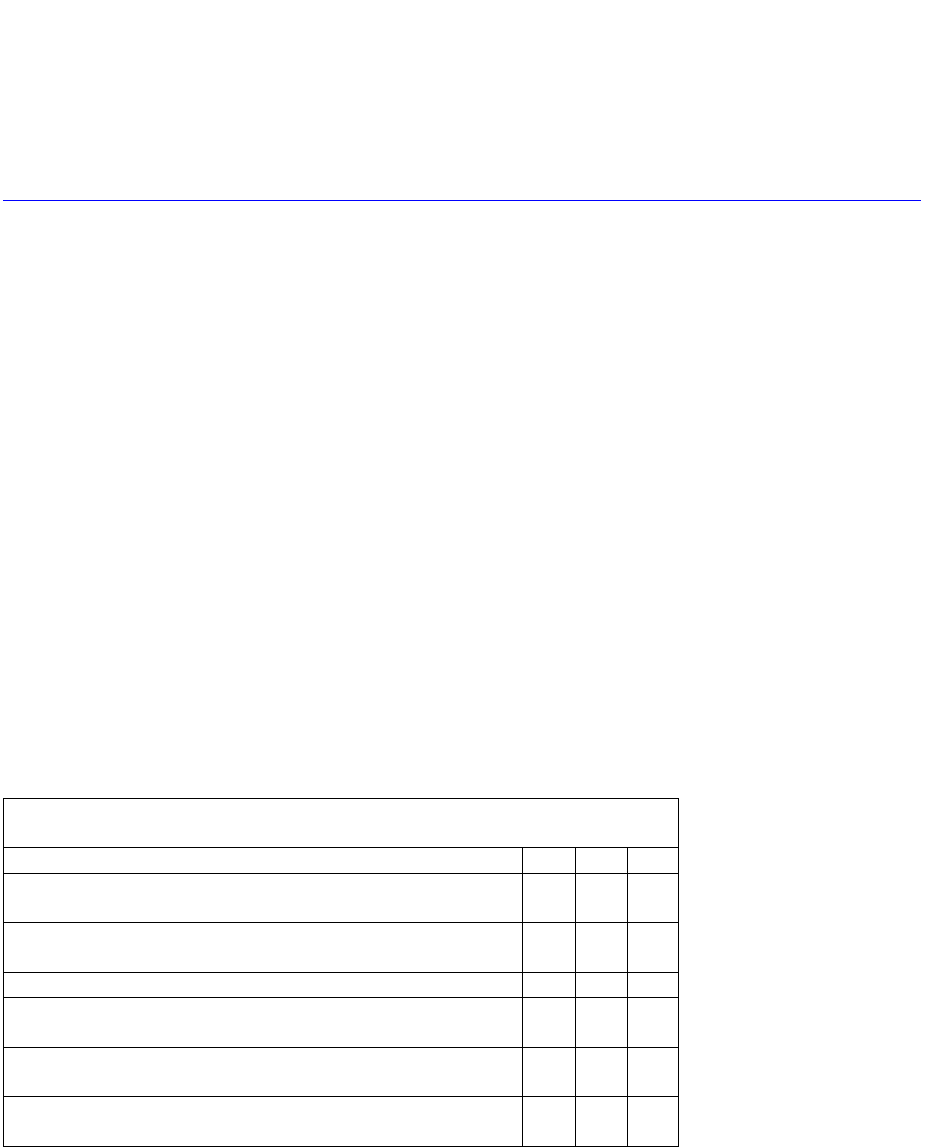
125
With the coming into effect of Bill S-3 in 2019, some persons that were considered FN are
now persons registered under the Indian Act and therefore enter Canada by right. All
enforcement flags against these people should be amended as per the steps above.
Appendix A Memorandum of Understanding between IRCC and
the CBSA
http://atlas/cab-dgsi/res/toolkit-outils/partnership-partenariat/wca-ece/federal/cic/index_eng.asp
Appendix B Quarantine Operations Centres
Public Health Agency of Canada (PHAC)
Quarantine Operations Centres
Effective May 1, 2019, PHAC centralized the management of border and travel health
notifications and the assessment of ill travellers through the new PHAC Notification Line:
languages will be available 24 hours a day, seven days a week.
For more information, refer to People Processing Manual, pt 8, ch. 5.2, Quarantine - Liaison
with the Public Health Agency of Canada.
Appendix C Record of Direct Backs for Refugee Claimants at the
Land Border
Record of Direct Backs for Refugee Claimants at the Land
Border
1
2
3
Name of the refugee claimant
(last name, given name)
GCMS UCI
()
POE
Name of the superintendent who approved the
Direct Back
Reason for directing back under exceptional
circumstances*
Date and time of Direct Back
dd/mm/yy – 00h00
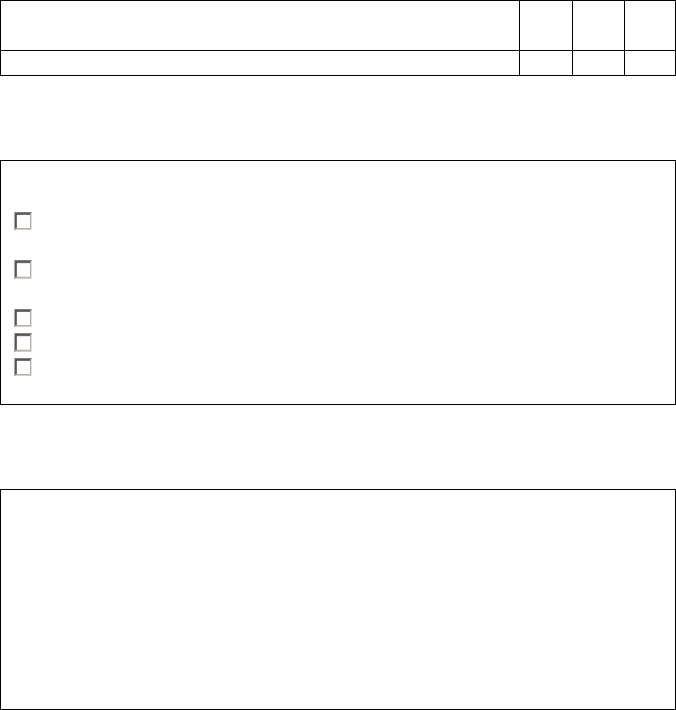
126
Scheduled date of return
dd/mm/yy
Remarks
Have you considered the following arrangements before
directing the refugee claimant back?
Making arrangements to reduce the waiting time for the
refugee claimant by:
Invoking overtime hours for border services officers to
process a claim
Calling in border services officers from a nearby POE
Using the telephone translation service
Detaining the claimant, if grounds to detain exist, to complete
the examination
*Exceptional circumstances are defined as situations where all
the procedures outlined above have been considered and an
examination still cannot be conducted. The well-being of the
claimant should be considered in conjunction with the impact on
POE operations. When it has been determined that a case can
be substantiated as an exceptional circumstance, the border
services officer must obtain approval from the POE
superintendent before directing a refugee claimant back to the
United States.

127
Appendix D Temporary resident permit (TRP) annual
compliance review and checklist
Annual TRP compliance review
In January of each year, Regional Programs Officers in each region will select 10 TRPs
issued over the course of the previous calendar year. The TRPs will be reviewed for inclusion
of the mandatory elements explained in section 15.5. The results of the review are to be
submitted to HQ by the end of the January that the review is taking place. (ie. In January of
2025, select 10 TRPs issued throughout all of 2024. The results are to be submitted by the
end of January, 2025).
Included in the review is a check that anyone making decisions under a delegated authority
or performing the functions of a Minister’s Delegate must have successfully completed the
training prescribed to those positions before exercising their authority as per section and the
Agency’s National Training Standards.
The Apollo folder with the instructions and required material for the review can be found
here: Annual TRP Compliance Review
TRP file checklist
A short form checklist to assist with ensuring file completion can be found here:
TRP Checklist
*This is not used for the compliance review process noted above
